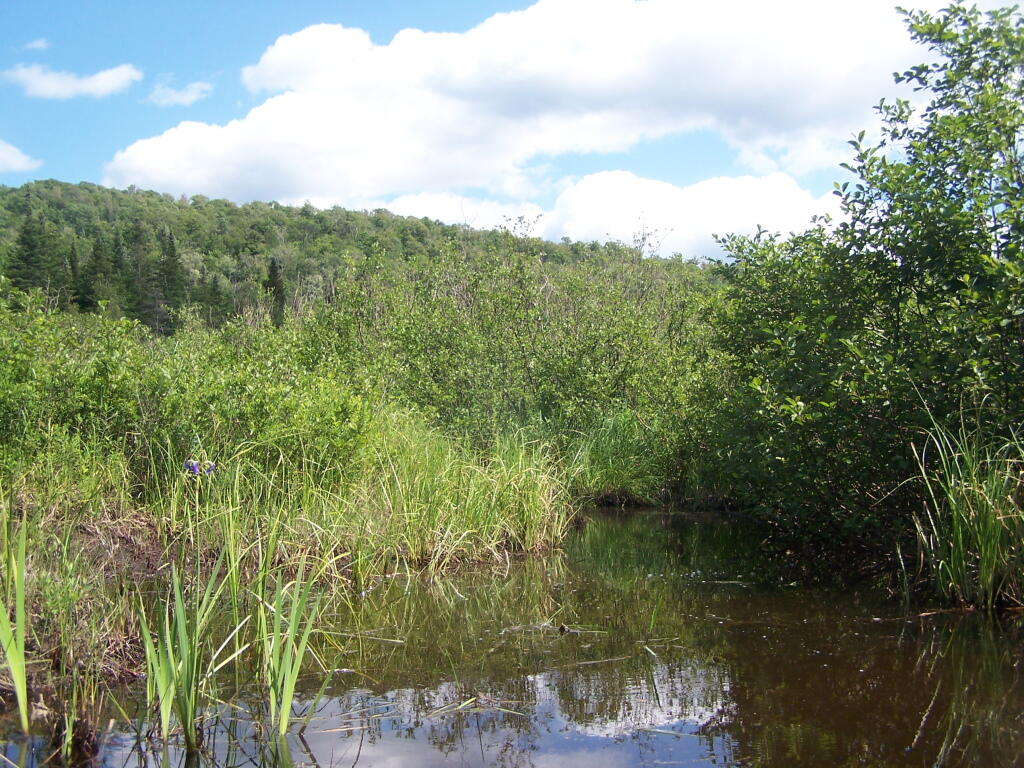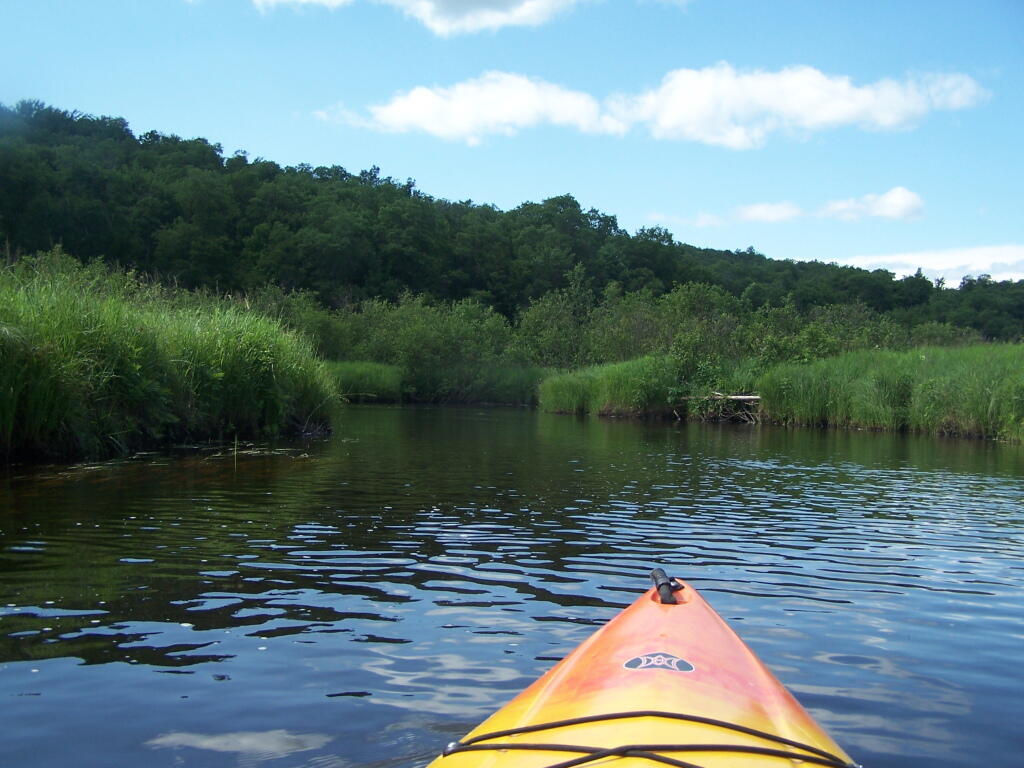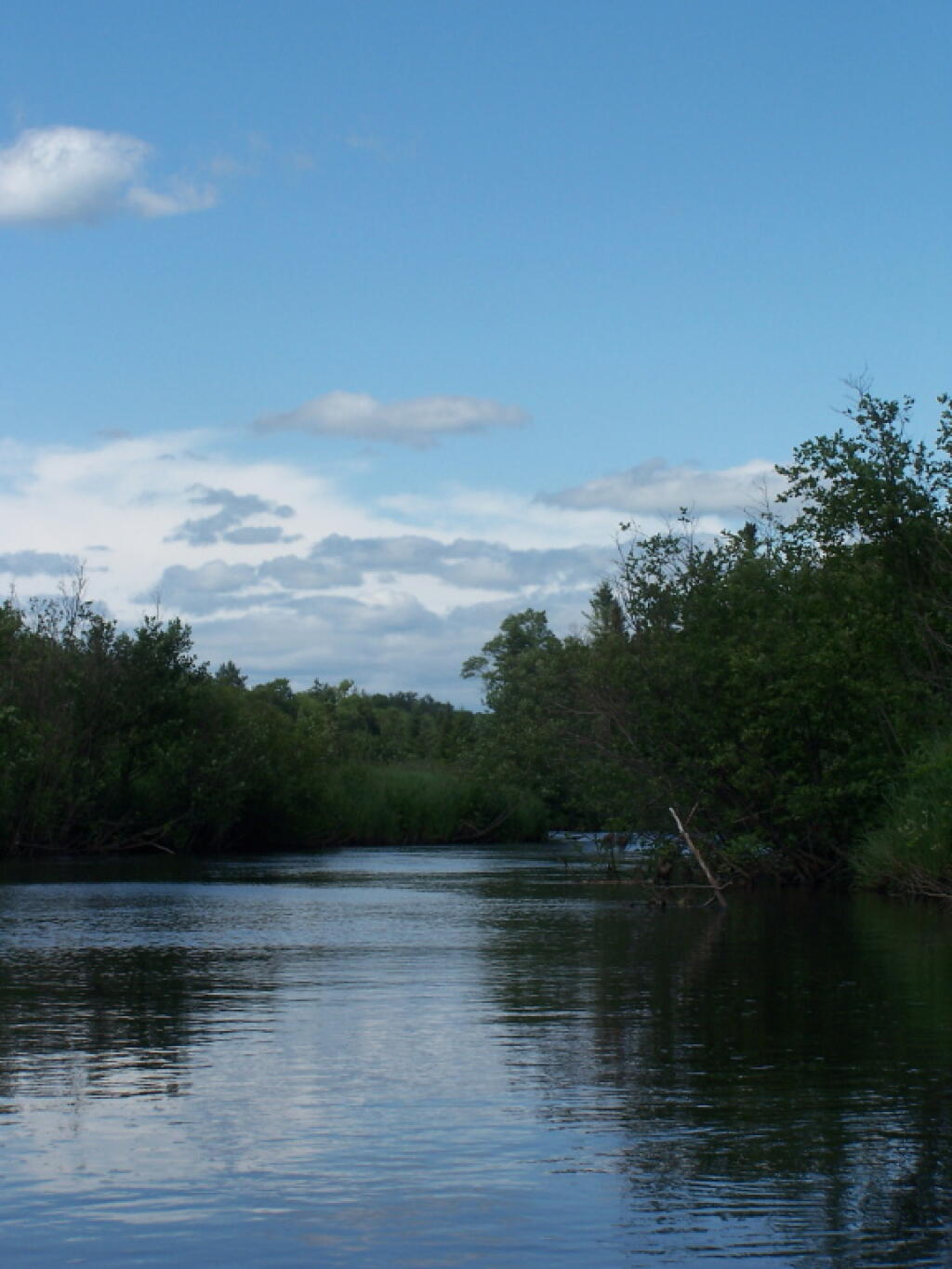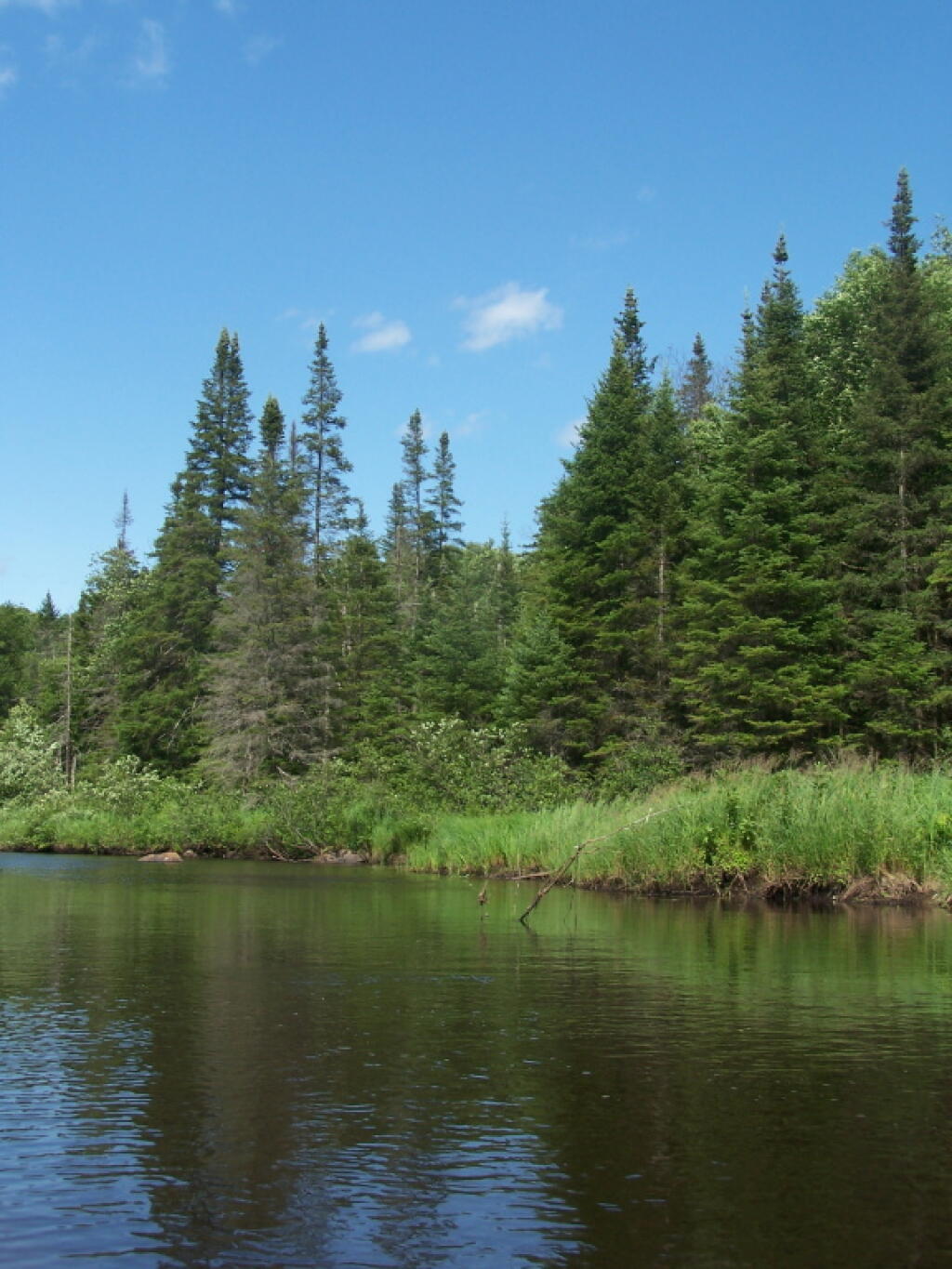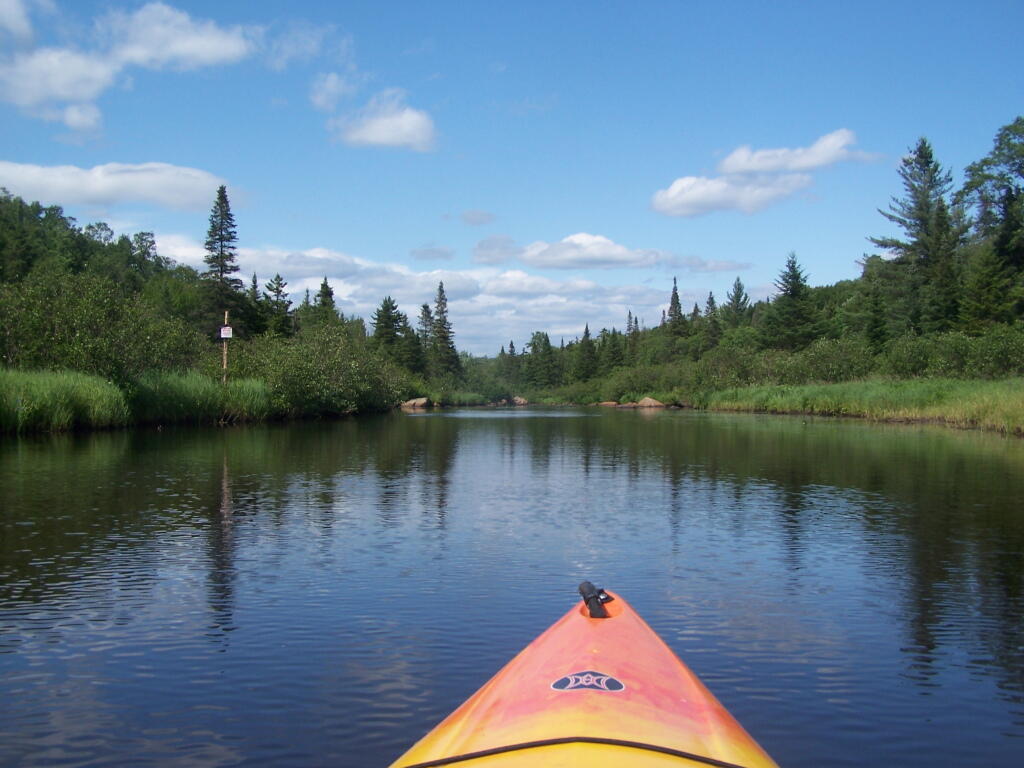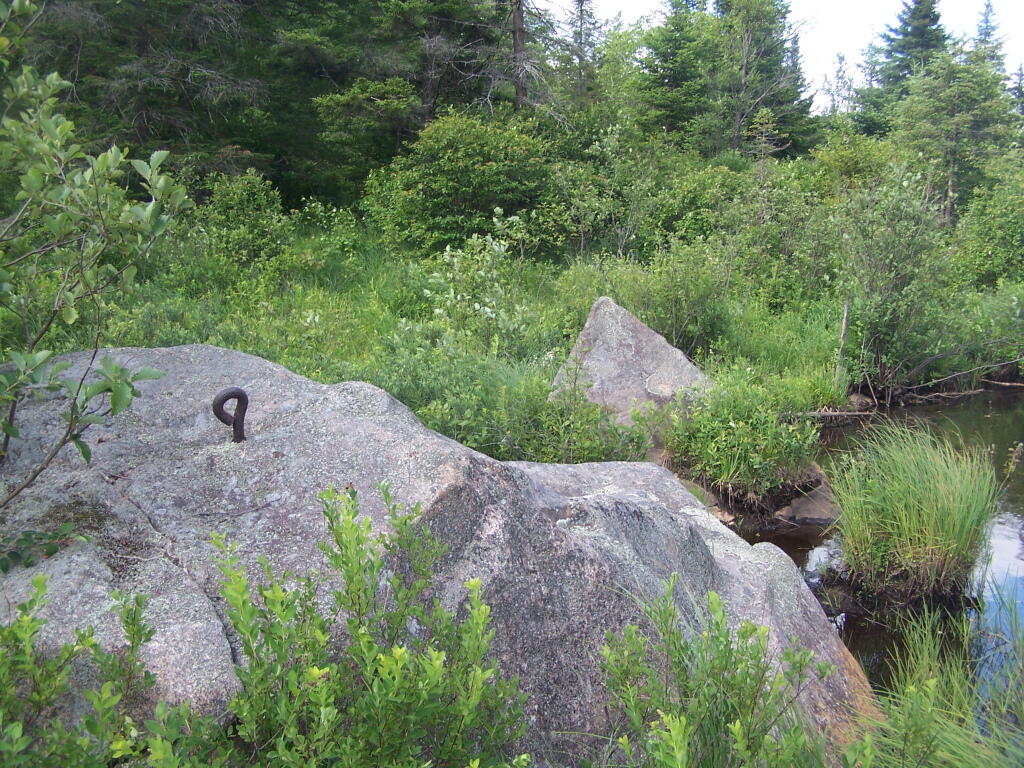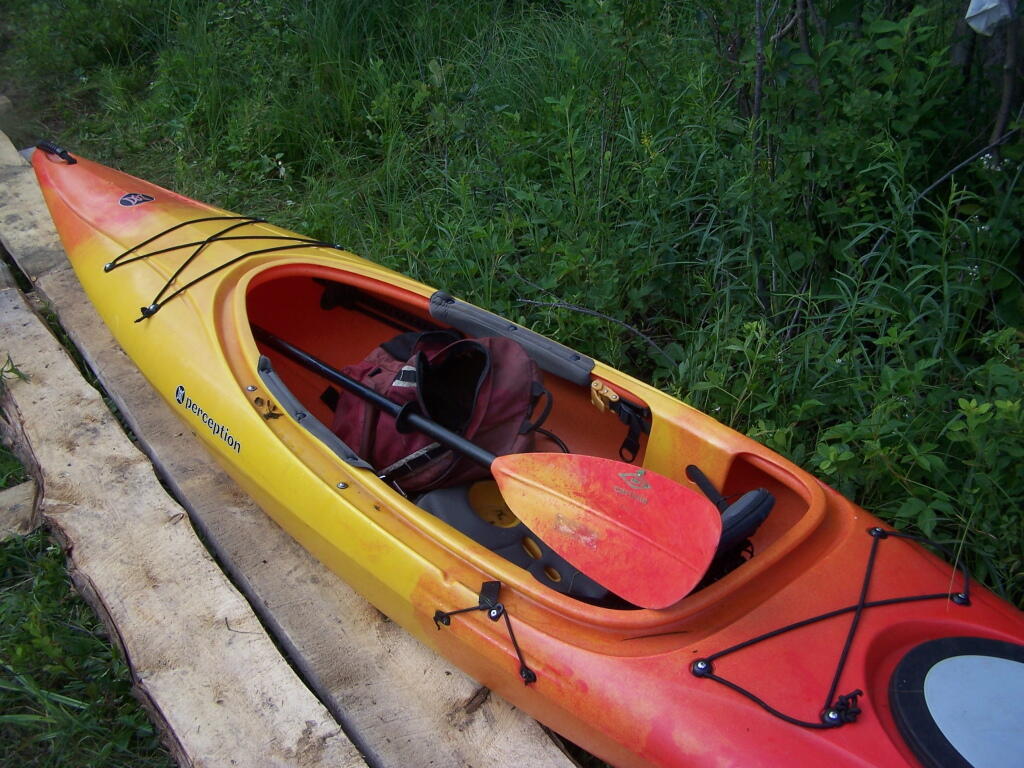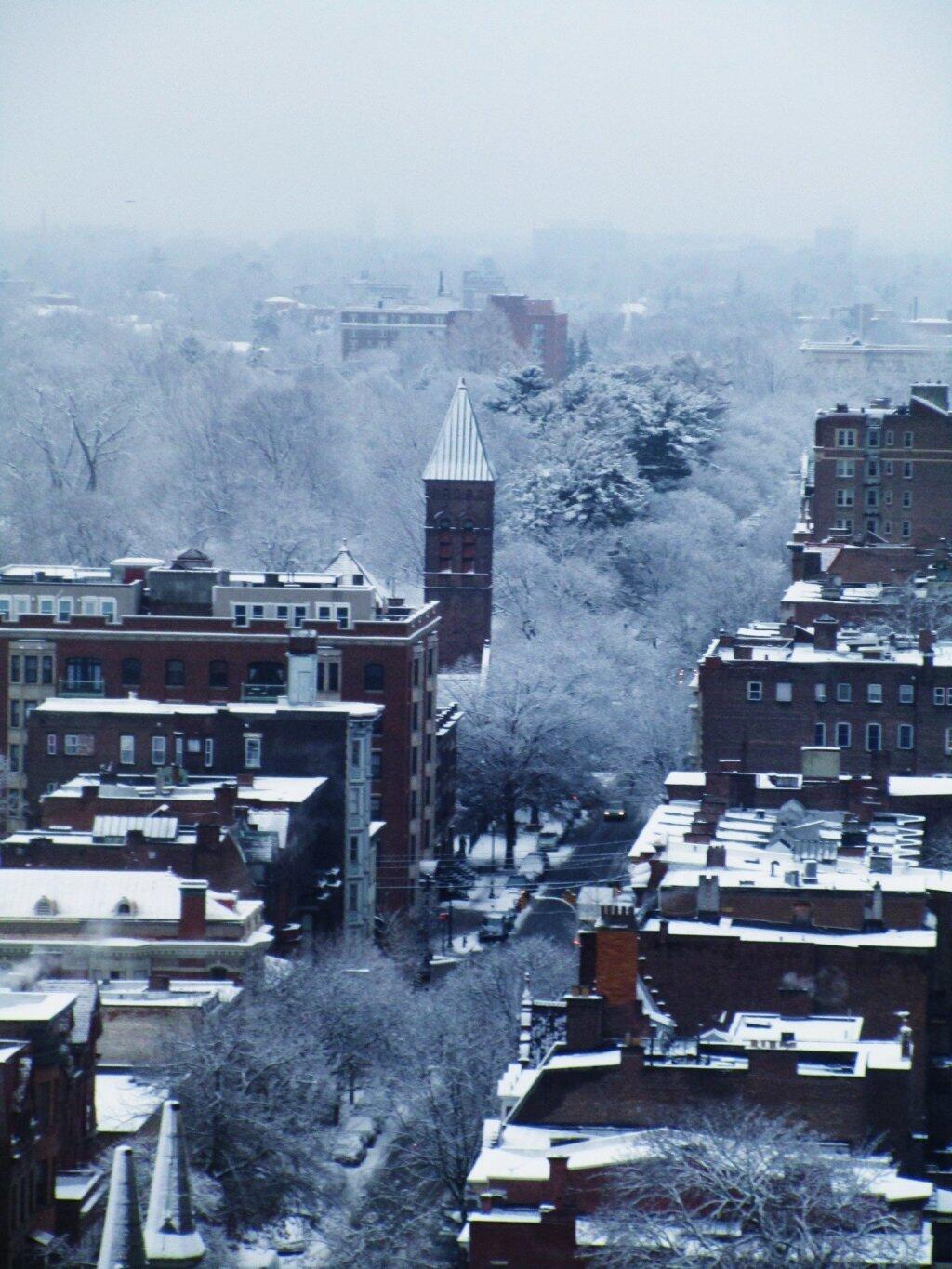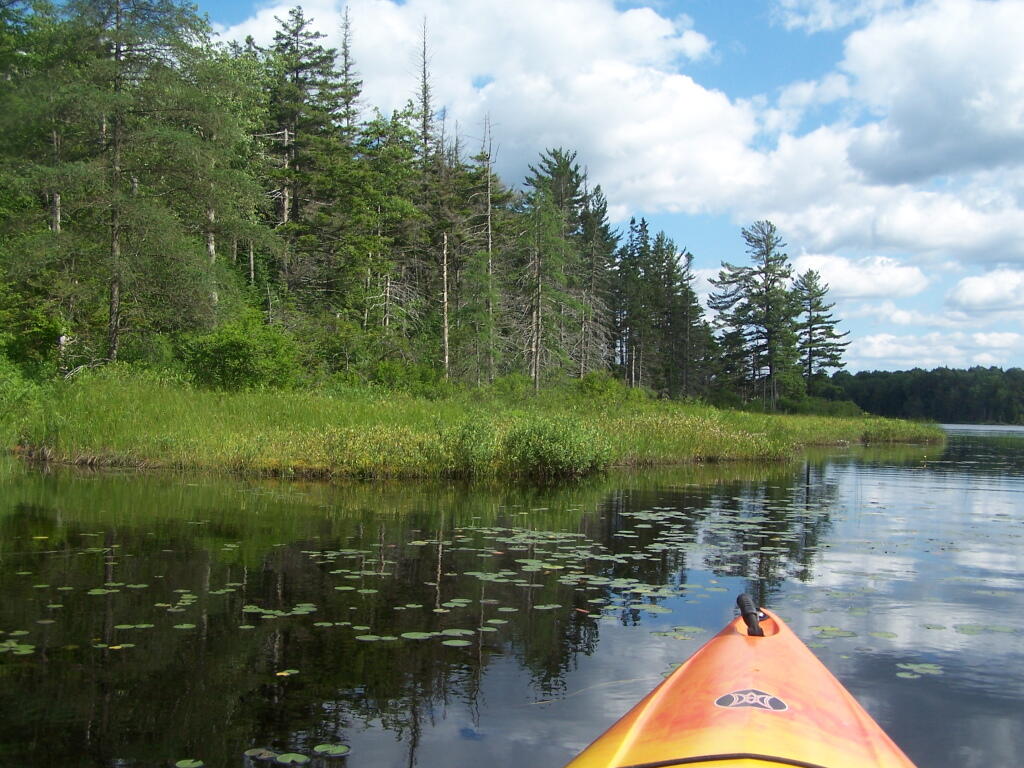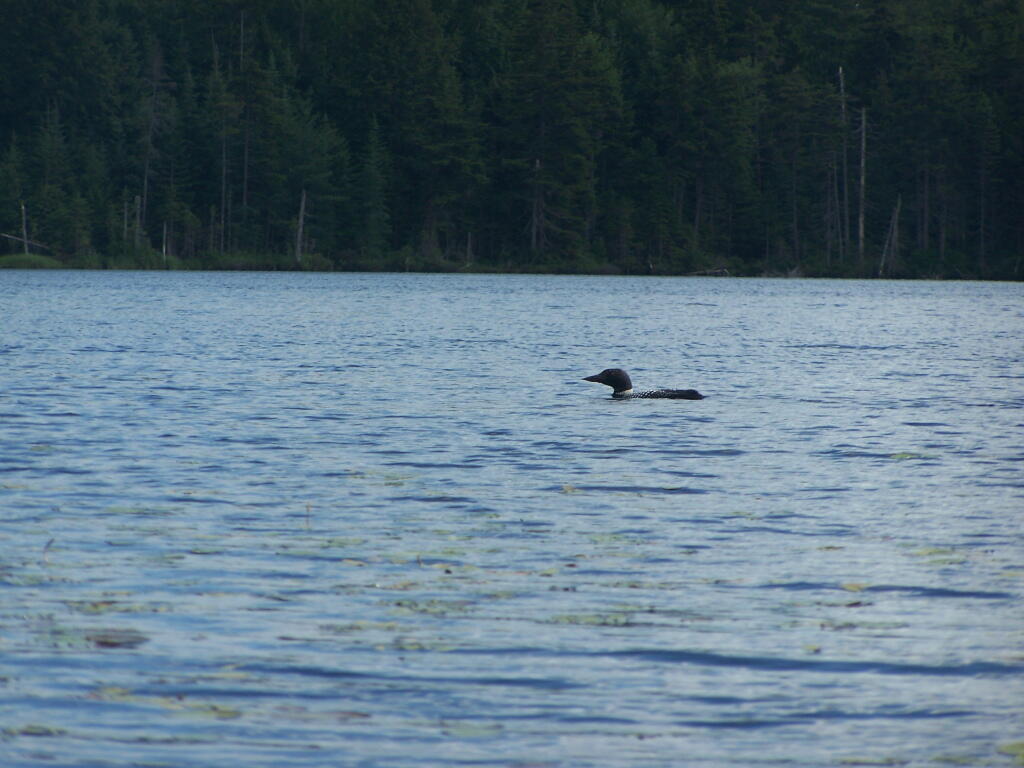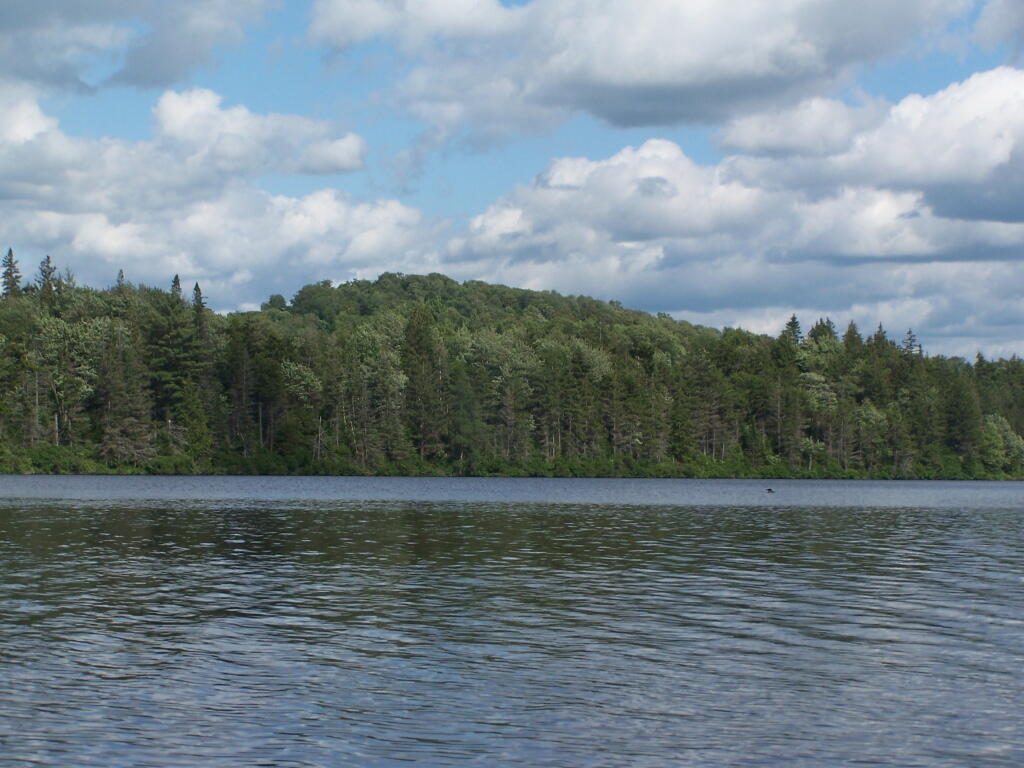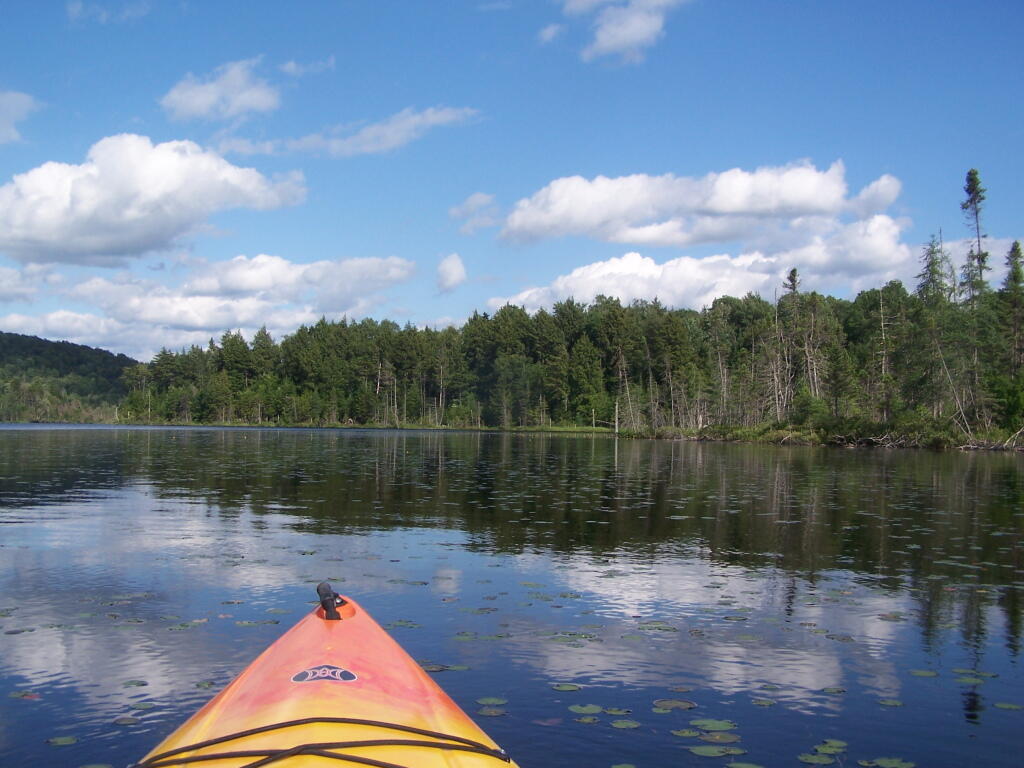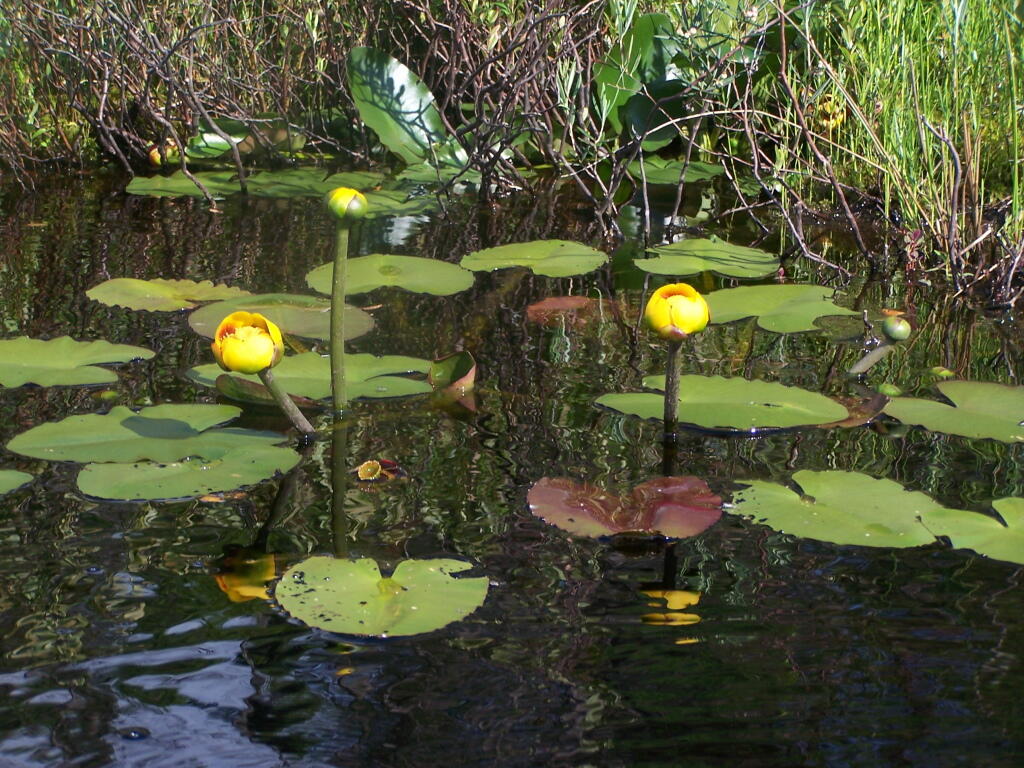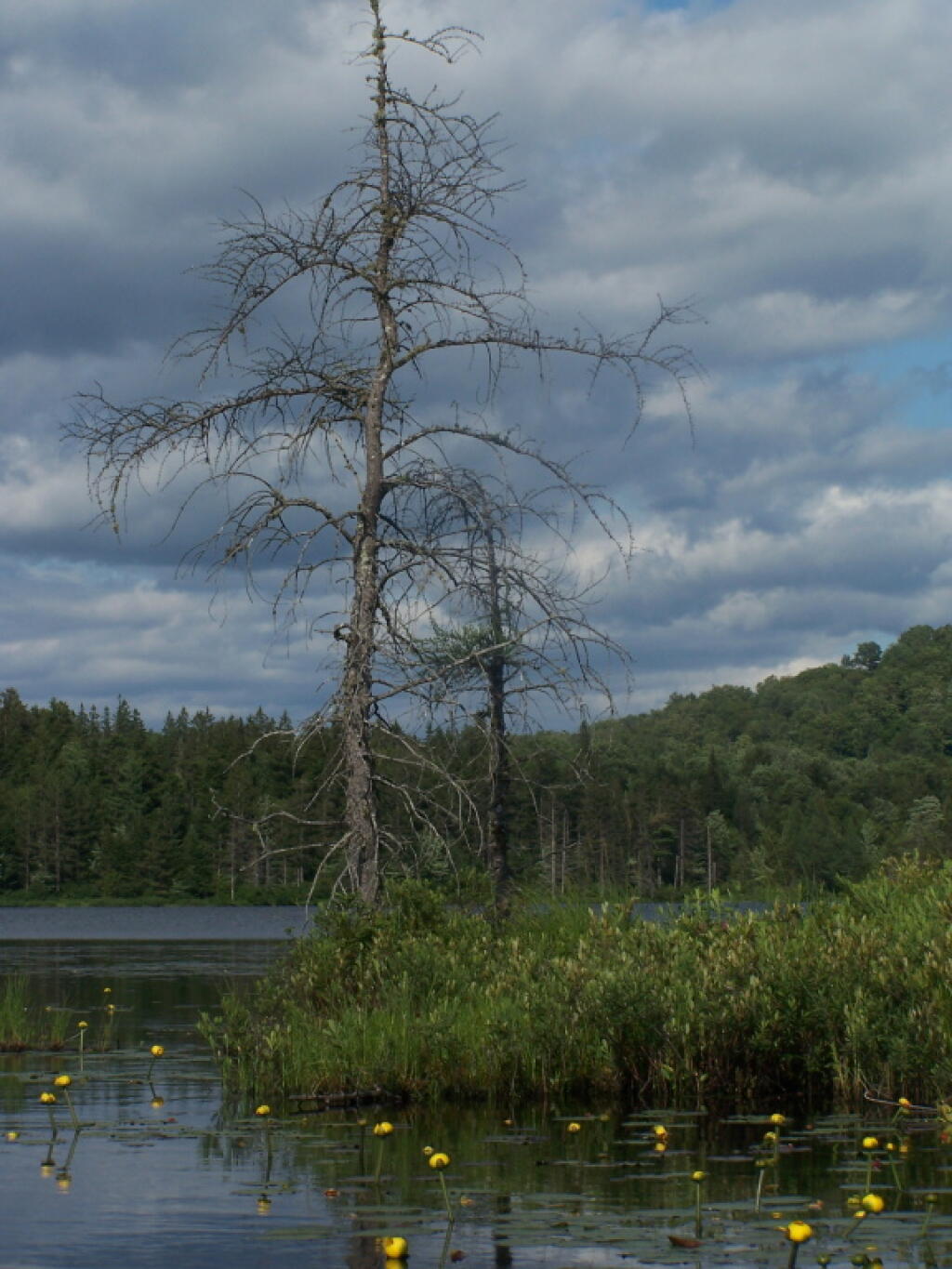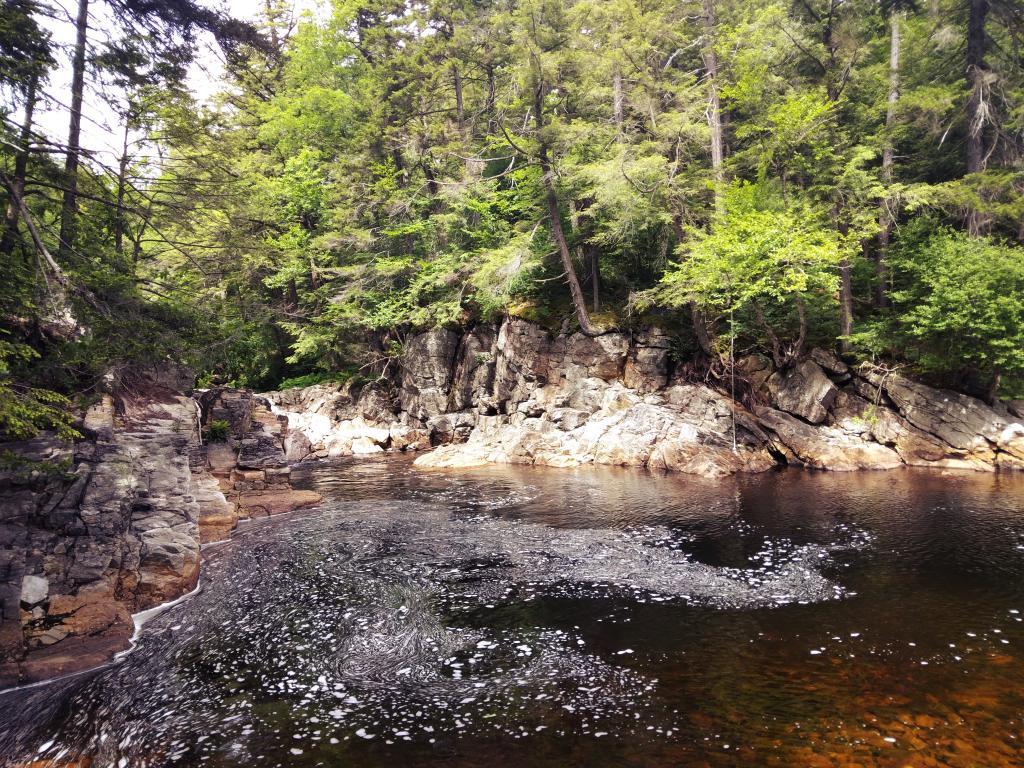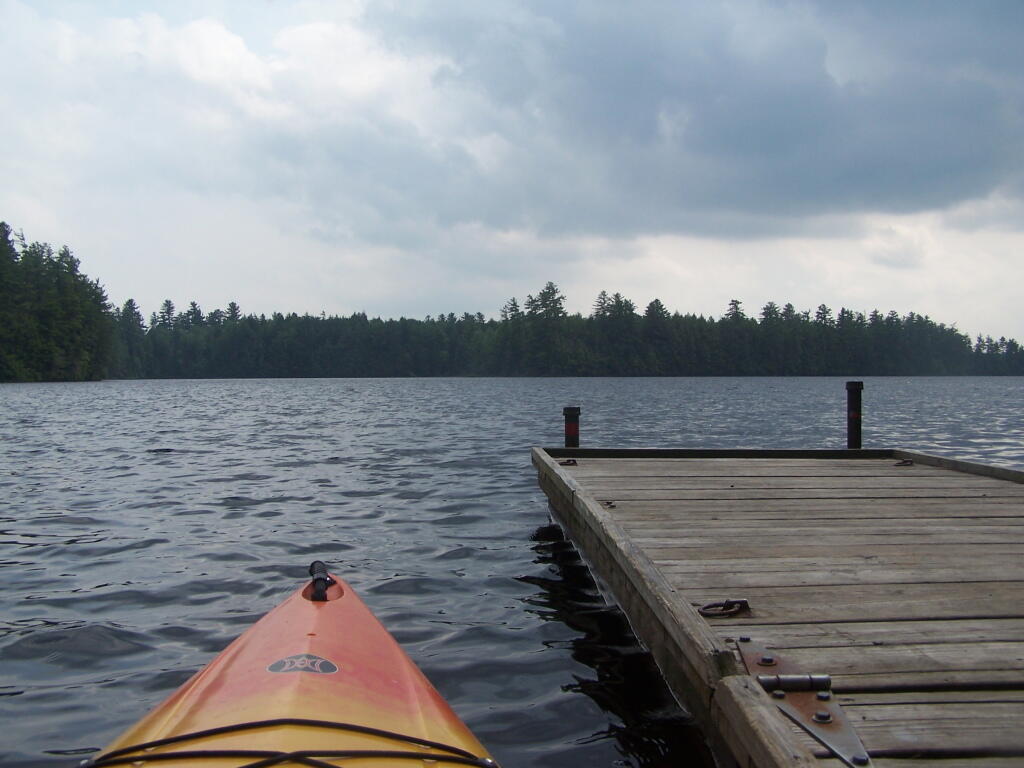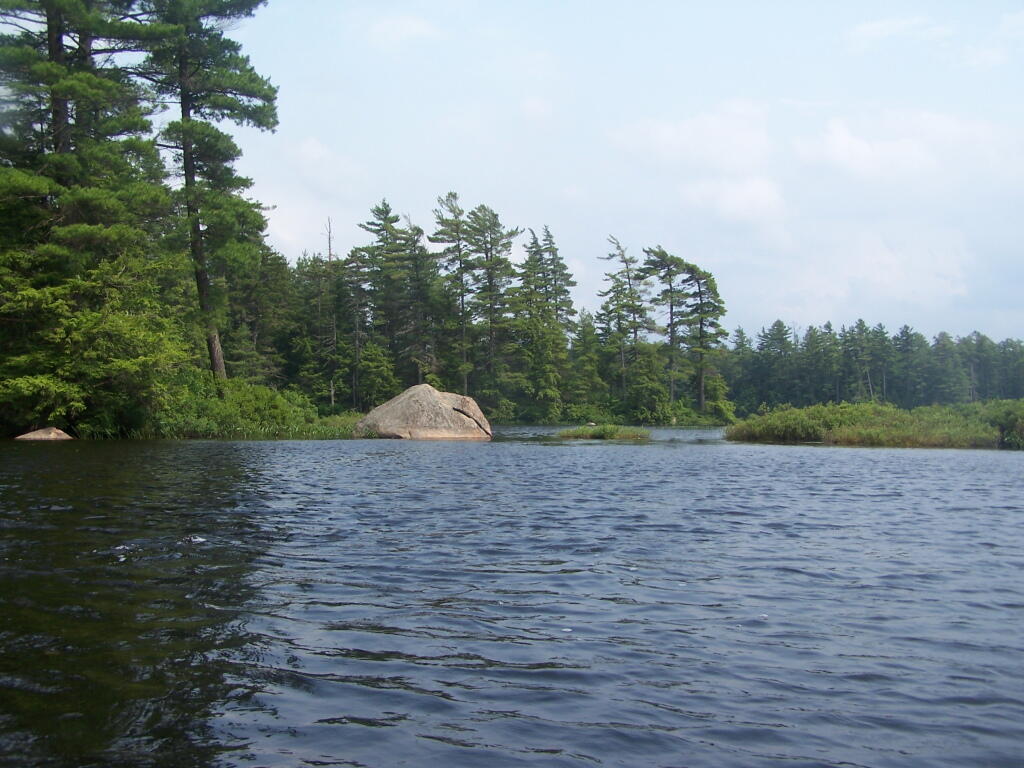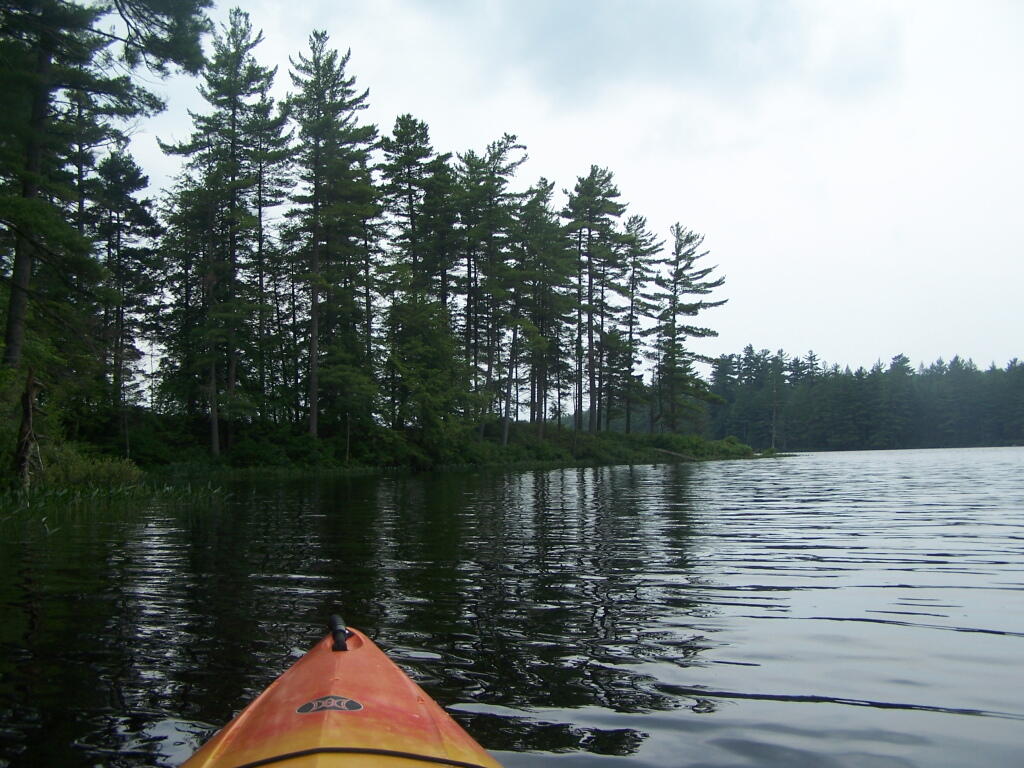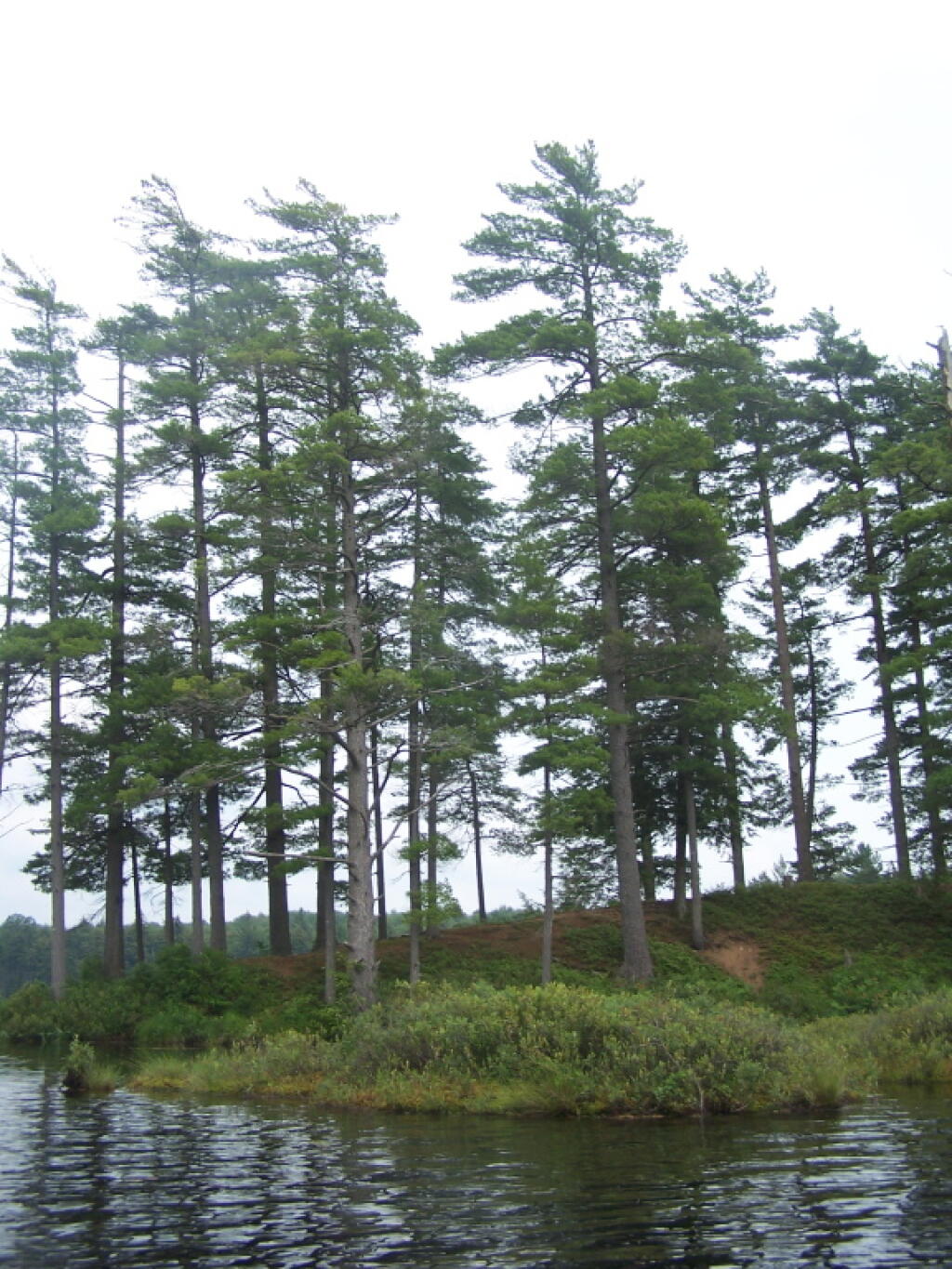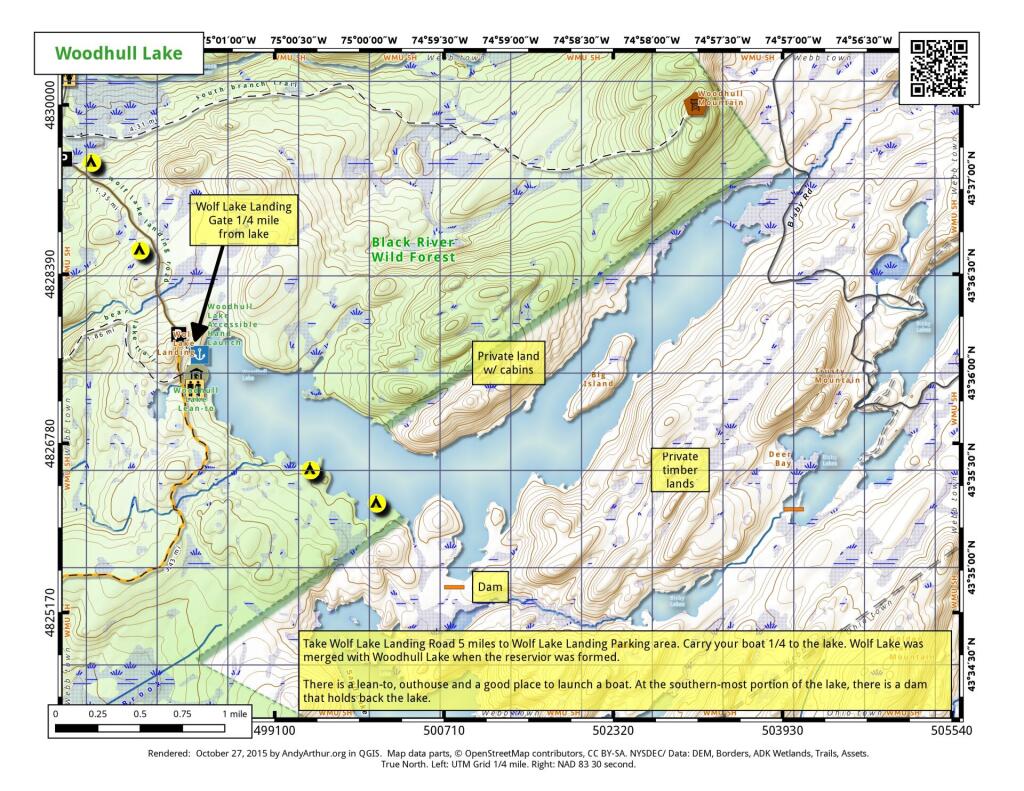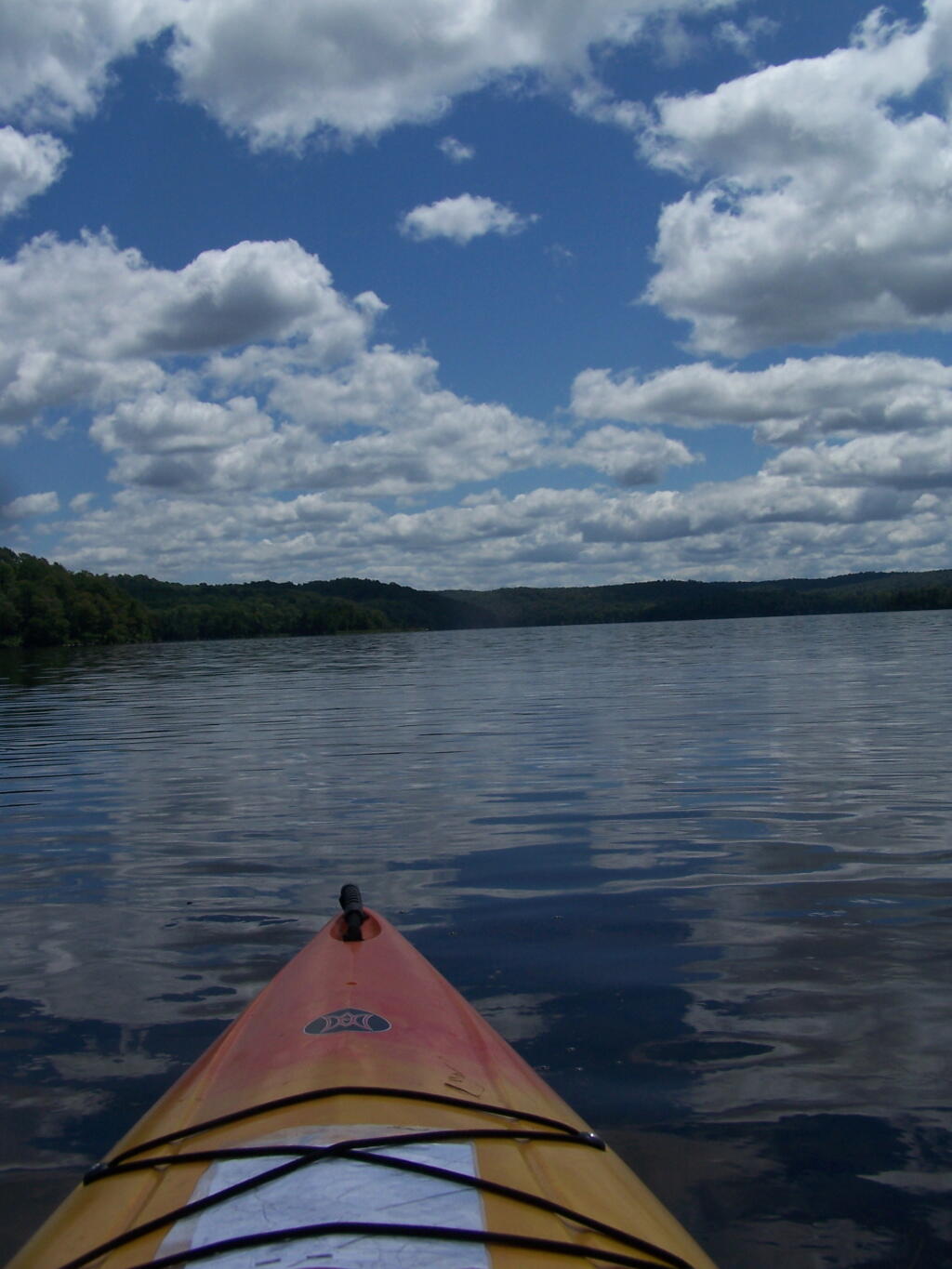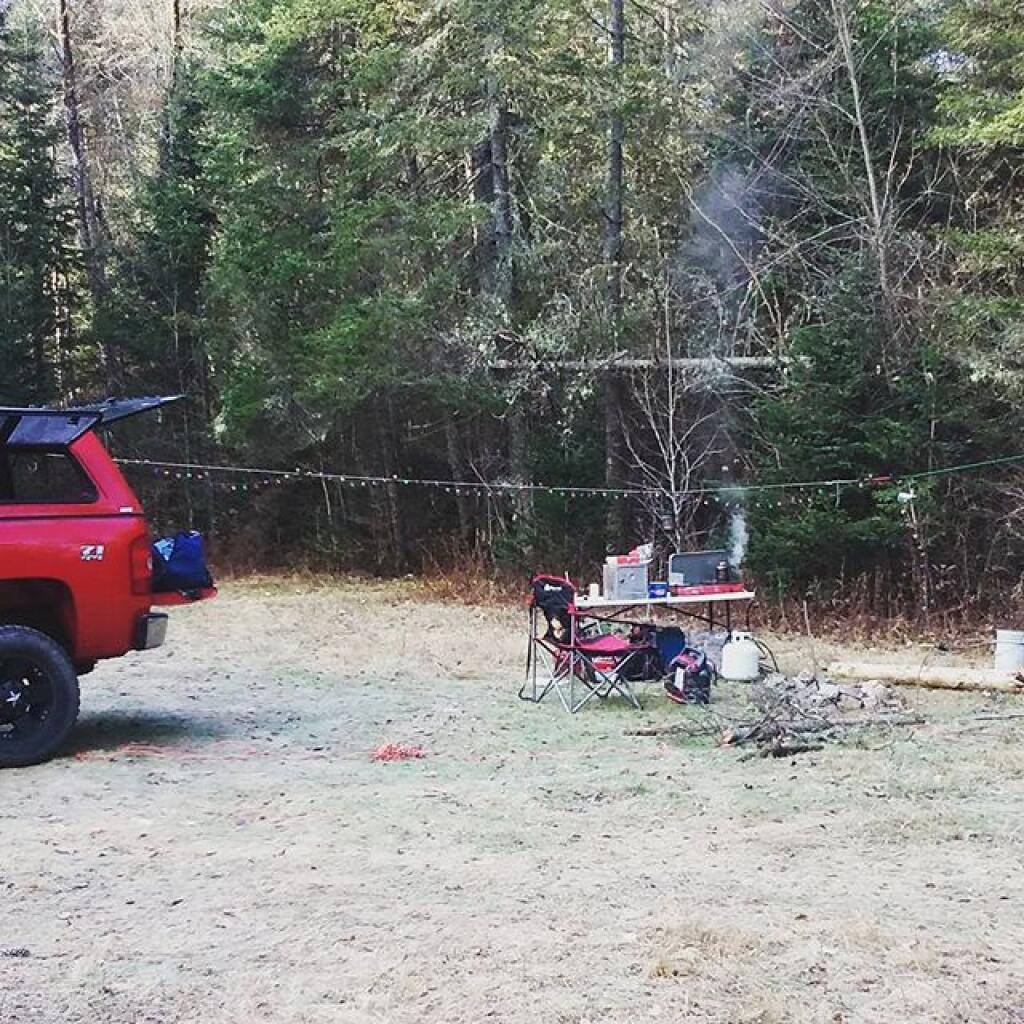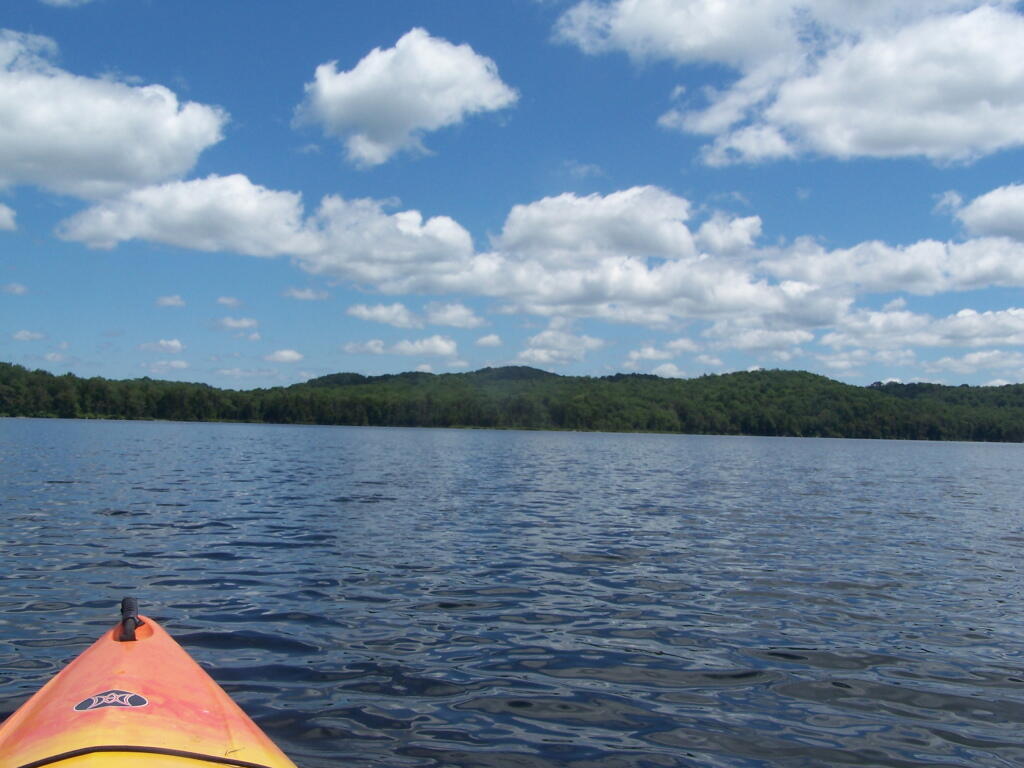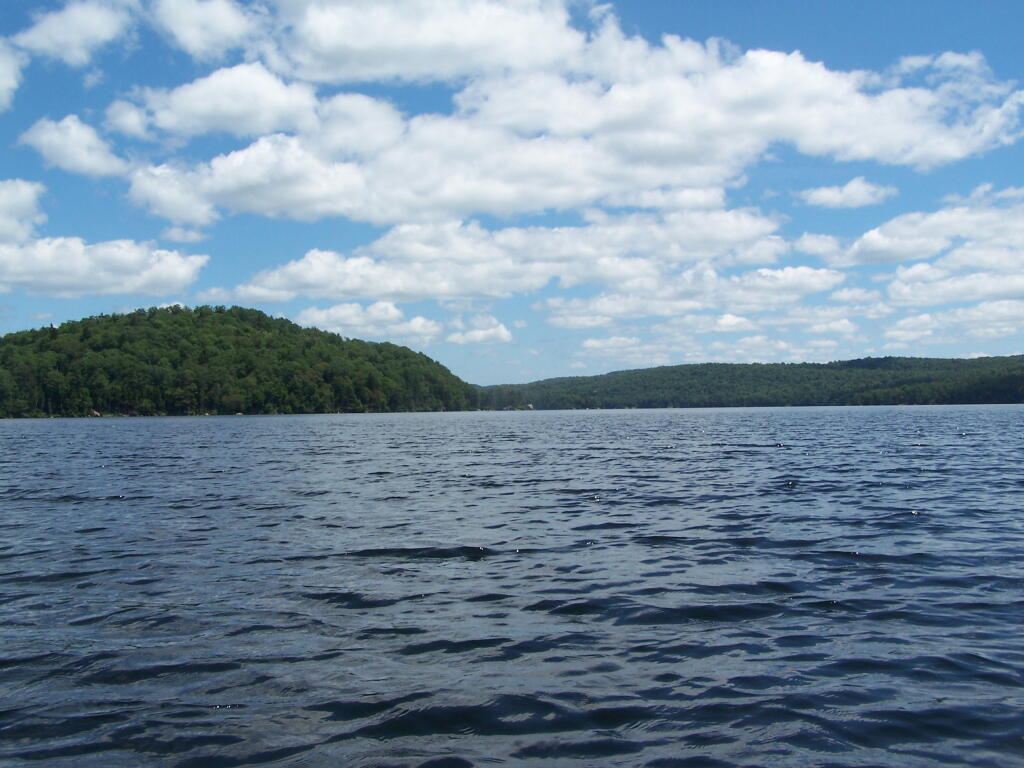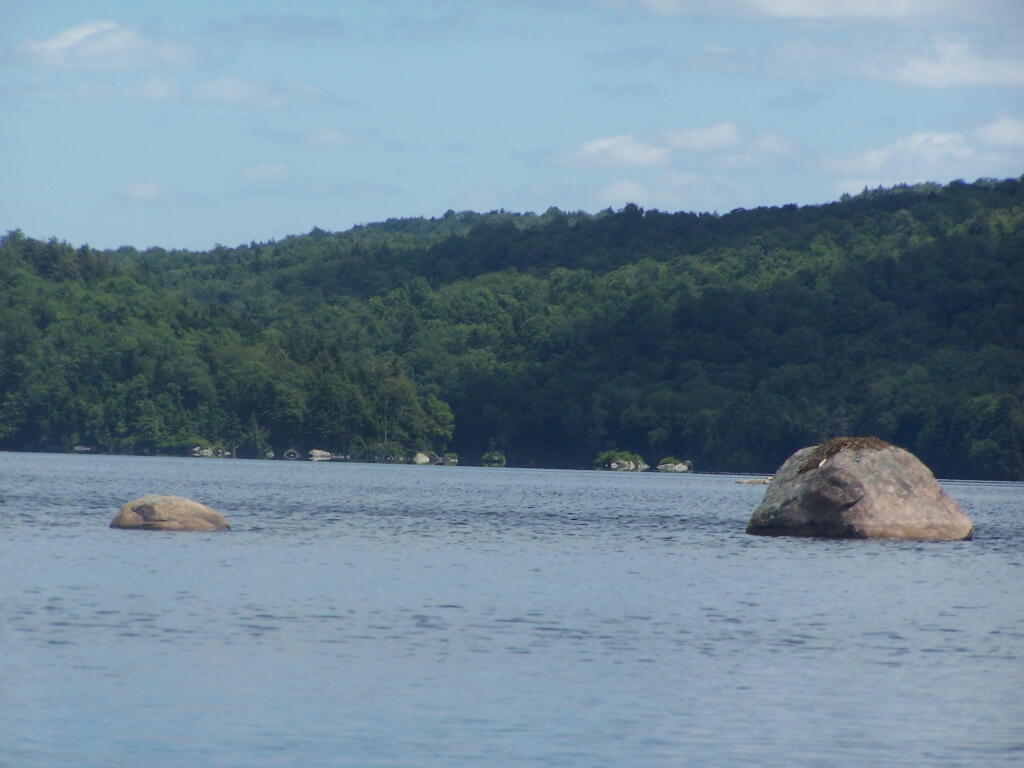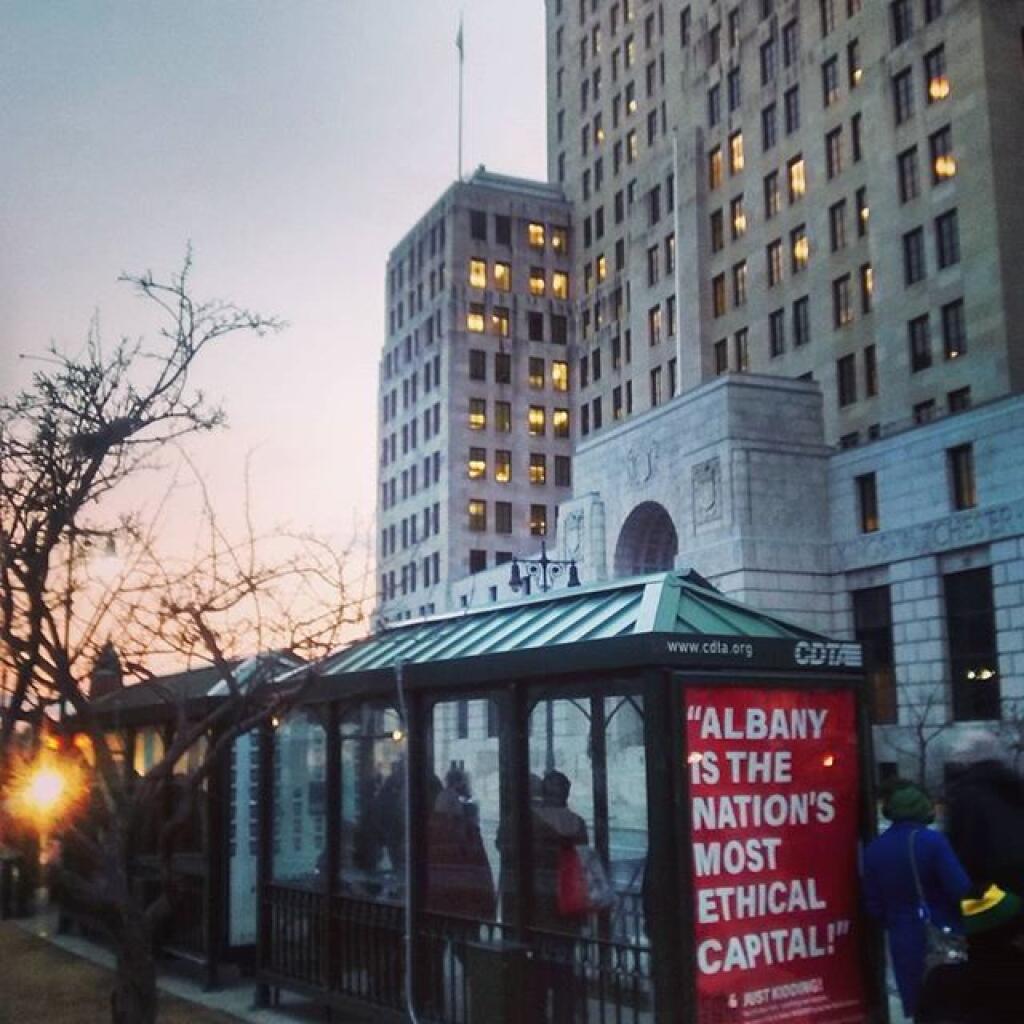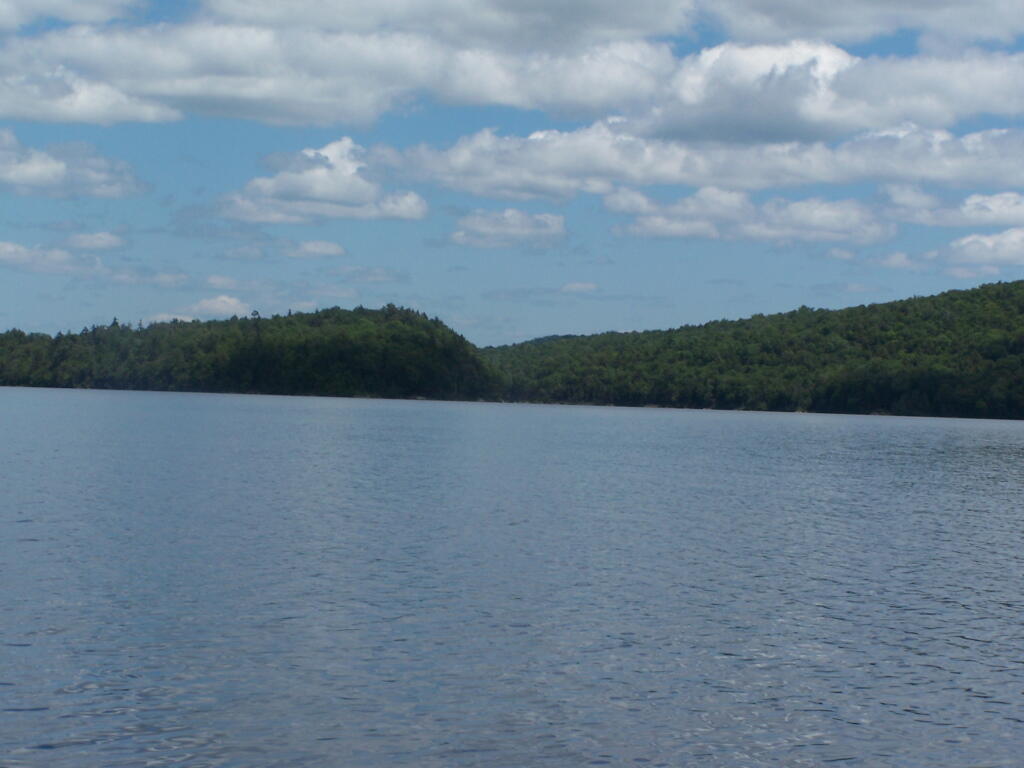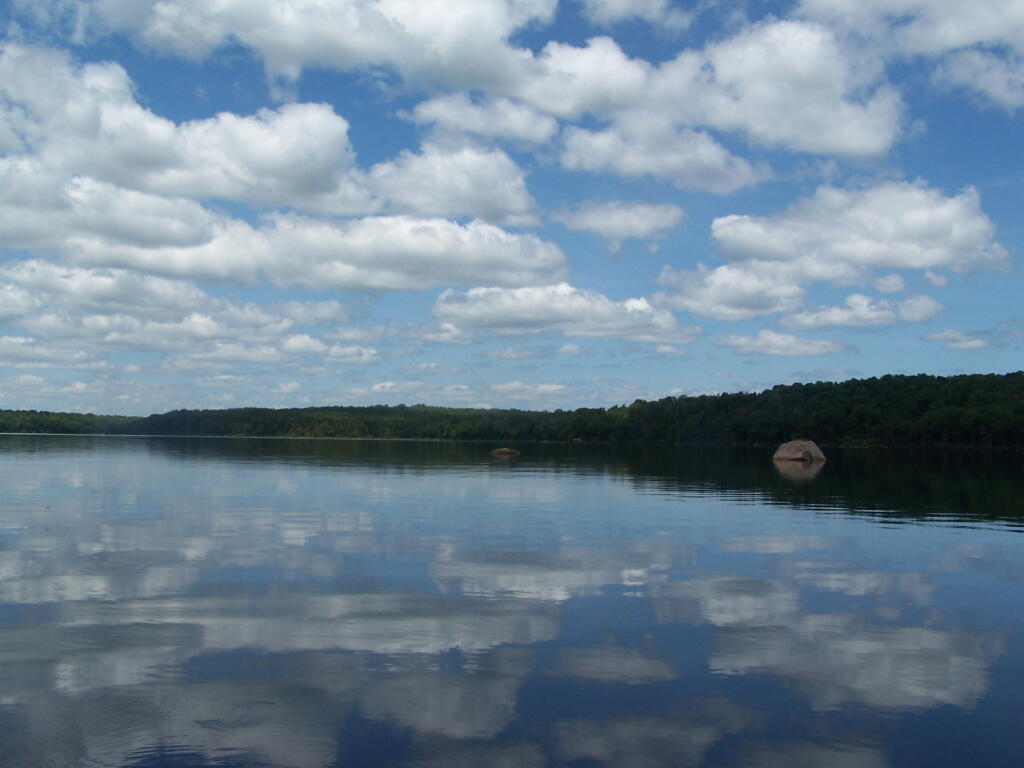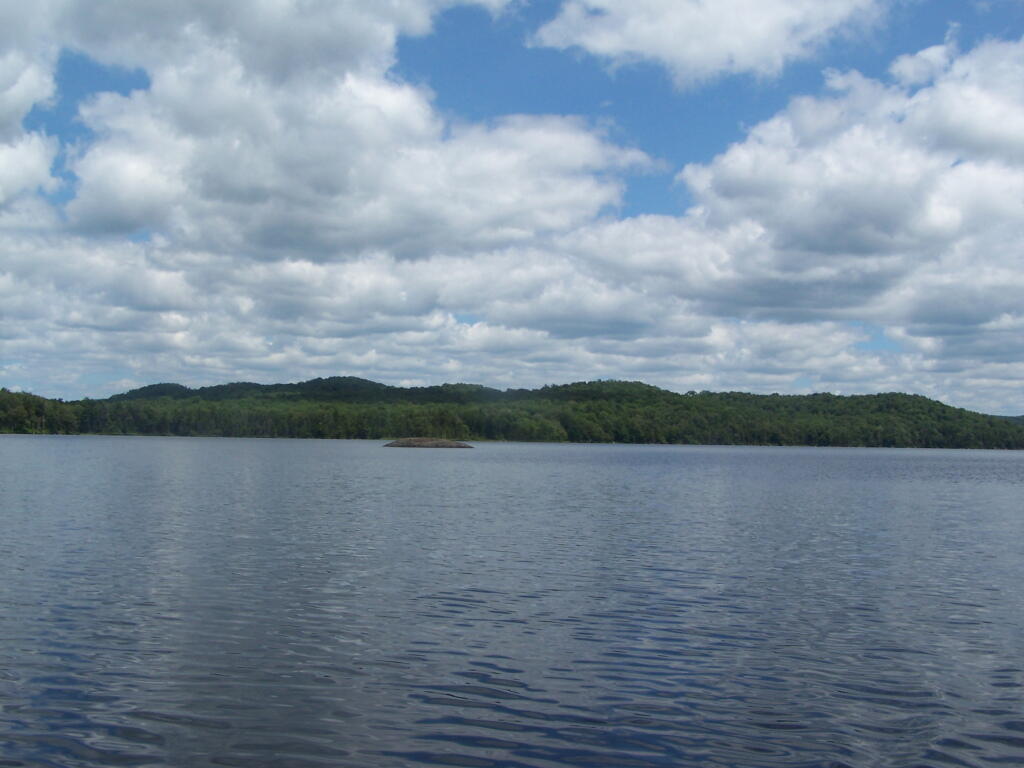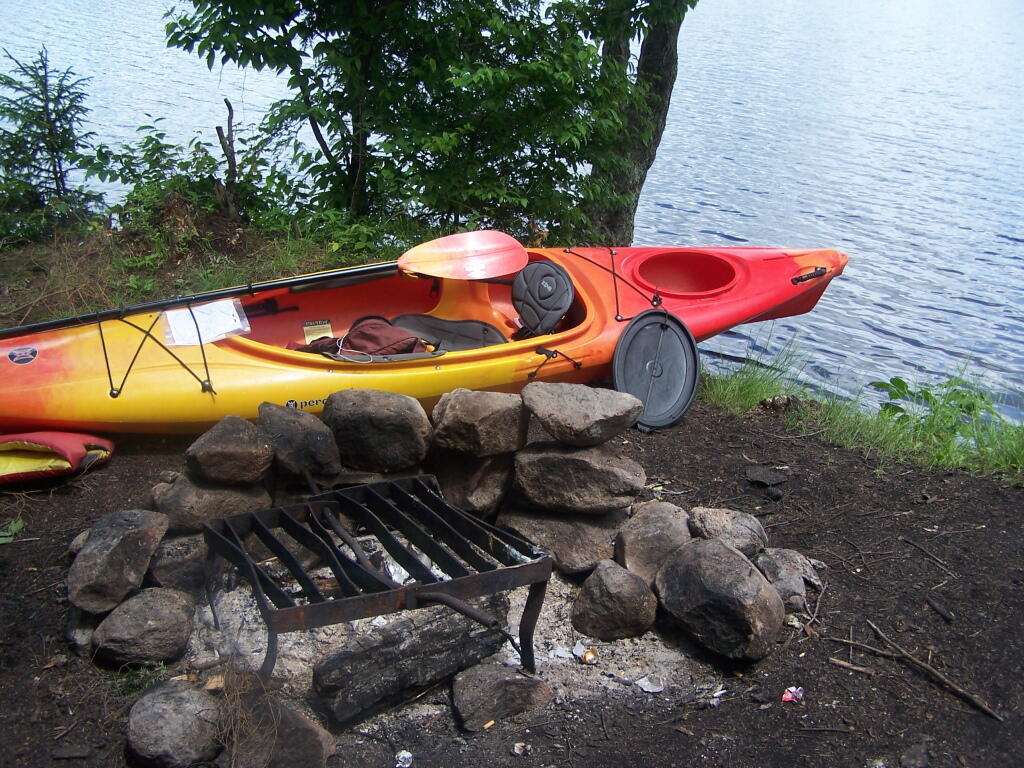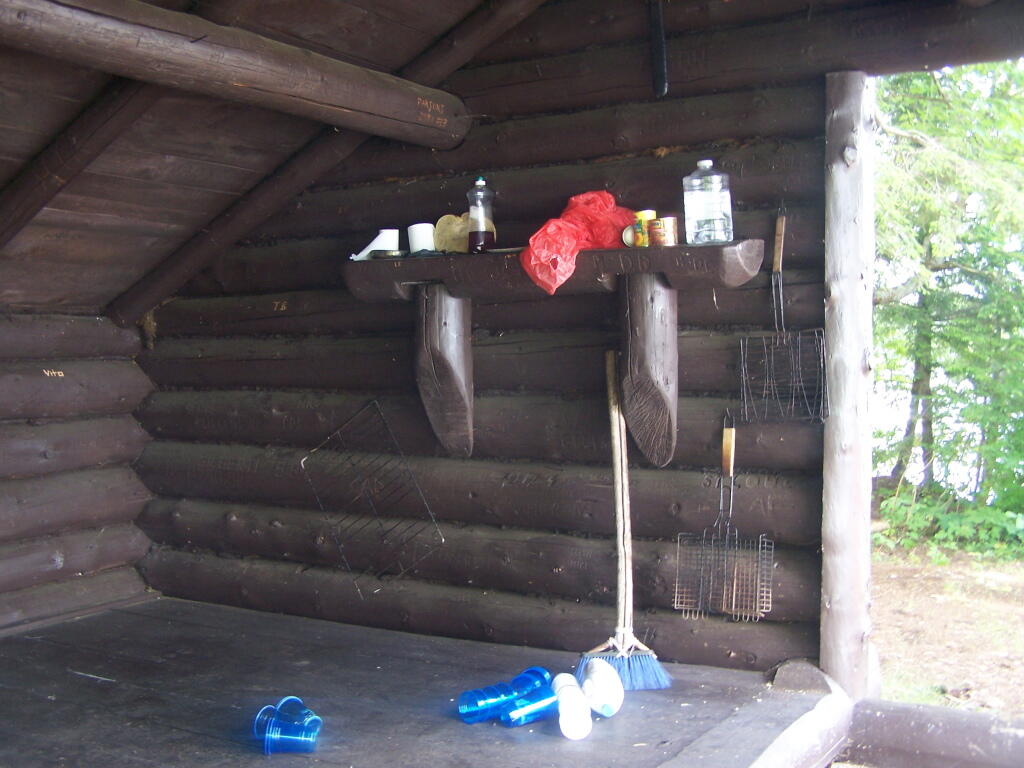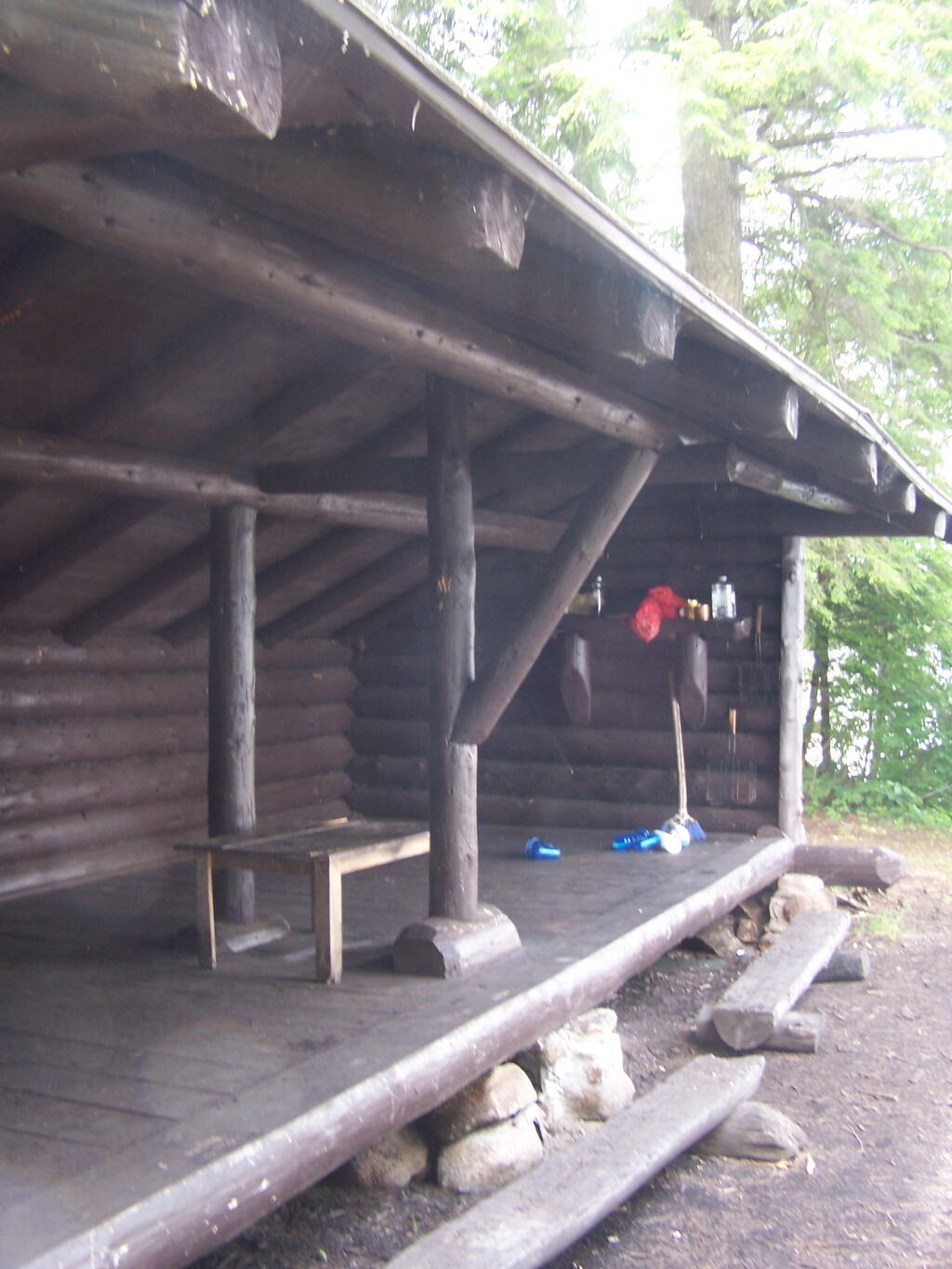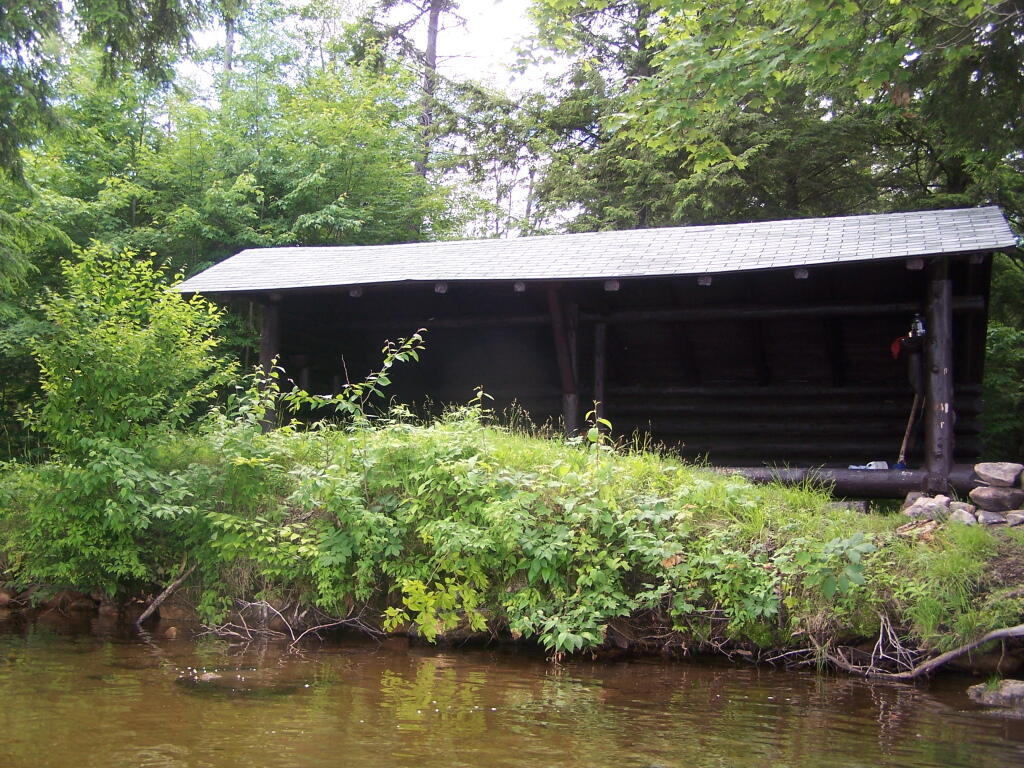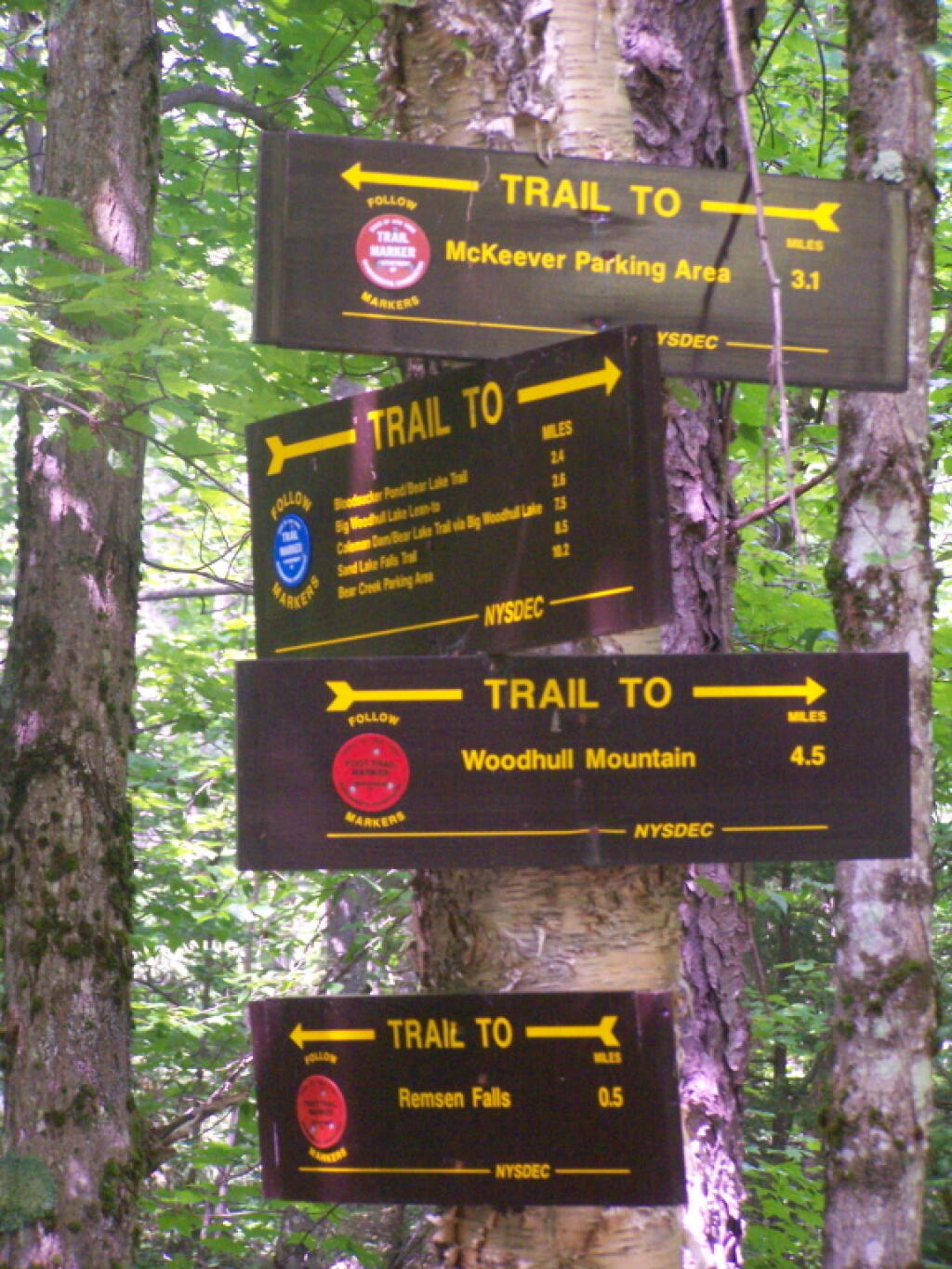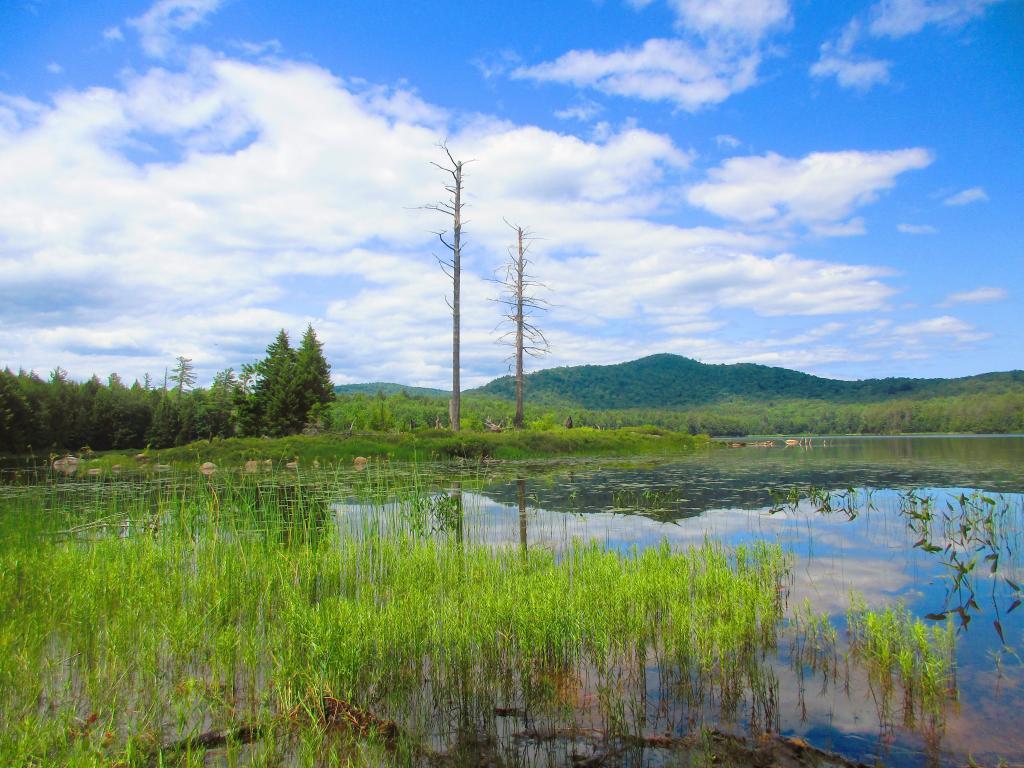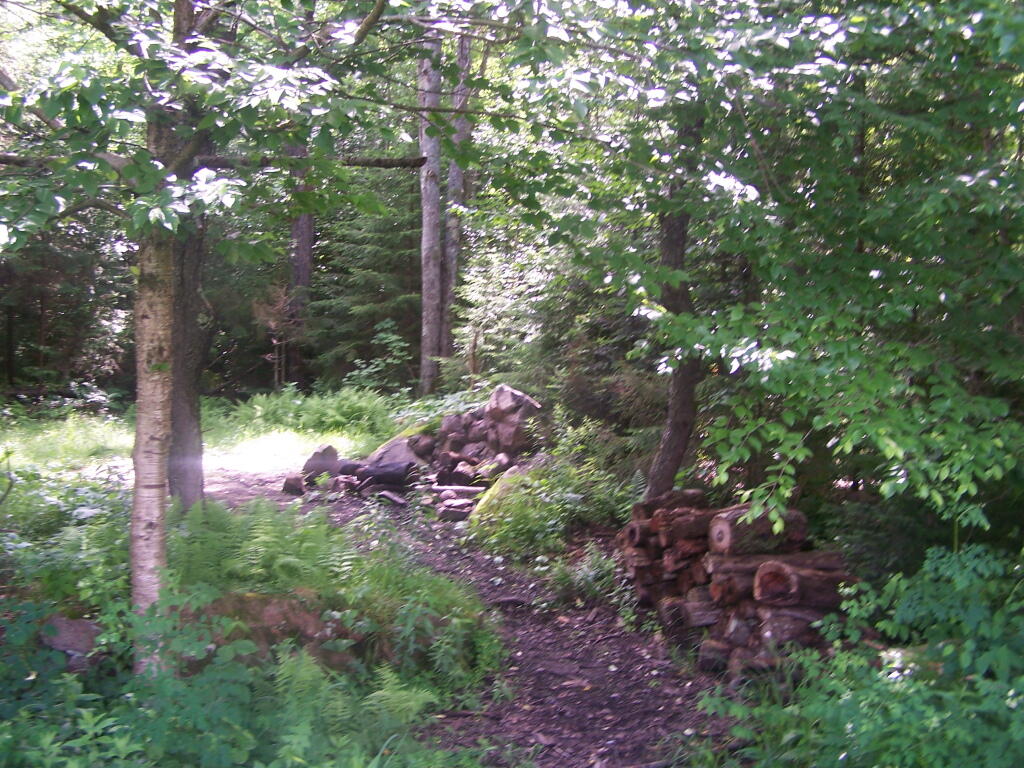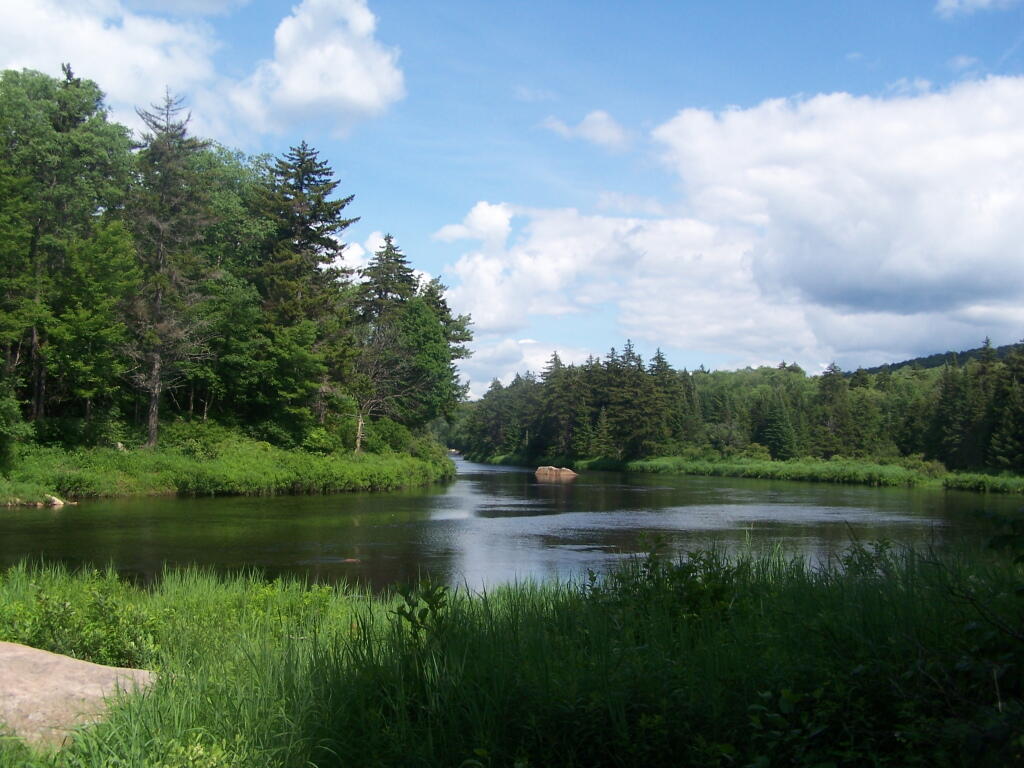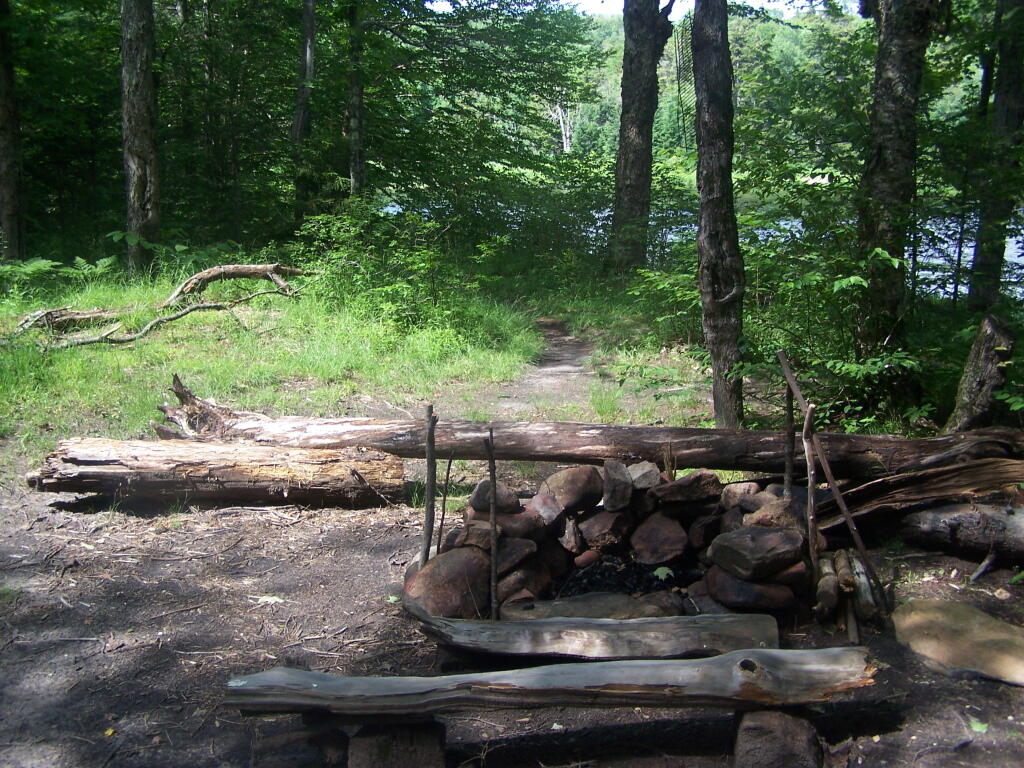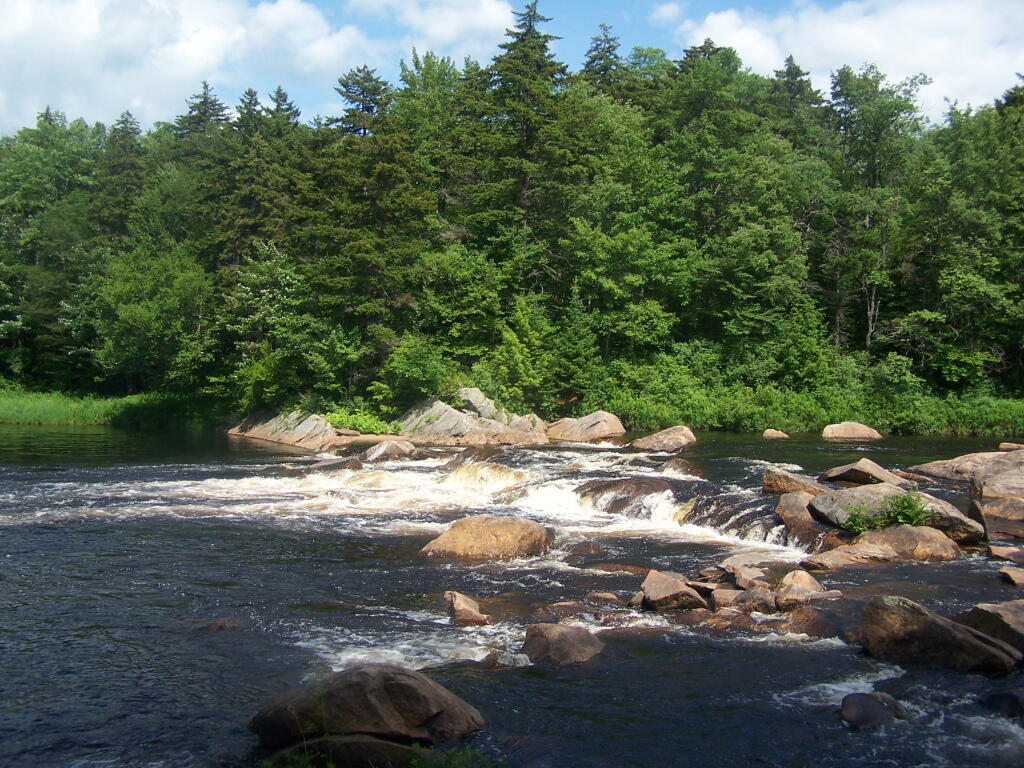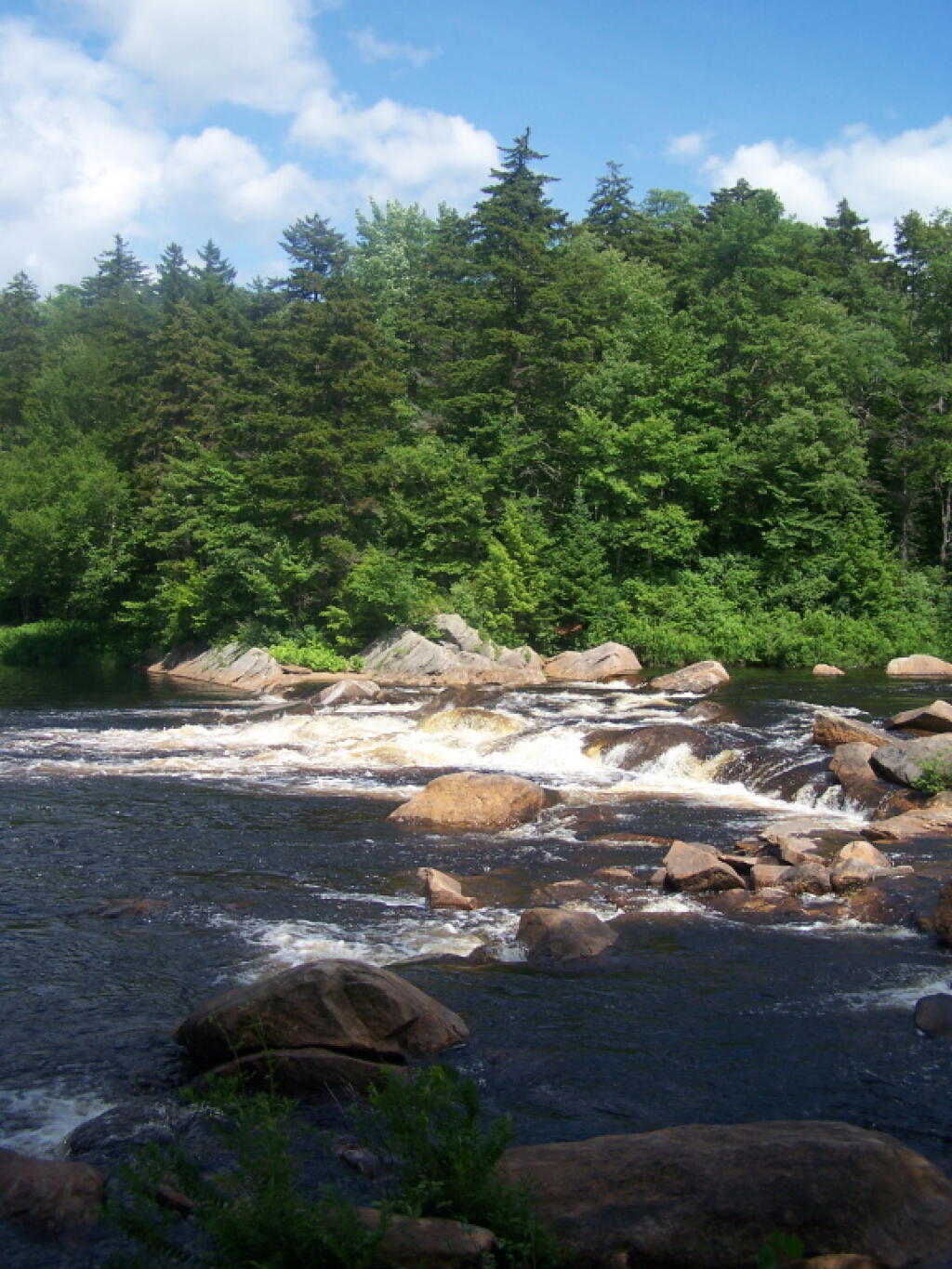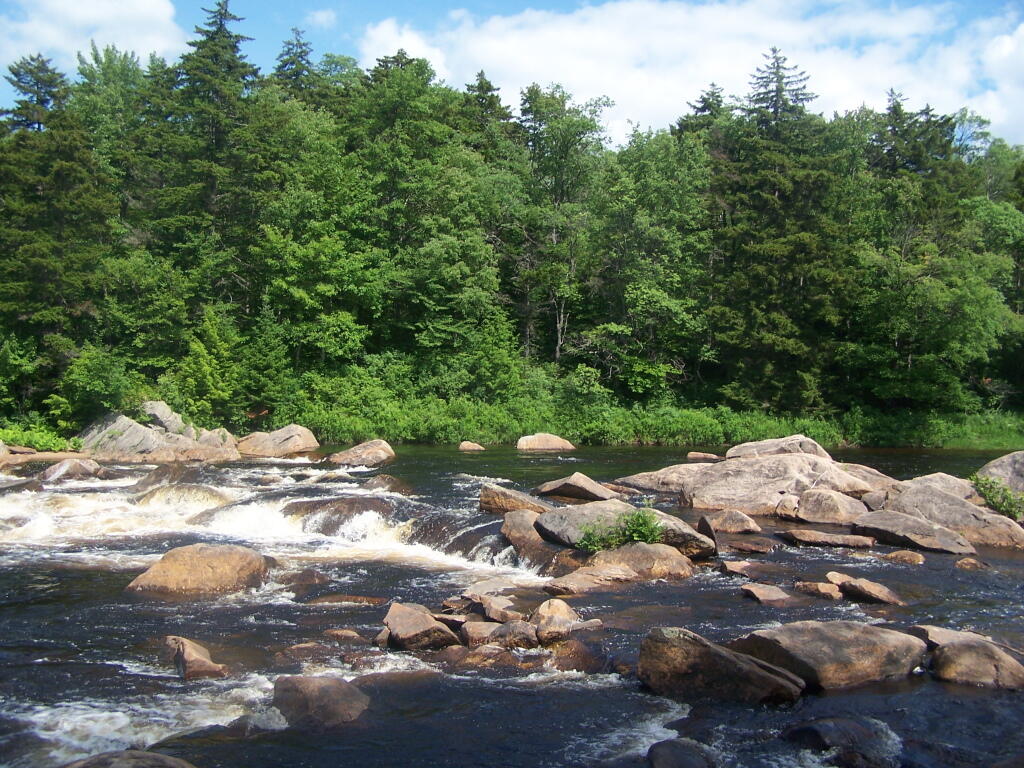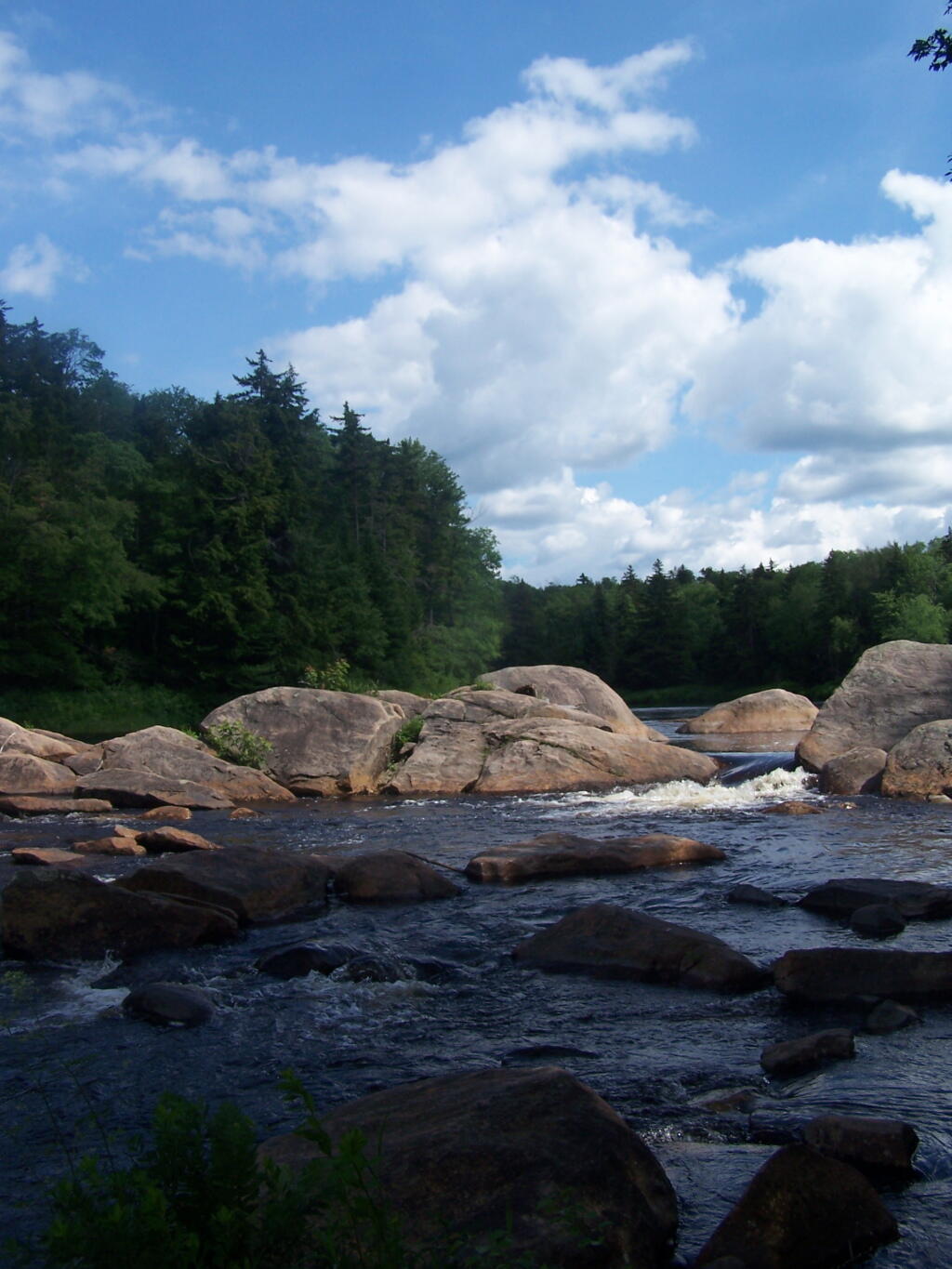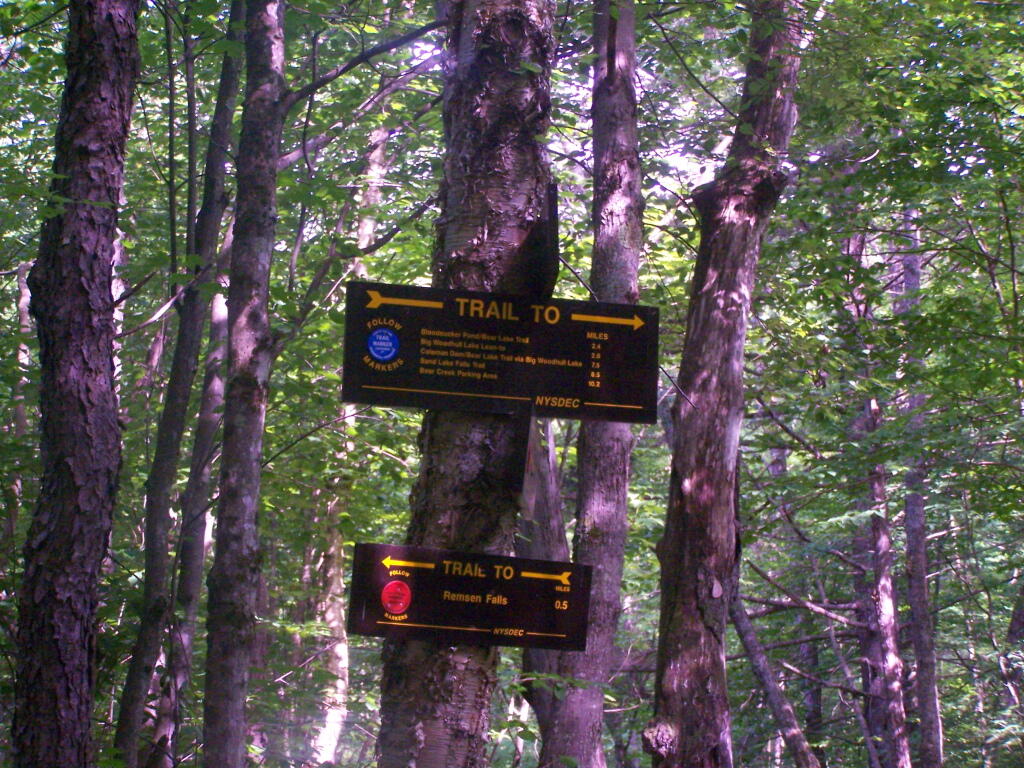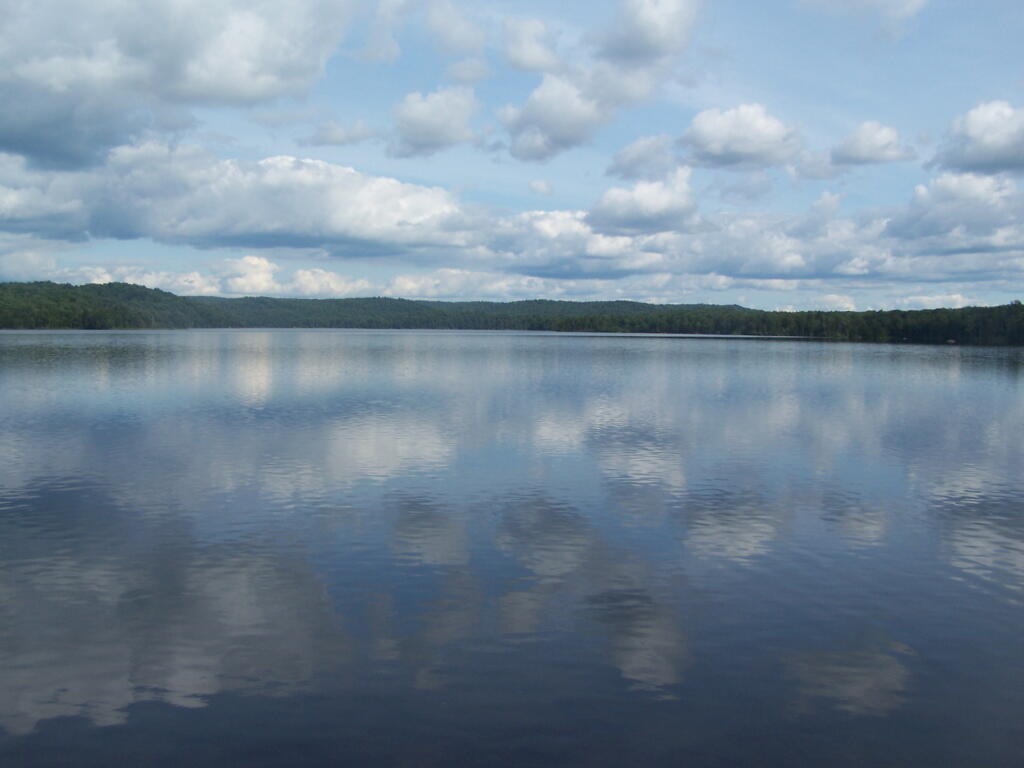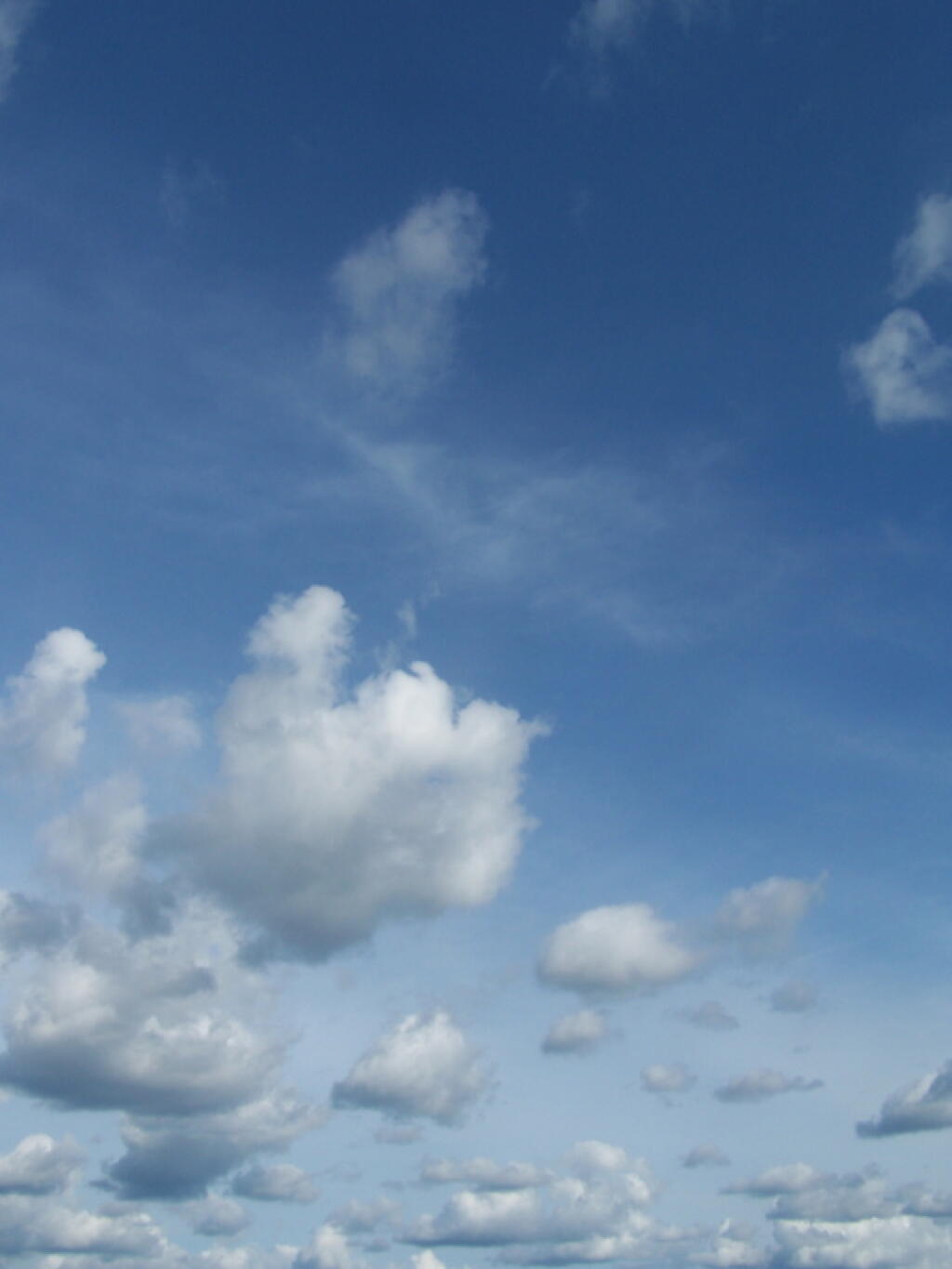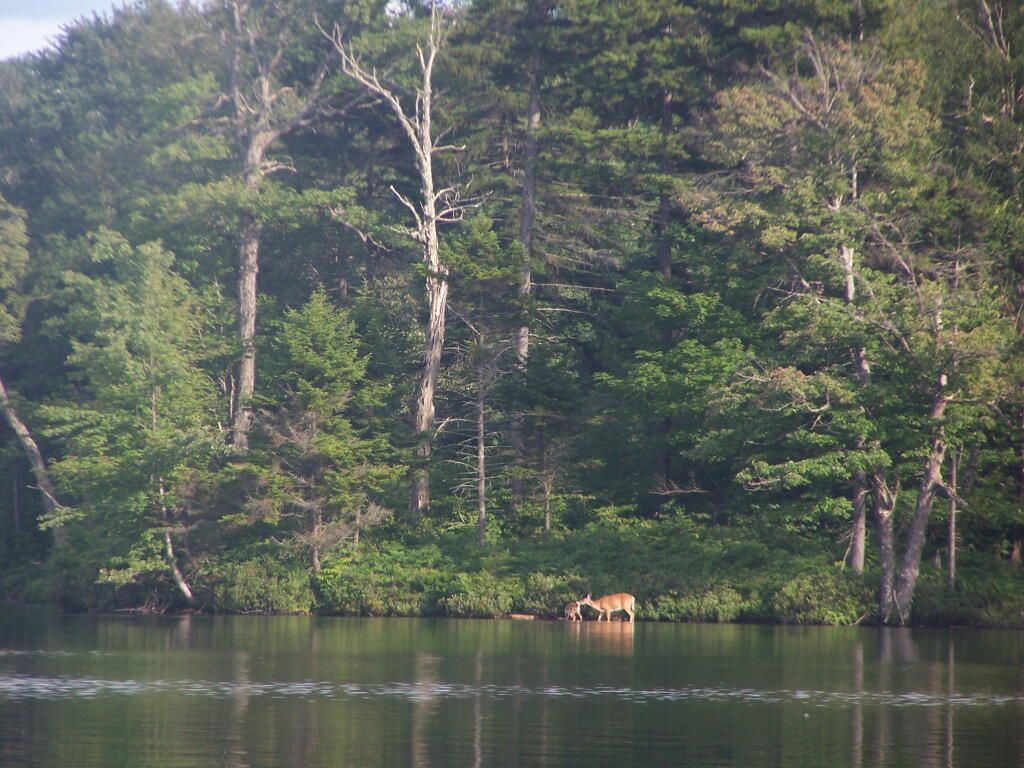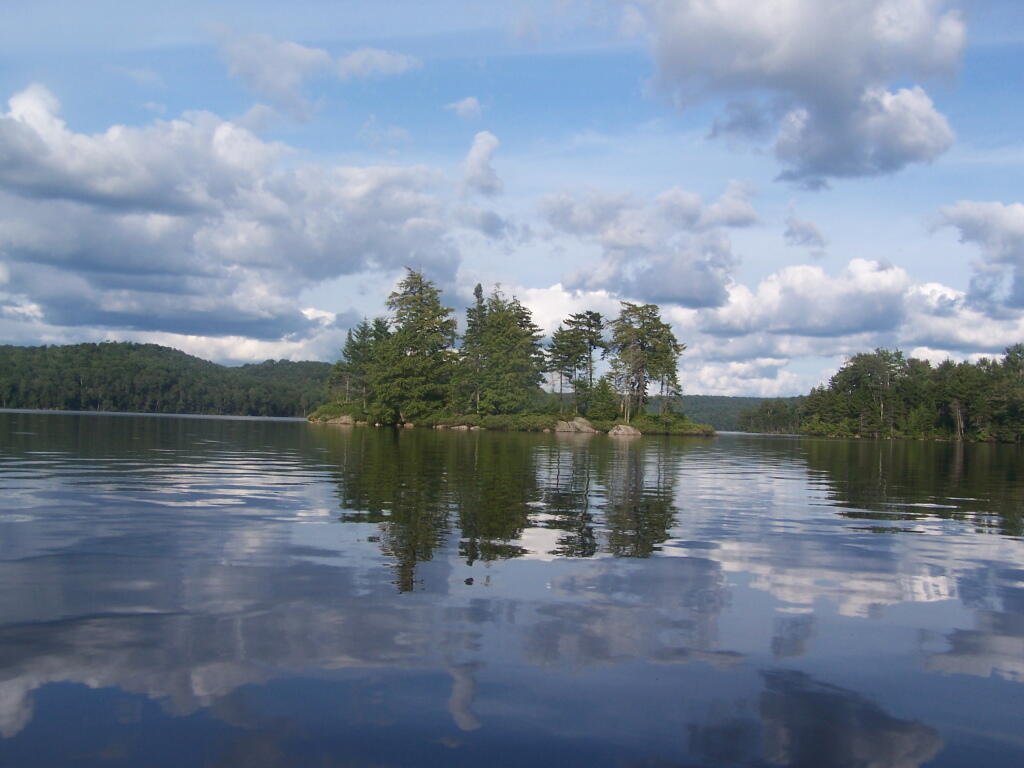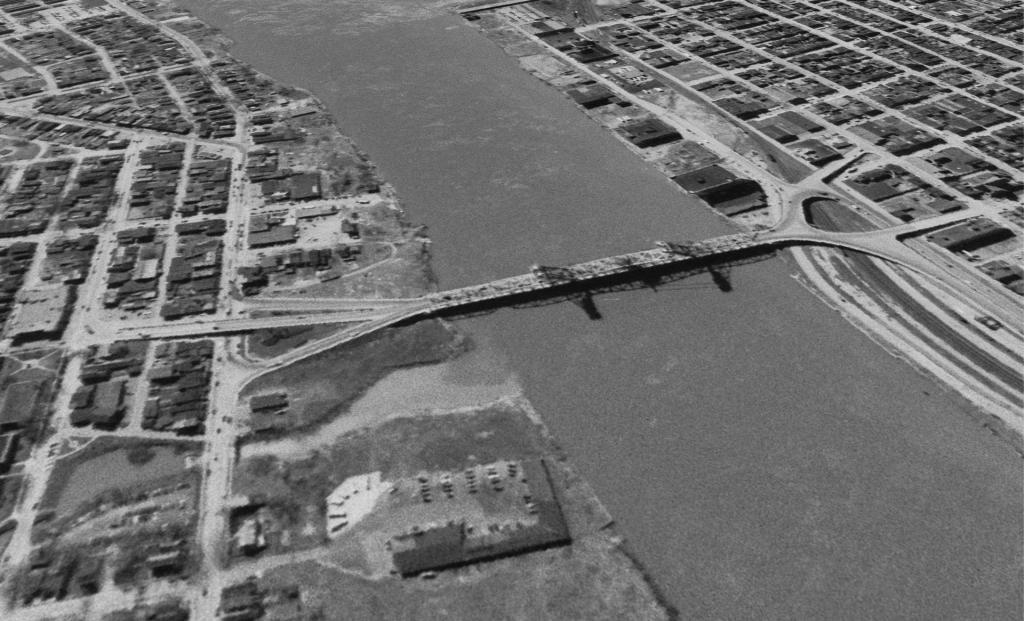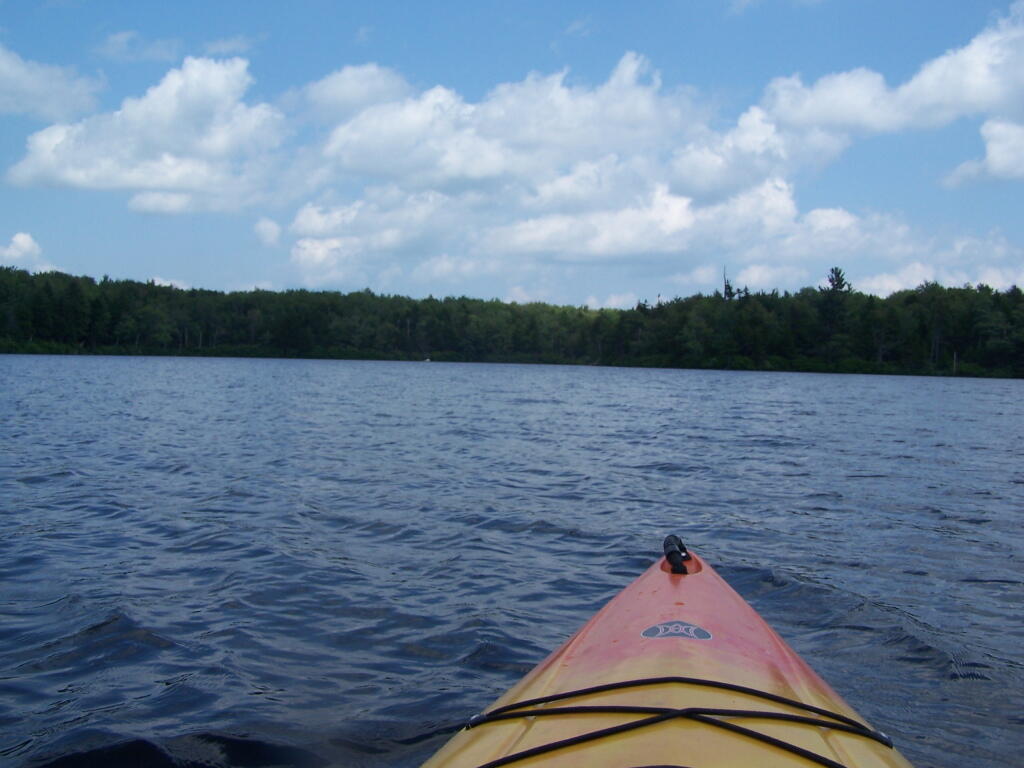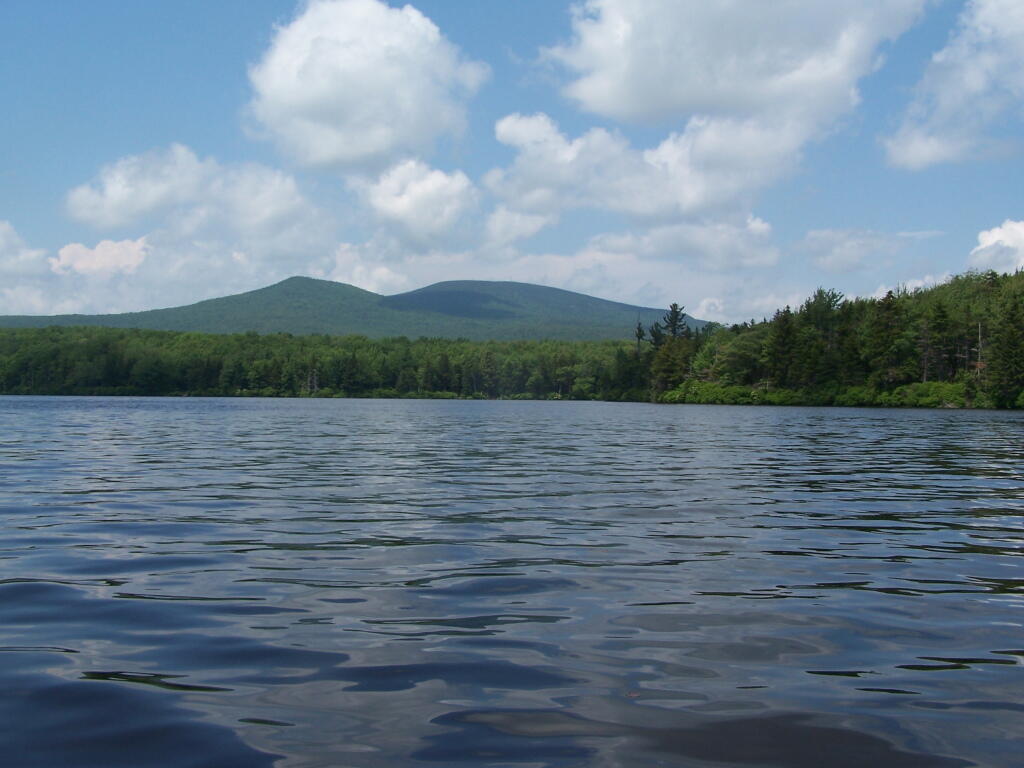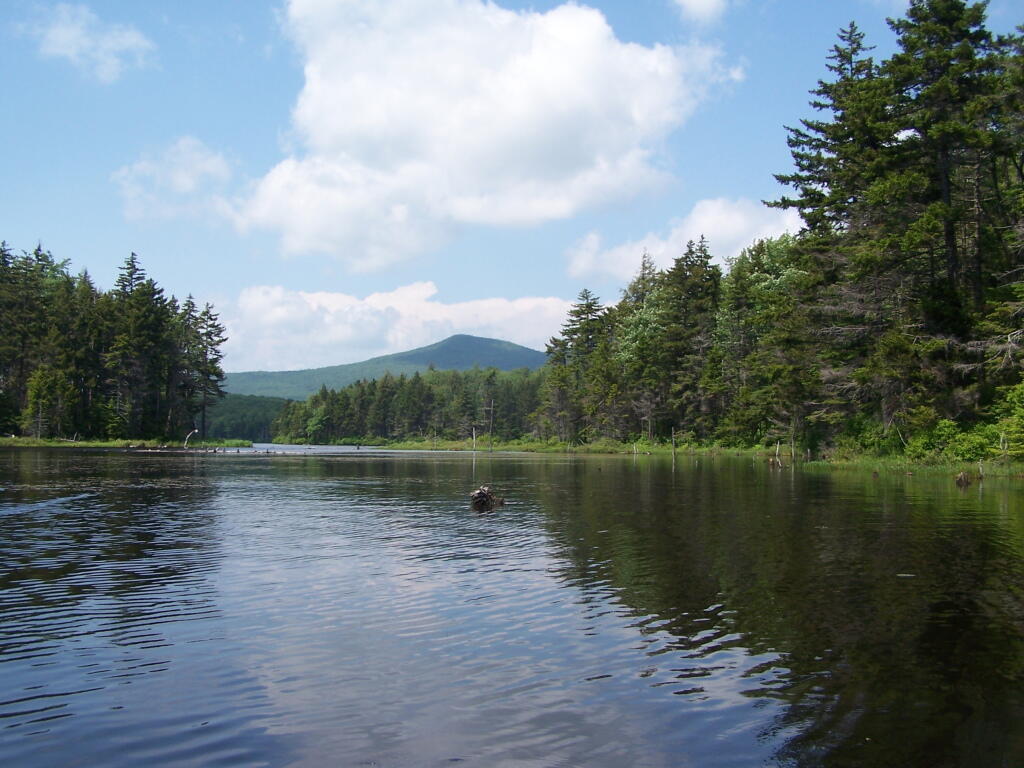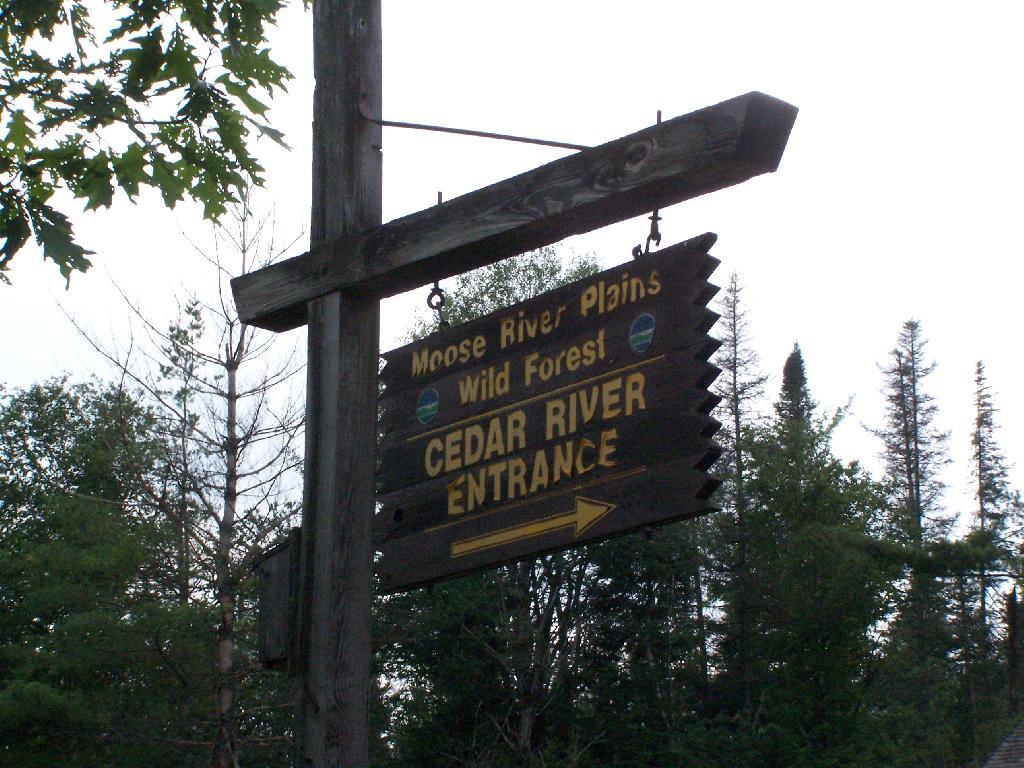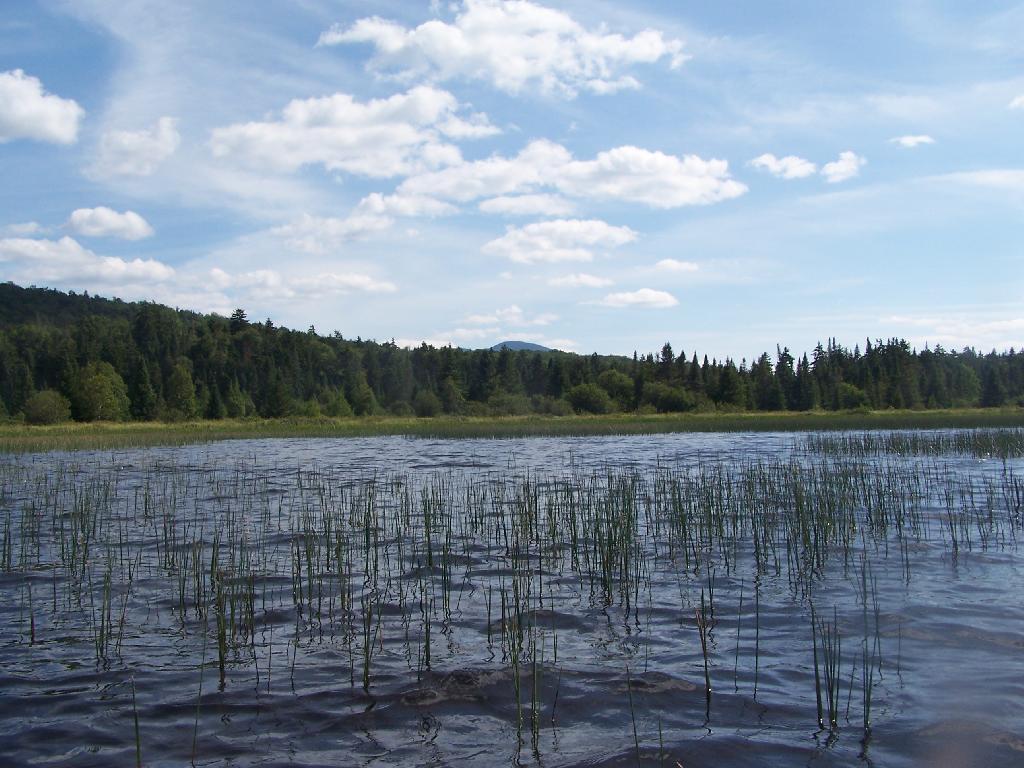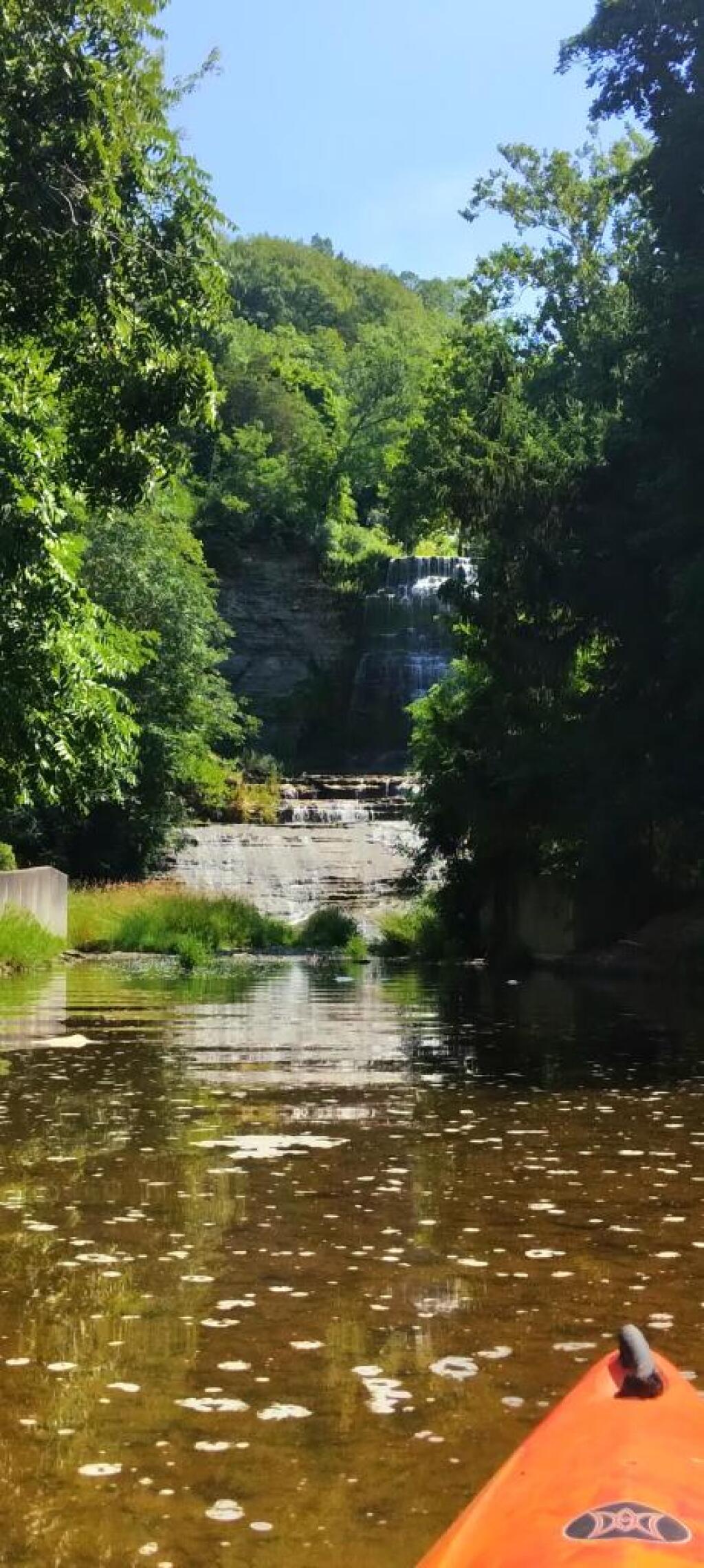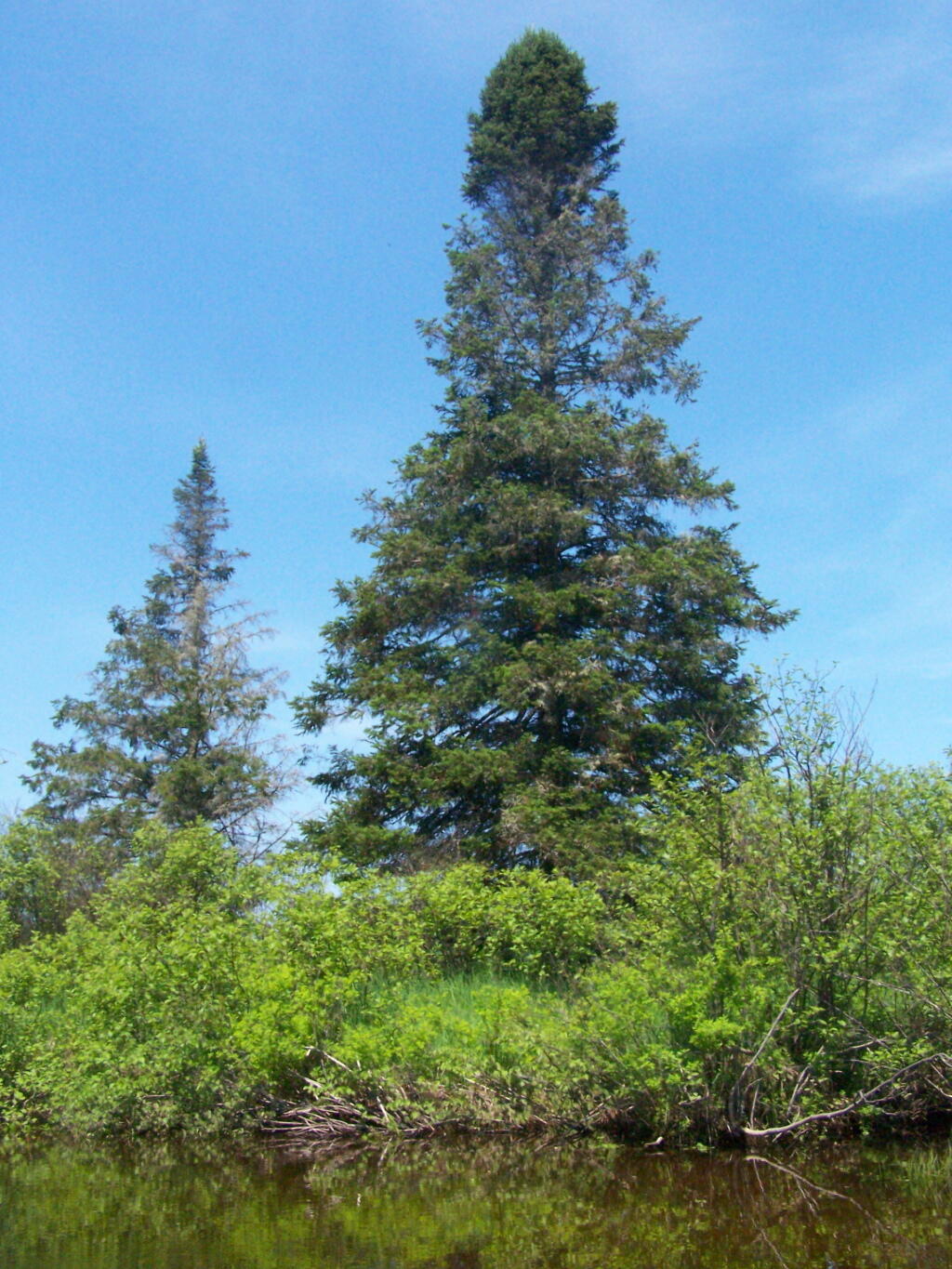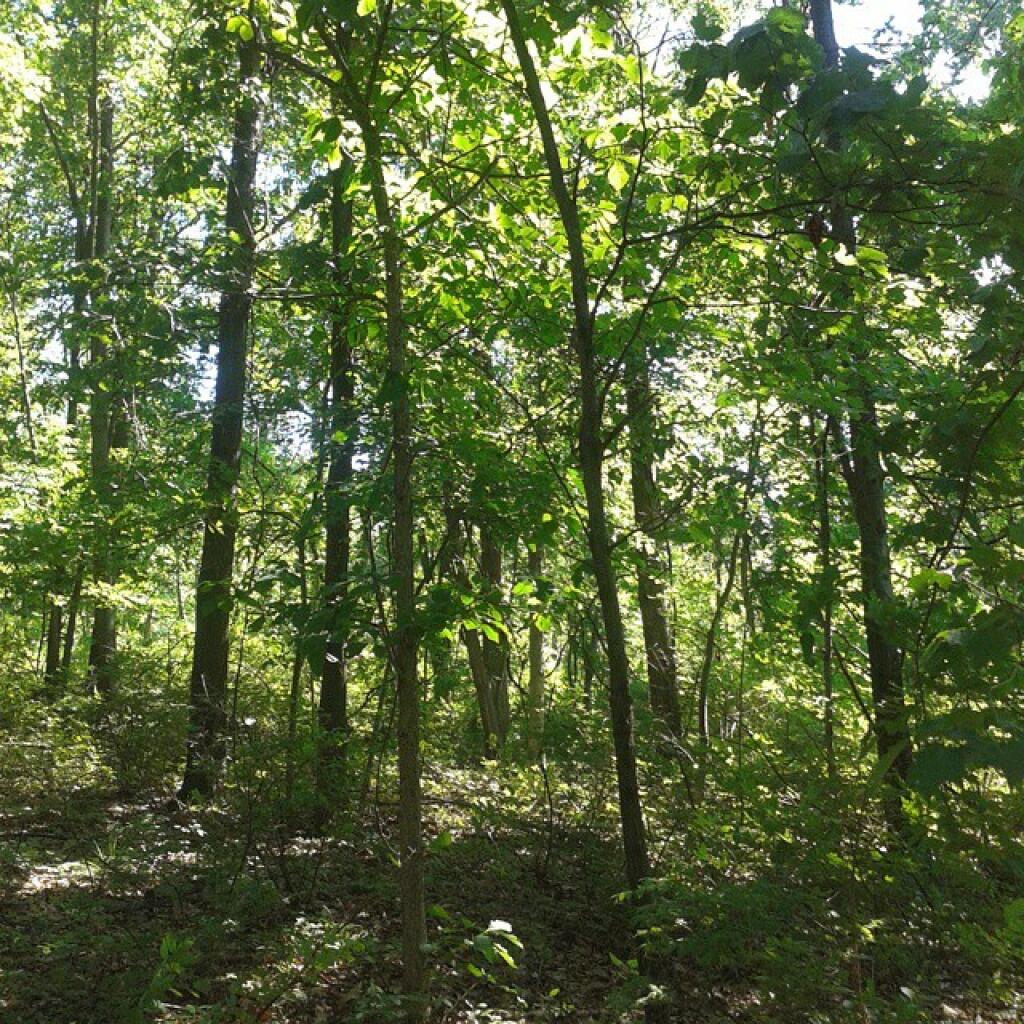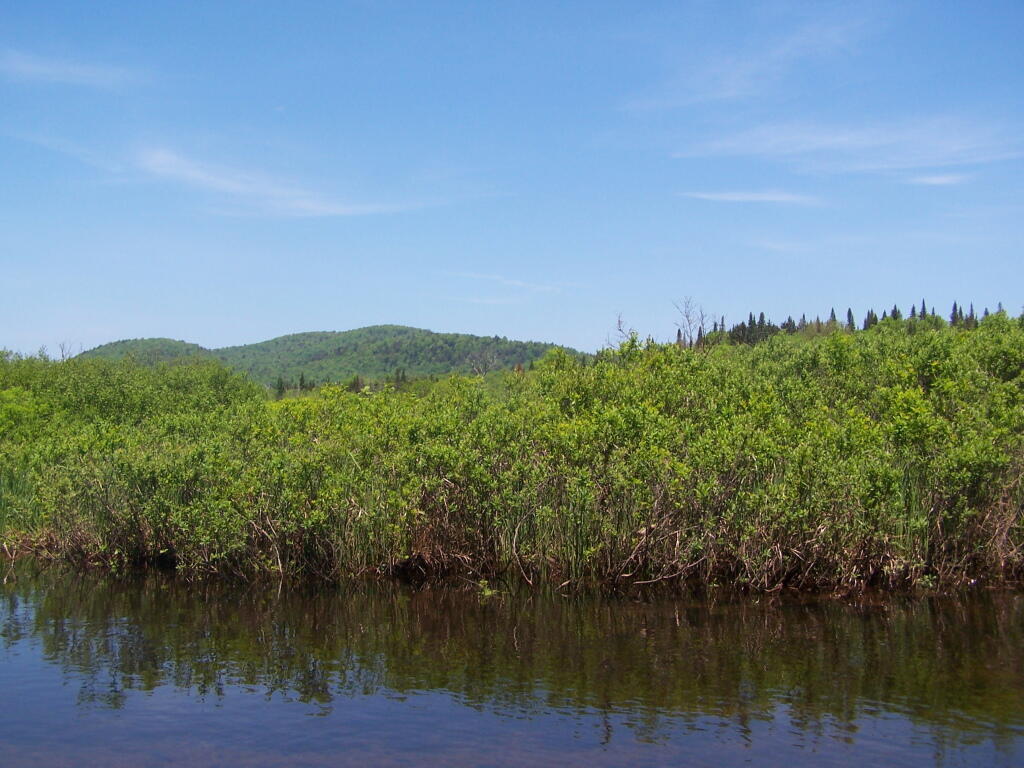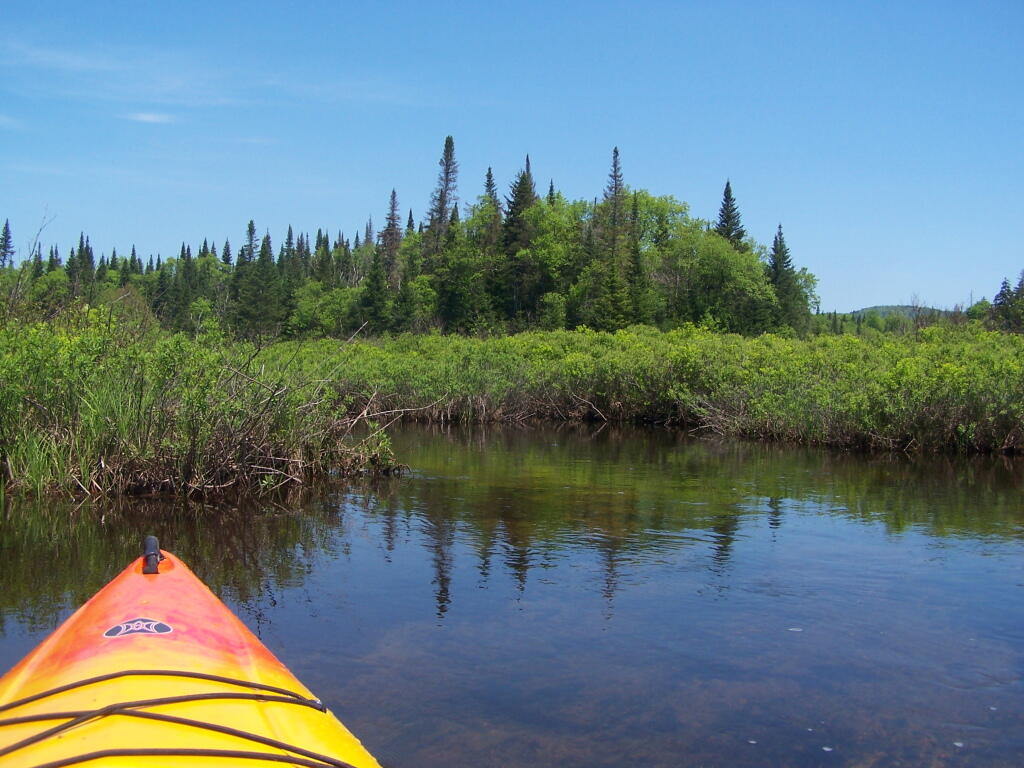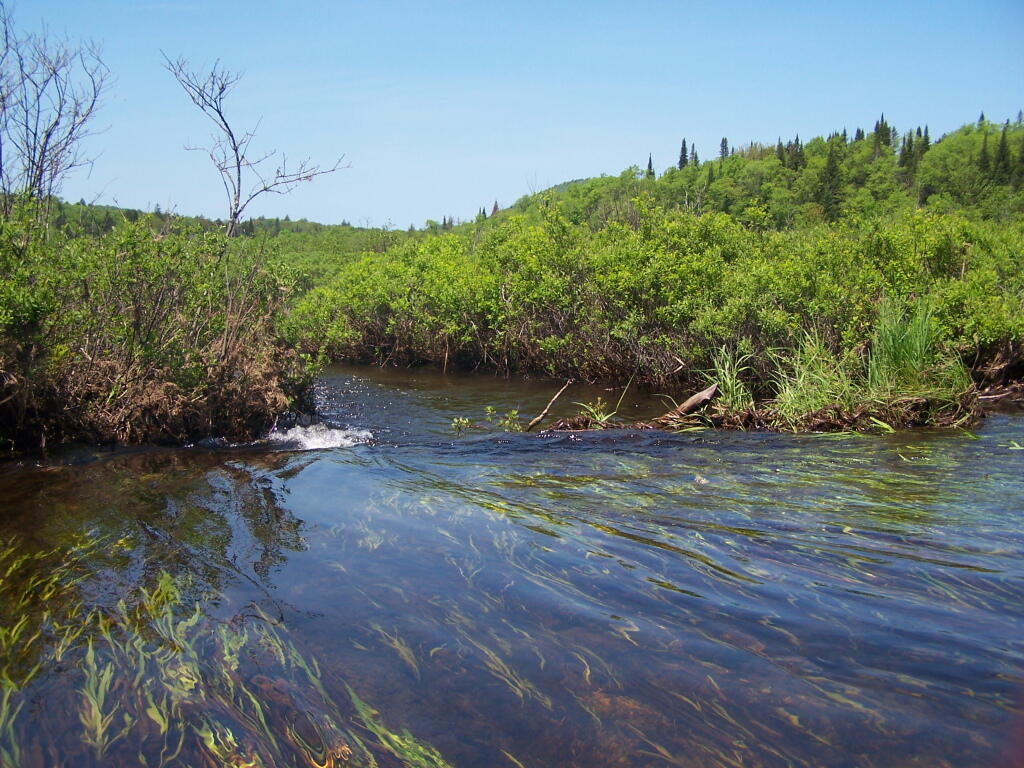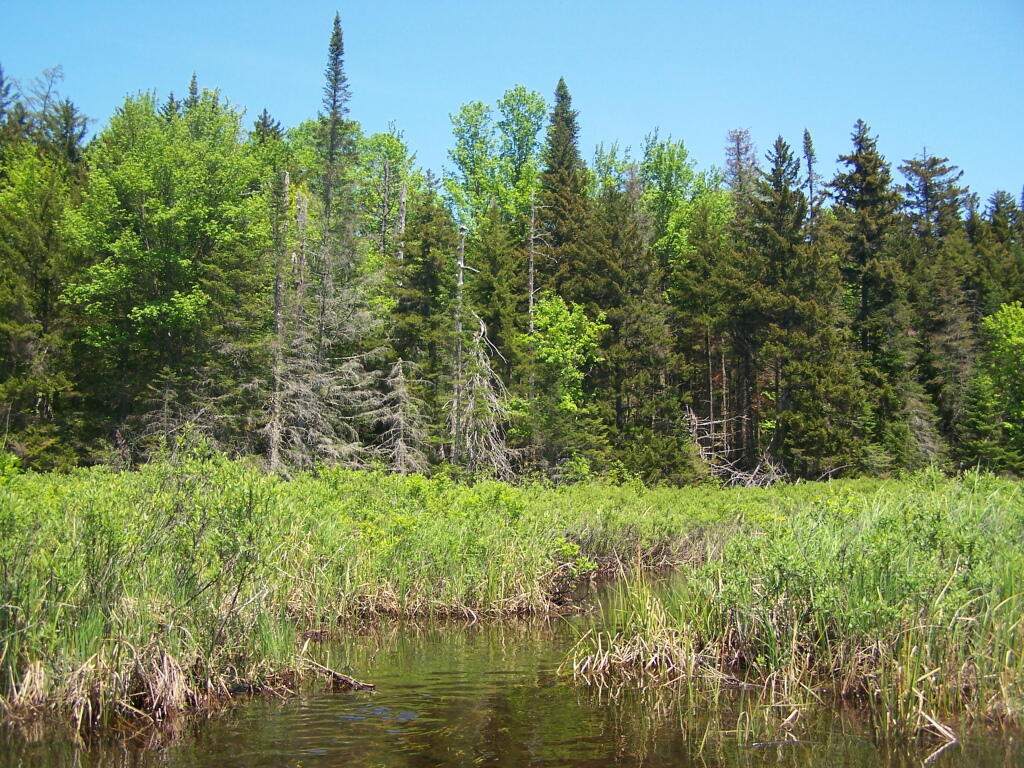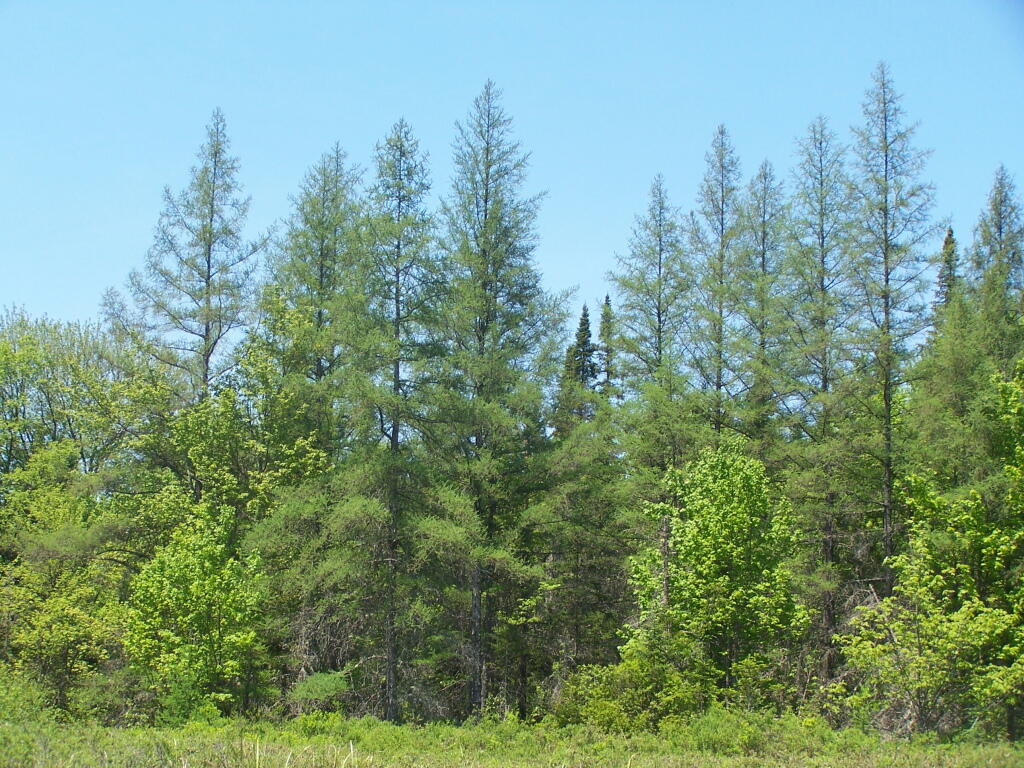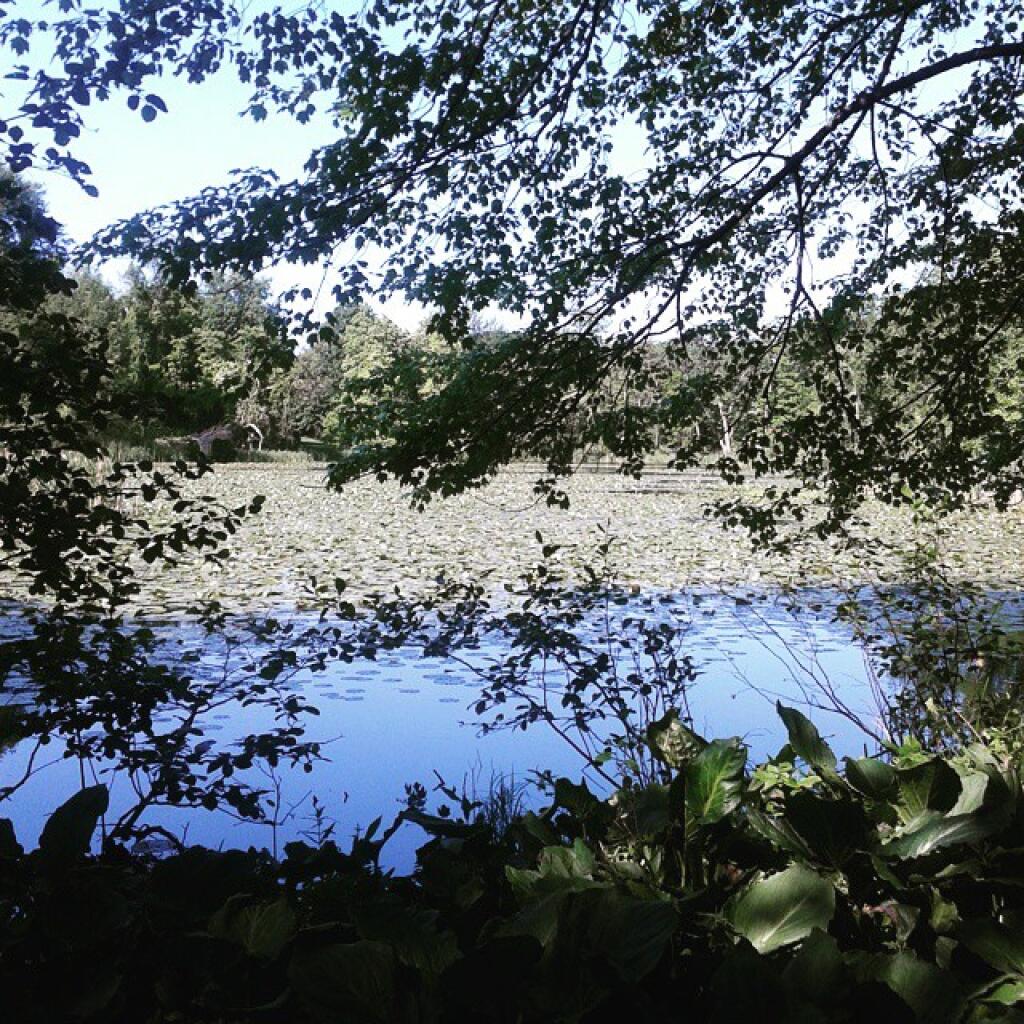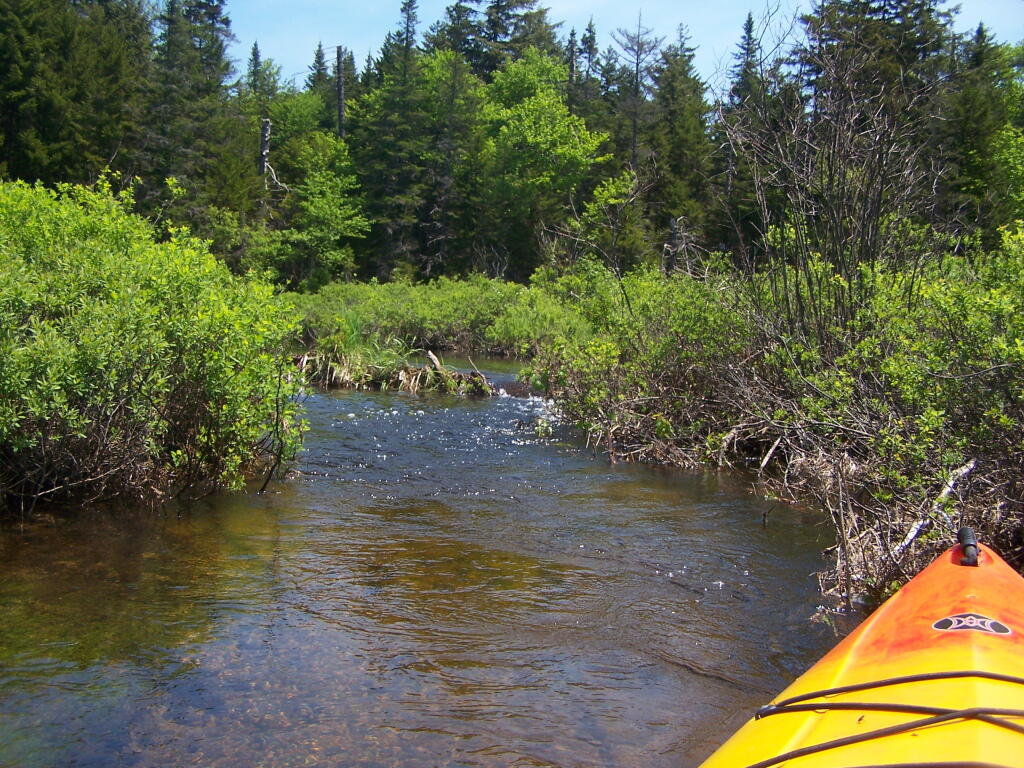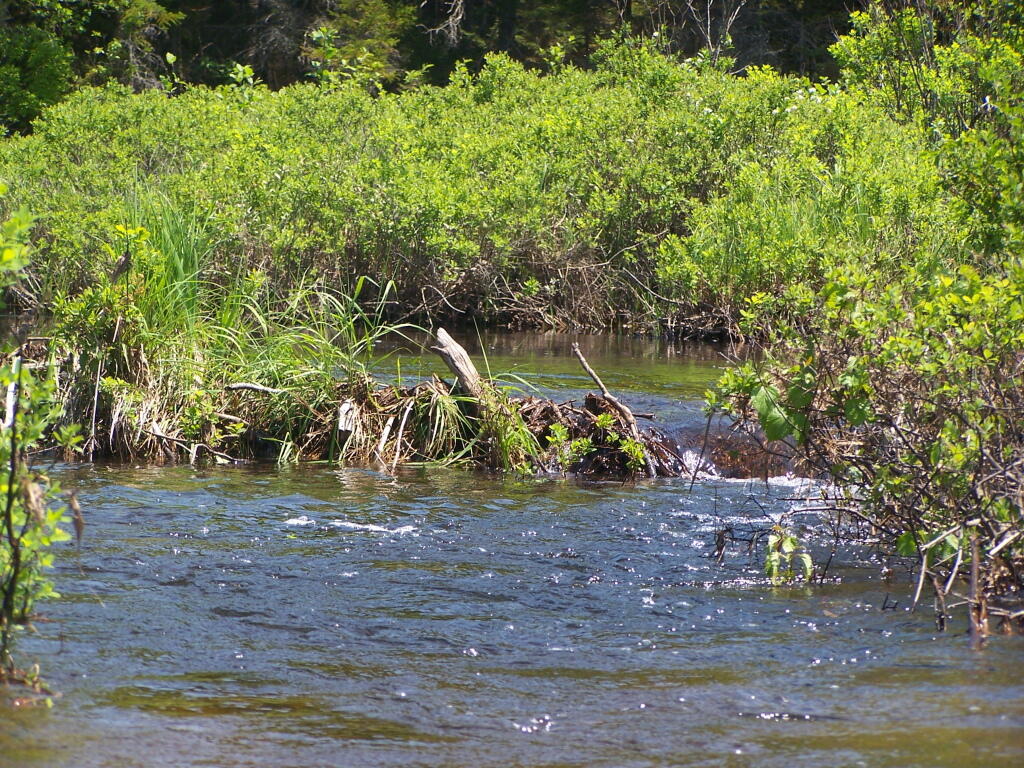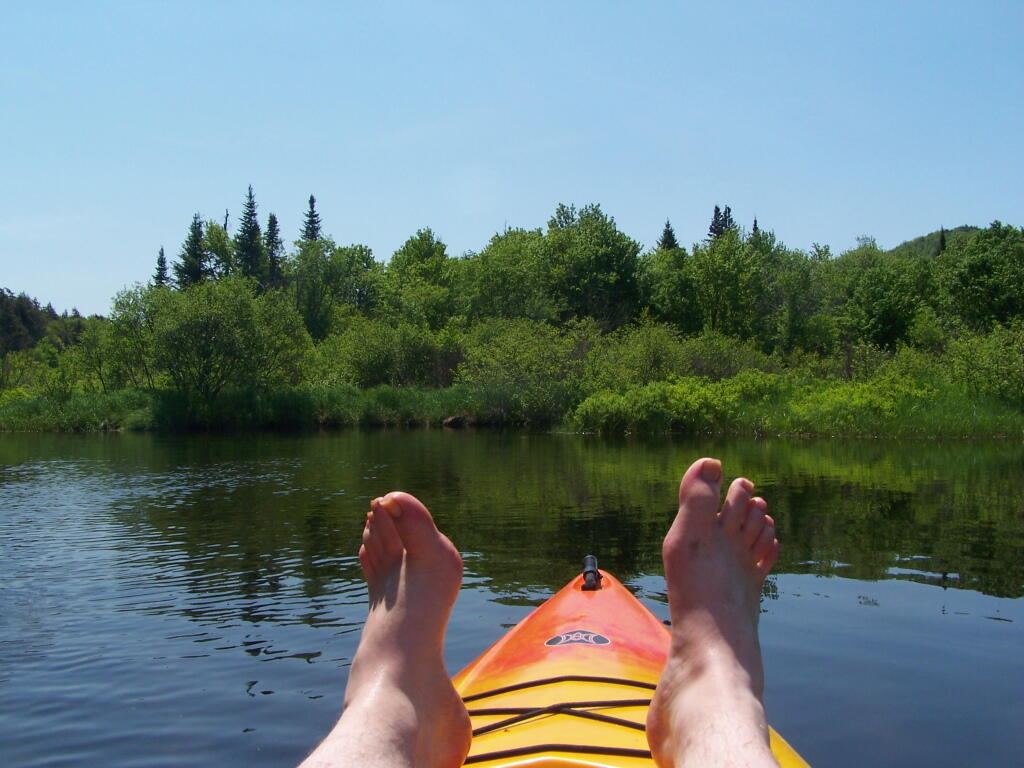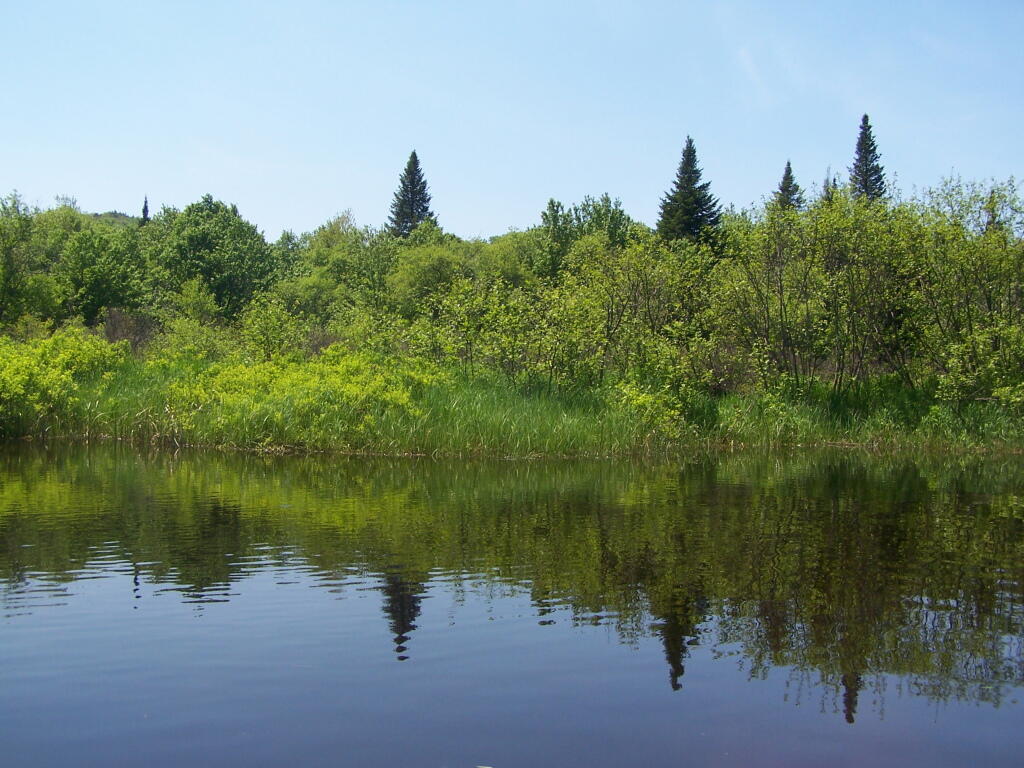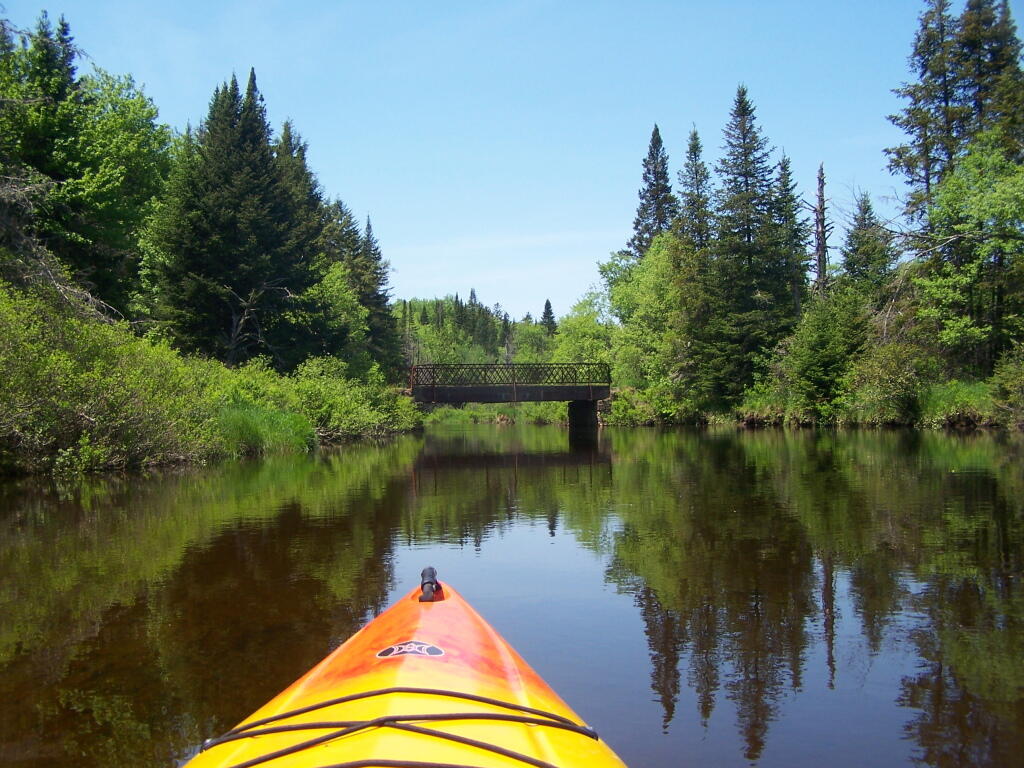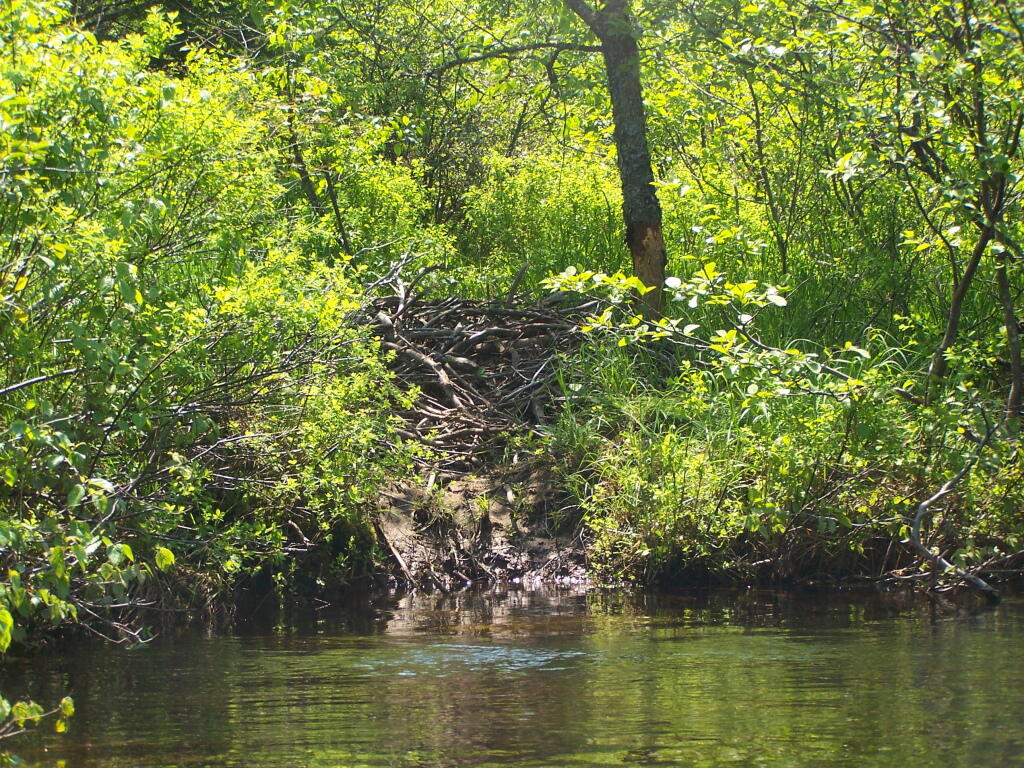The Little River offers some interesting kayaking opportunities, and can be part of a roadside camping experience at Streeter Lake in Aldrich. Here is a map, you can click to expand and print up.
forest
Kayaking Francis Lake
Near Number 4 is Francis Lake on Stillwater Road. It’s not the world’s largest lake, but it does offer some interesting kayaking with good views, as you paddle around this lake. There are some private inholdings along the lake, but most of the lake is pretty wild.
Click above to download the high resolution version of map for printing…
Pictures of the Trip…
Kayaking Woodhull Lake
To get to Woodhull Lake, you have to take McKeever Road from NY 28 in McKeever (1/2 mile before it crosses the Moose River, then drive back about 6 miles on a dirt truck trail known as Wolf Lake Landing Road. You put in at Wolf Lakes Landing, which is named after one of the lakes that Woodhull Lake covered when it was dammed up to form a larger lake to provide water supply to the Erie Canal.
While the road is fairly well maintained one-lane gravel truck trail, one creek crossing is a bit eroded from the rains of 2011. There are roughly 6 designated roadside campsites along the road, with minimal to no facilities that you can camp at. You can drive all but an 1/8th of a mile up to Woodhull Lake, where the road is gated off, from there you have to carry your kayak or canoe to the lake on the gravel road. Consider using wheels on your kayak to assist on this portage.
Here is a map of Woodhull Lake. Consider clicking on it, for a high-resolution map that you can print up, put in a plastic bag and use on the trip like I did. It works really well like this, and I think this map prints out to be nice and high resolution, especially if you have a color printer.
Grout Pond
From the east, probably the best way to get to Grout Pond is via Kelley Stand Road, a twisty one lane dirt road that heads east out of East Arlington in Vermont. Pay careful attention to this map, it’s easy to get lost in East Arlington or East Kansas. I know I ended up at Covered Bridge in Chiselville the first time I got there.
Grout pond isn’t the biggest in the world. If you want lots of open water, check out the Somerset Reservoir. This area, however offers either backpack-in camping along the east shore, or 25 drive-in campsites, in a primitive campground nearby. There is no charge to use this National Recreation Area. Other roadside campsites along Kelly Strand Road, FR 71, and FR 70. Forest Road 70’s campsites are particularly nice, and it’s a 1/4 mile portage down to Branch Pond (bring wheels).
The lake is very shallow and marshy in one. Supposedly good fishing if you have a Vermont State Fishing License.
Association for the Protection of the Adirondacks v. Alexander MacDonald
As I could not find this court case online, despite being public domain, I obtained a copy from the Research Librarian at the Bethlehem Public Library. I am posting this case in it’s entirety, as it’s key to understanding the core holdings in the case, that must be upheld whenever a proposed use is undertaken in the forest preserve.
The Association for the Protection of the Adirondacks et al., Respondents, v.
Alexander MacDonald, Conservation Commissioner of the State of New York, et al., Appellants
[NO NUMBER IN ORIGINAL]
Court of Appeals of New York
253 N.Y. 234; 170 N.E. 902; 1930 N.Y. LEXIS 820
February 11, 1930, Argued
March 18, 1930, Decided
PRIOR HISTORY.
[***1] Appeal from a judgment of the Appellate Division of the Supreme Court in the third judicial department, entered January 21, 1930, in favor of plaintiffs, upon the submission of a controversy under sections 546-548 of the Civil Practice Act.
Assn. for Protection of Adirondacks v. MacDonald, 228 App. Div. 73, affirmed.
DISPOSITION.
Judgment affirmed.
OVERVIEW.
1929 N.Y. Laws ch. 417 was enacted to authorize the construction of a bobsleigh run in a forest preserve belonging to the state in order to provide facilities for the Olympic winter games. The officials planned to cut down 2,500 trees, and the association, a group that sought to protect state lands, objected, arguing that the state’s constitution prevented the cutting of the trees. The association obtained an injunction restraining the construction on the ground that the statute was void and unconstitutional, and the officials appealed. The court affirmed the decision, holding that ch. 417 was unconstitutional and that the timber on the lands in the forest preserve could not be cut and removed to construct a toboggan slide because N.Y. Const. art. VII, § 7 said that it could not be done. The court held that the constitution, like any other law, had to receive a reasonable interpretation, considering the purpose and the object in view, and the purpose of § 7 was that the forest preserve should be forever kept as wild forest lands and the timber could not be sold, removed, or destroyed.
SYLLABUS.
Chapter 417 of the Laws of 1929, authorizing the Conservation Commissioner to construct and maintain a bobsleigh run or slide on State lands in the Forest Preserve in the town of North Elba, necessitating the removal of a substantial number of trees from the land set aside therefor, is violative of section 7 of article 7 of the State Constitution, directing that timber in the Forest Preserve shall not be “sold, removed or destroyed,” and is, consequently, void.
COUNSEL: Hamilton Ward, Attorney-General (C. S. Ferris of counsel), for appellants. Section 7 of article 7 of the Constitution was not intended to prohibit the cutting of a relatively small number of trees, [***2] or even a single tree, when such cutting will in no wise impair the forest or subvert the purpose for which the Forest Preserve was acquired and is now being maintained. ( People ex rel. Manhattan Ry. Co. v. Barker, 152 N. Y. 433; People ex rel. Jackson v. Potter, 47 N. Y. 375; People v. Adirondack Ry. Co., 160 N. Y. 225; Einsfeld v. Murray, 149 N. Y. 367.)
Wallace T. Stock, Frederick T. Kelsey and John W. DeWitt for Public Park and Playgrounds District of the Town of North Elba, amicus curiae. The constitutional provision must be given a broad interpretation consistent with the purposes of government and with the ascertained intent of the framers thereof and of the people. ( People v. Tremaine, 252 N. Y. 27; Koster v. Coyne, 184 N. Y. 494; Matter of Burns, 155 N. Y. 23; Rochester v. Quintard, 136 N. Y. 221; People v. Petrea, 92 N. Y. 128; Matter of Gilbert El. R. Co., 70 N. Y. 361; Goodell v. Jackson, 20 Johns. 693; People v. Fancher, 50 N. Y. 288; People v. Albertson, 55 N. Y. 50; People v. Lorillard, 135 N. Y. 285; [***3] Admiral Realty Co. v. City of N. Y., 206 N. Y. 110; Matter of Dowling, 219 N. Y. 44.) The intent of the People in adopting this provision of the Constitution was the preservation and use of the Forest Preserve as a great resort for the public for the purposes of health and recreation. (Black on Interpretation of Laws [2d ed.], pp. 20, 194; Wendell v. Lavin, 246 N. Y. 115; People v. Potter, 47 N. Y. 375; Sweet v. Syracuse, 129 N. Y. 316; Stradar v. Stern, 184 App. Div. 700; Waters v. Gerard, 189 N. Y. 302; People v. Mosher, 163 N. Y. 32; People v. Lyman, 157 N. Y. 368.) The proposed bobsled run is a proper and desirable use of the State’s forest lands, consistent with the Constitution. ( Matter of Watson, 226 N. Y. 384.)
Jacob Gould Schurman, Jr., George Welwood Murray, Samuel H. Ordway and Alanson W. Willcox for respondents. The history of section 7 of article 7 of the Constitution and the effect uniformly attributed to it, demonstrate the invalidity of chapter 417 of the Laws of 1929. ( People v. Adirondack R. Co., 160 N. Y. 225; Adirondack R. Co. v. Indian River Co., 27 App. Div. 326; [***4] People v. New York Central & H. R. R. R. Co., 161 App. Div. 322; 213 N. Y. 649; Newcombe v. Ostrander, 66 Misc. Rep. 103; 140 App. Div. 945.) The legislation in question cannot be sustained as an exercise of the police power or as a reasonable use of the Forest Preserve. ( Barrett v. State of New York, 220 N. Y. 423.)
JUDGES: Crane, J. Cardozo, Ch. J., Pound, Lehman, Kellogg, O’Brien and Hubbs, JJ., concur.
OPINION BY: CRANE
OPINION.
[*236] [**903] By chapter 417 of the Laws of 1929 the Conservation Commissioner is authorized to construct and maintain a bobsleigh run or slide on State lands in the Forest Preserve in the town of North Elba, Essex county, on the western slope of the Sentinel Range.
The act was passed for the purpose of providing facilities for the third Olympic winter games, which are to be held at or in the vicinity of Lake Placid, in the year 1932. The bobsleigh run will be approximately one and one-quarter miles in length and six and one-half feet wide, with a return route or go-back road. As additional land will have to be cleared on either side of the run, the width in actual use will be approximately sixteen feet, and twenty feet where the course curves. It is estimated that the [***5] construction will necessitate the removal of trees from about four and one-half acres of land, or a total number of trees, large and small, estimated at 2,500. The Forest Preserve within the Adirondacks consists of 1,941,403 acres. The taking of four acres out of this vast acreage for this international sports’ meet seems a very slight inroad upon the preserve for a matter of such public interest and benefit to the people of the State of New York and elsewhere. The Legislature, recognizing the benefits of an international gathering of this kind, has sought in the public interest, by the [*237] enactment of the above law, to provide appropriately and in the spirit of hospitality, the necessary equipment and facilities for these games, and contests, incident to winter sport, of which tobogganing is a large feature. Winter sports of course must be held in a place where there will be an assurance of sufficient continual cold weather for snow and ice, and the vicinity of Lake Placid gives this assurance. The western slope of the Sentinel range, chosen for the toboggan slide, is the nearest and most appropriate place for its construction in connection with the center of attractions.
[***6] Considering the distinction of having one of the beauty spots of New York State selected as appropriate for the International Olympic winter games and the advantages afforded by Lake Placid and its vicinity, together with the good will promoted in the recognition by the State, through its Legislature, of the event, what possible objection can there be to the above law permitting this toboggan slide to be constructed on State land? One objection, and one only — the Constitution of the State, which prevents the cutting of the trees. This objection has been raised by the Association for the Protection of the Adirondacks, which has sought and obtained an injunction restraining the Conservation Commission of this State and the Superintendent of Lands and Forests from constructing and maintaining the bobsleigh run on the ground that chapter 417 of the Laws of 1929 is unconstitutional and void.
The constitutional provision is HN1section 7 of article VII, reading: “The lands of the state, now owned or hereafter acquired, constituting the forest preserve as now fixed by law, shall be forever kept as wild forest lands. They shall not be leased, sold or exchanged, or be taken by any corporation, [***7] public or private, nor shall the timber thereon be sold, removed or destroyed.”
The lands and trees proposed to be taken for the toboggan slide are within the Forest Preserve and covered [*238] by this provision of the Constitution. Taking the words of section 7 in their ordinary meaning, we have the command that the timber, that is, the trees, shall not be sold, removed or destroyed. To cut down 2,500 trees for a toboggan slide, or perhaps for any other purpose, is prohibited. Some opinions, notably those of the Attorneys-General of the State, cited on the briefs and by the Appellate Division, have even gone so far as to state that a single tree, and even fallen timber and dead wood, cannot be removed; that to preserve the property as wild forest lands means to preserve it from the interference in any way by the hand of man.
HN2The words of the Constitution, like those of any other law, must receive a reasonable interpretation, considering the purpose [**904] and the object in view. ( State of Ohio ex rel. Popovici v. Agler, 280 U.S. 379.) Words are but symbols indicating ideas and are subject to contraction and expansion to meet the idea sought to be expressed; [***8] they register frequently according to association, or like the thermometer, by the atmosphere surrounding them. The purpose of the constitutional provision, as indicated by the debates in the Convention of 1894, was to prevent the cutting or destruction of the timber or the sale thereof, as had theretofore been permitted by legislation, to the injury and ruin of the Forest Preserve. To accomplish the end in view, it was thought necessary to close all gaps and openings in the law, and to prohibit any cutting or any removal of the trees and timber to a substantial extent. The Adirondack Park was to be preserved, not destroyed. Therefore, all things necessary were permitted, such as measures to prevent forest fires, the repairs to roads and proper inspection, or the erection and maintenance of proper facilities for the use by the public which did not call for the removal of the timber to any material degree. The Forest Preserve is preserved for the public; its benefits are for the people of the State as a whole. Whatever the advantages may be of having wild forest lands [*239] preserved in their natural state, the advantages are for every one within the State and for the use [***9] of the people of the State. Unless prohibited by the constitutional provision, this use and preservation are subject to the reasonable regulations of the Legislature.
The laws developing the Forest Preserve and the Adirondack Park, up to the Constitution of 1894, are reviewed in the opinion of this court in People v. Adirondack Ry. Co. (160 N. Y. 225). By chapter 707 of the Laws of 1892 the State Park, known as the Adirondack Park, was created within certain of the Forest Preserve counties. Such park is to be “forever reserved, maintained and cared for as ground open for the free use of all the people for their health or pleasure, and as forest lands necessary to the preservation of the headwaters of the chief rivers of the State, and a future timber supply.”
Chapter 332 of the Laws of 1893, combining all previous acts, gave to the Forest Commissioners authority to sell certain timber on the Forest Preserve and also power to sell such of the lands as were not needed. They were also authorized to lease camp sites and lay out paths and roads in the park. Then came the Convention of 1894 with the debates indicating a change of policy regarding the sale and destruction of [***10] timber and the use of the lands. (Revised Record of the Constitutional Convention of 1894, vol. I, pp. 1100, 1148; vol. II, pp. 57, 1201; vol. IV, pp. 128, 137.)
At the time of the assembling of this Convention, the law of the State authorized the sale, lease, clearing and cultivation of lands in the Forest Preserve and the sale of standing or fallen timber thereon; also permitted the laying out of paths and roads through the property. (See chap. 283, Laws of 1885; chap. 475, Laws of 1887; chap. 707, Laws of 1892; chap. 332, Laws of 1893.)
With these laws before them and the statements in the debates revealing the depredations which had been made on the forest lands, and the necessity for restricting the [*240] appropriation of trees and timber, section 7 of article VII was adopted and became part of the Constitution January 1, 1895, where it has remained ever since.
No longer was the land or timber to be sold or even condemned for public purposes. ( People v. Adirondack Ry. Co., supra.) The forests were to be preserved as wild forest lands, and the trees were not to be sold or removed or destroyed. Whereas the Legislature had authorized the building of roads through [***11] these lands, this power was thereafter conferred not through legislation, but by constitutional amendments adopted in 1918 and 1927. The section with these amendments now reads: “Nothing contained in this section shall prevent the State from constructing a State highway from Saranac lake in Franklin county to Long lake in Hamilton county and thence to Old Forge in Herkimer county by way of Blue Mountain lake and Raquette lake, and nothing shall prevent the State from constructing a State highway in Essex county from Wilmington to the top of Whiteface mountain.” If it were deemed necessary to obtain a constitutional amendment for the construction of a State highway, the use to which the Forest Preserve might be put with legislative sanction was greatly limited. Trees could not be cut or the timber destroyed, even for the building of a road. This seems to be a fair conclusion to be drawn from the adoption of these constitutional amendments after the Constitution of 1894.
What may be done in these forest lands to preserve them or to open them up for the use of the public, or what reasonable cutting or removal of timber may be necessitated in order to properly preserve the State Park, [***12] we are not at this time called upon to determine. What regulations may reasonably be made by the Commission for the use of the park by campers and those who seek recreation and [**905] health in the quiet and solitude of the north woods is not before us in this case. The [*241] Forest Preserve and the Adirondack Park within it are for the reasonable use and benefit of the public, as heretofore stated. A very considerable use may be made by campers and others without in any way interfering with this purpose of preserving them as wild forest lands. (See “The Problem of the Wilderness” by Robert Marshall in “The Scientific Monthly,” Feb. 1930, p. 141.)
But the question still remains whether the construction of a toboggan slide, which requires the cutting of 2,500 trees, is such a reasonable use, or is forbidden by the Constitution.
Counsel for the appellants has very ably argued that as the underlying purpose of all these restrictions upon the State lands is to preserve them for the free use of all the people for their health and pleasure, the erection of a toboggan slide for sport is within this purpose. He has pressed upon our attention the fact that outdoor sports do [***13] much to maintain the health, the happiness and the welfare of the people of this State; and that if a branch of these outdoor sports is to a minor extent permitted within the public lands, the very purpose which the framers of the Constitution of 1894 had in mind will be accomplished; that it is the benefit to the people which this constitutional provision sought to preserve in the preservation of the forest. What can be more beneficial, asks counsel, than the establishment of forest sports, among which is classed this toboggan slide? We must admit much, if not all, that counsel has so eloquently pleaded in behalf of outdoor games. Perhaps much may be due to international sports, such as the Olympic games, lawn tennis, golf, even aviation, for creating good will among the nations, and a desire to establish those friendly relationships so vigorously claimed and earnestly sought for through treaties and world conferences. However tempting it may be to yield to the seductive influences of outdoor sports and international contests, we must not overlook the fact that [*242] constitutional provisions cannot always adjust themselves to the nice relationships of life. The framers [***14] of the Constitution, as before stated, intended to stop the willful destruction of trees upon the forest lands, and to preserve these in the wild state now existing; they adopted a measure forbidding the cutting down of these trees to any substantial extent for any purpose.
Tobogganing is not the only outdoor sport. Summer sports in the Adirondacks attract a larger number of people than the winter sports, simply for the reason, if no other, that the summer time still remains the vacation period for most of us. The same plea made for the toboggan slide in winter might be made for the golf course in summer, or for other sports requiring the use or the removal of timber. In other words, this plea in behalf of sport is a plea for an open door through which abuses as well as benefits may pass. The Constitution intends to take no more chances with abuses, and, therefore, says the door must be kept shut. The timber on the lands of the Adirondack Park in the Forest Preserve, or that on the western slope of the Sentinel range cannot be cut and removed to construct a toboggan slide simply and solely for the reason that section 7, article VII, of the Constitution says that it cannot be [***15] done. (emphasis added)
Consequently, chapter 417 of the Laws of 1929, permitting the erection of this bobsleigh slide and the destruction of the trees is unconstitutional, and the judgment should be affirmed, with costs.
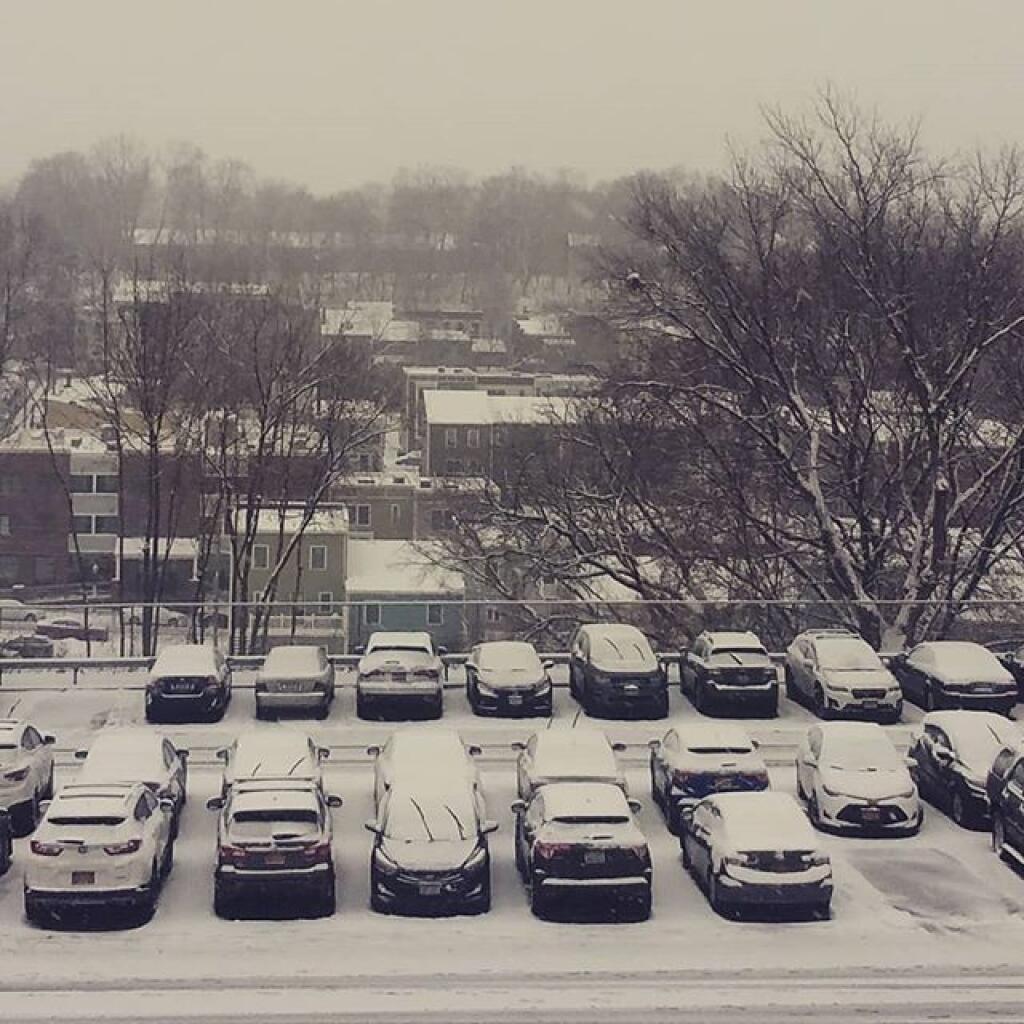
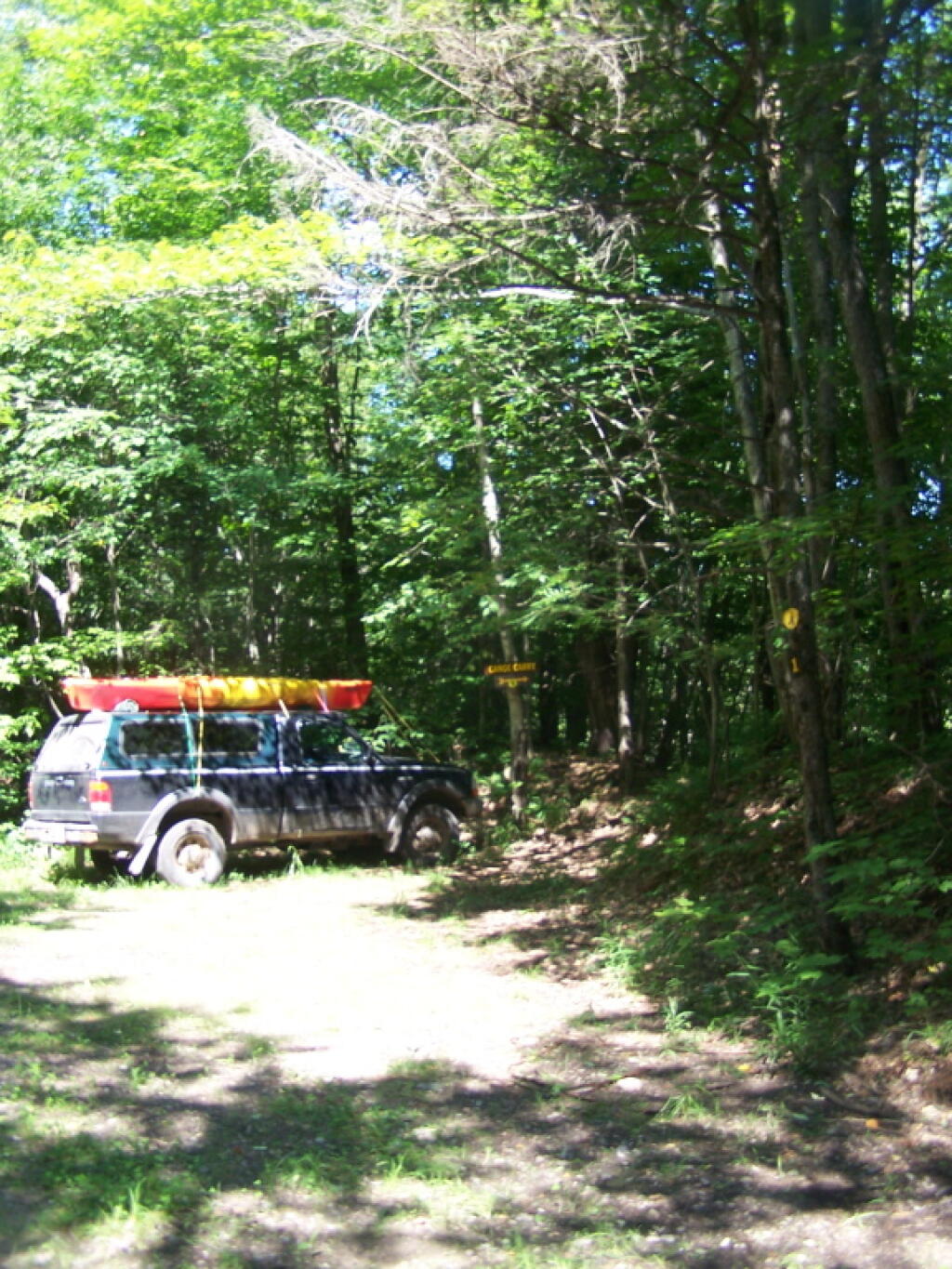
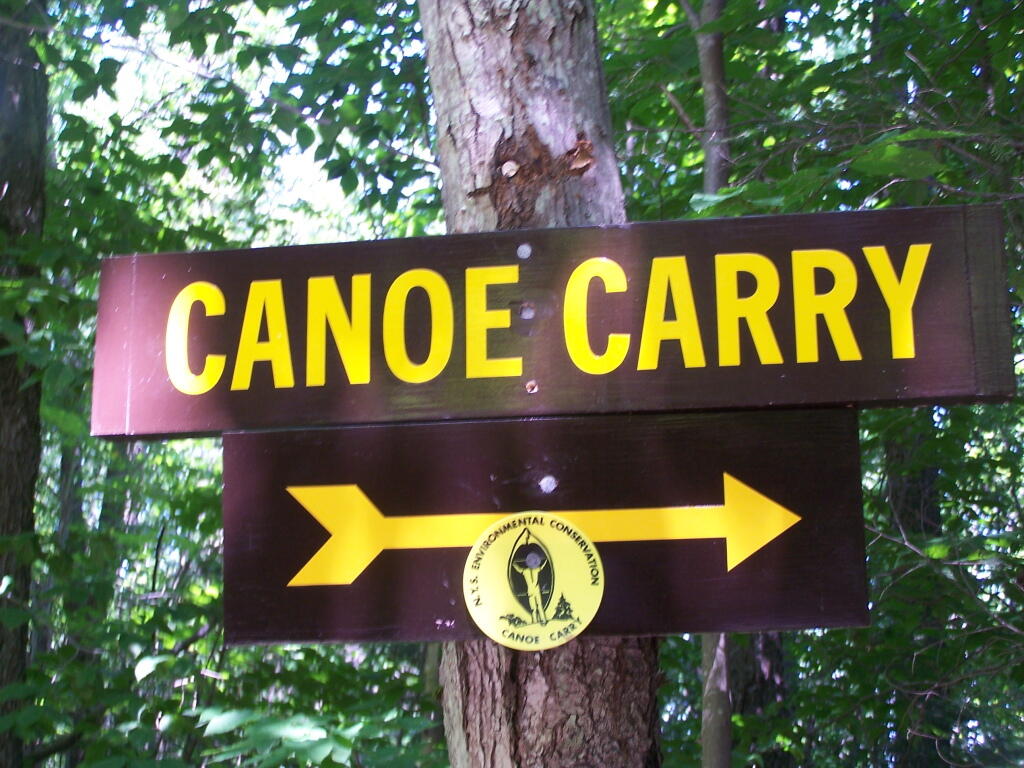


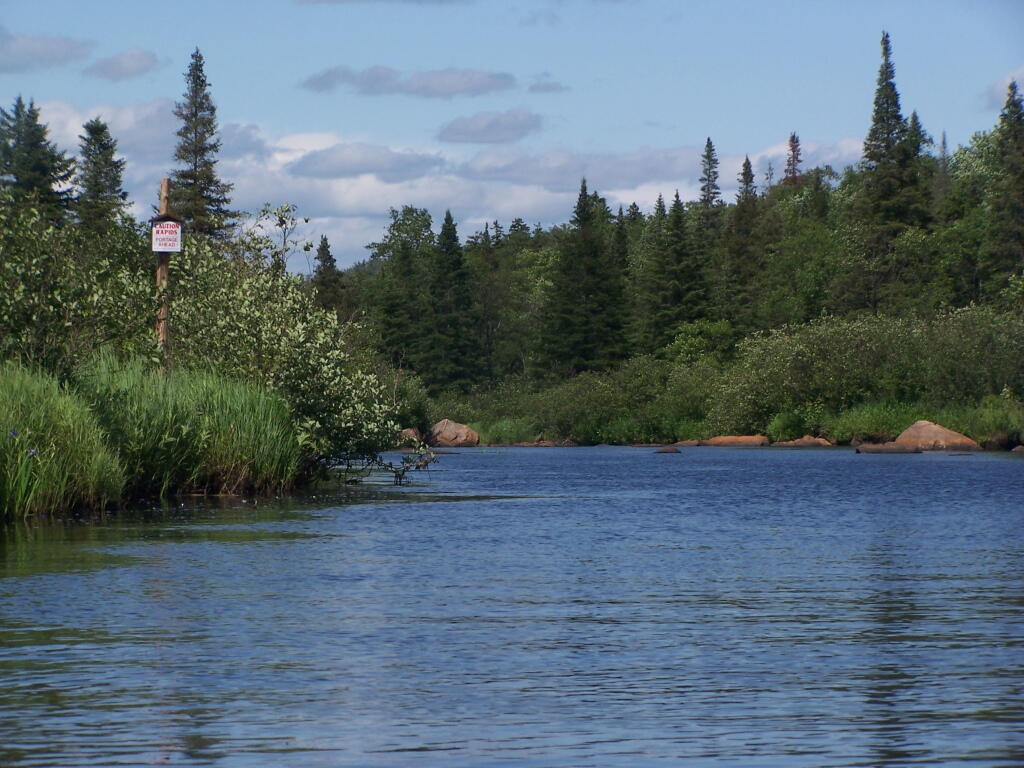
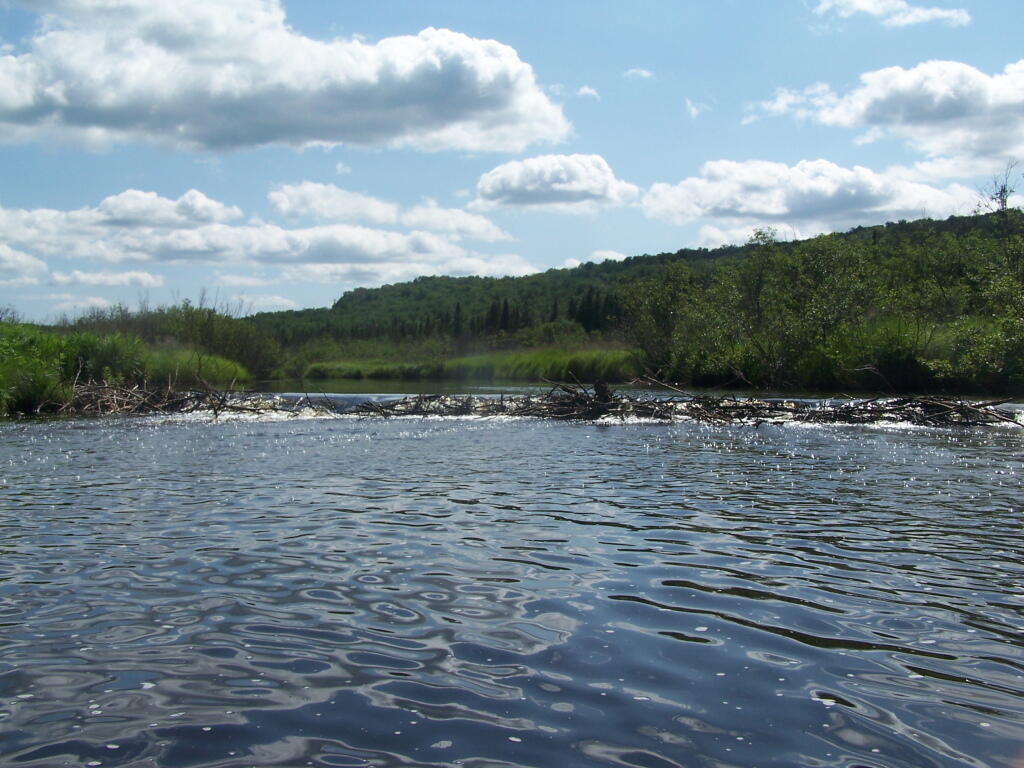

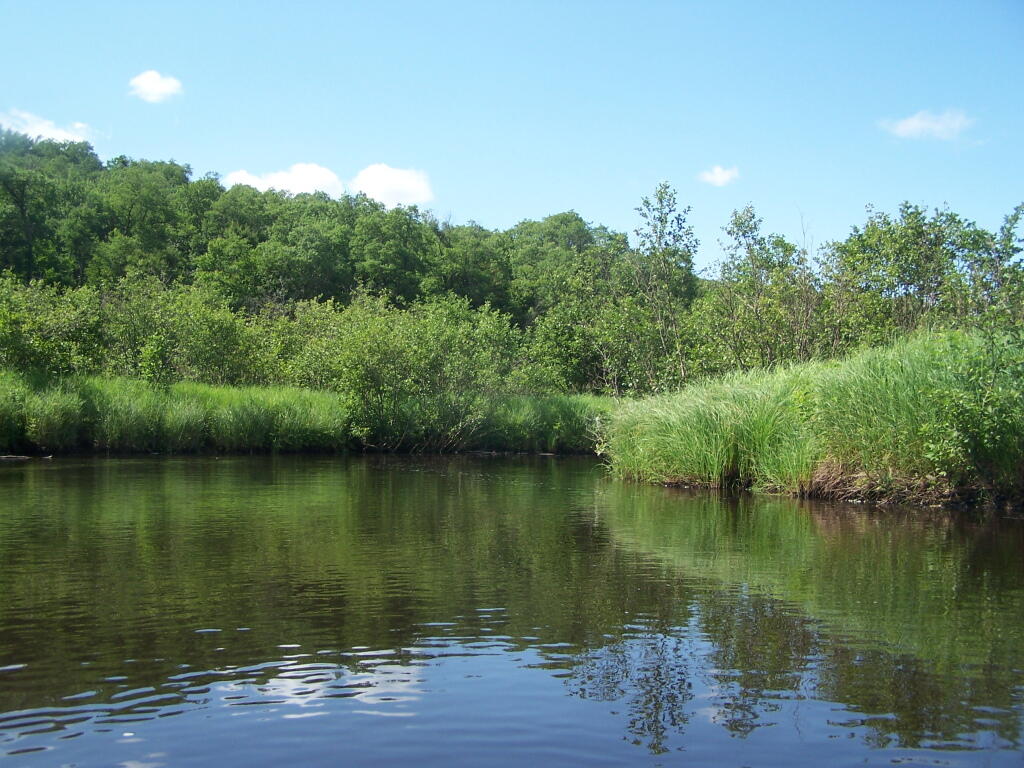
![Untitled [Expires December 16 2024]](https://andyarthur.org//data/photo_008174_large.jpg)
